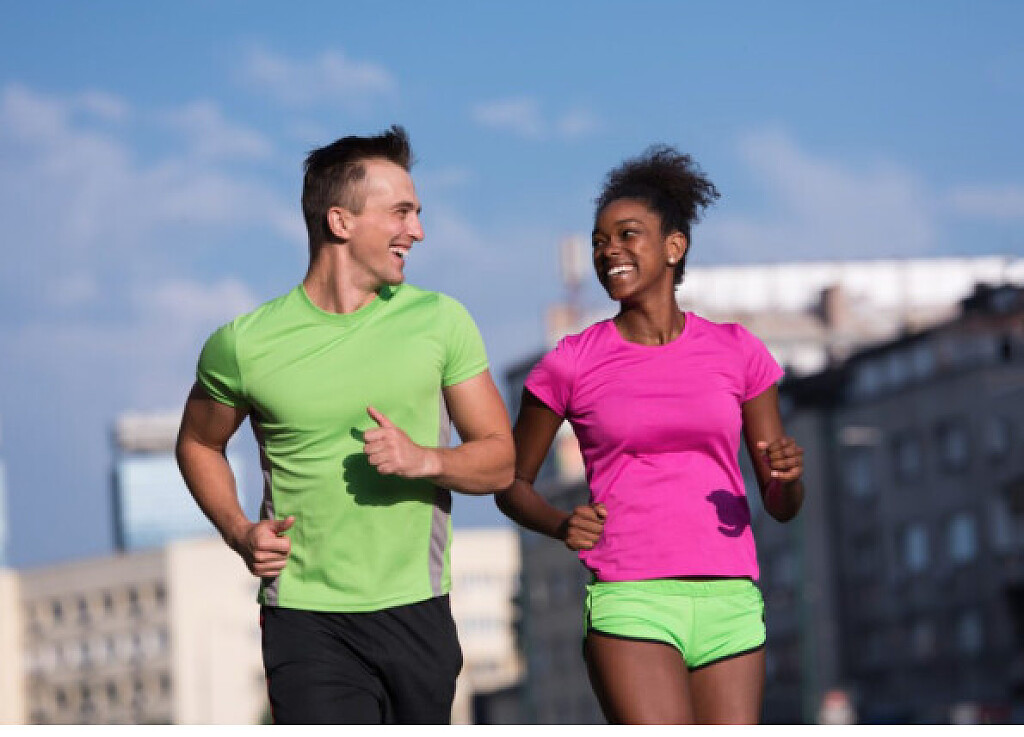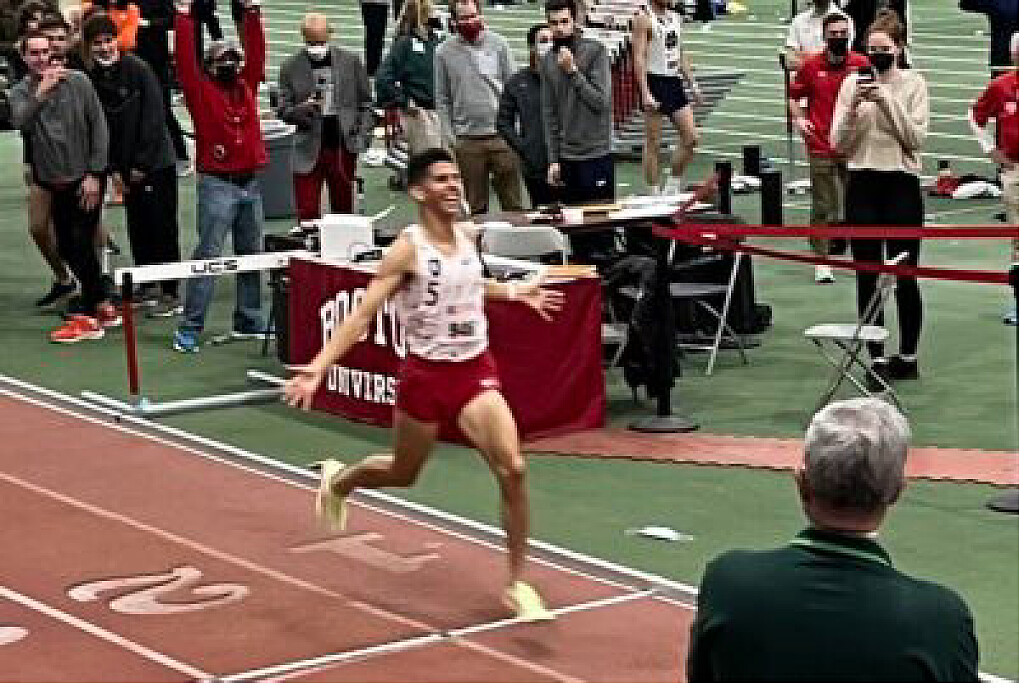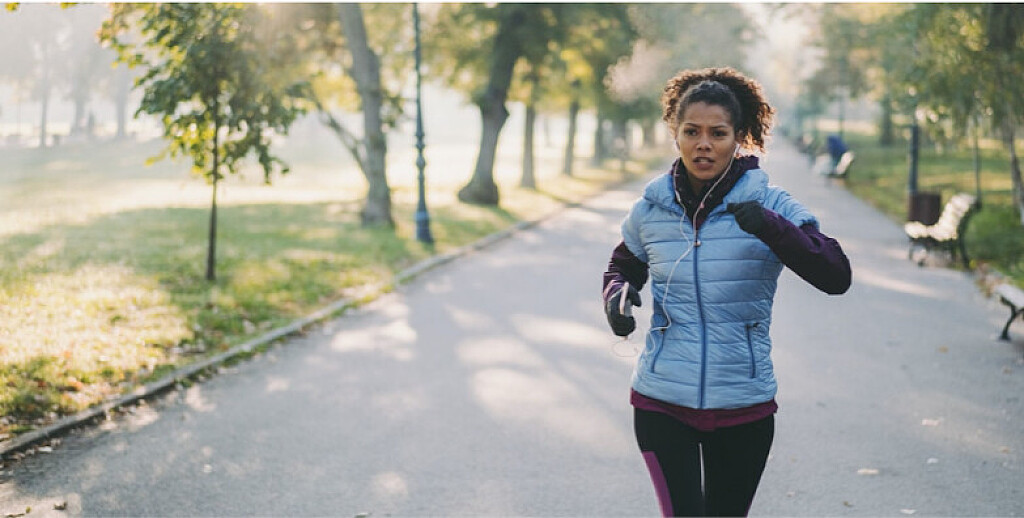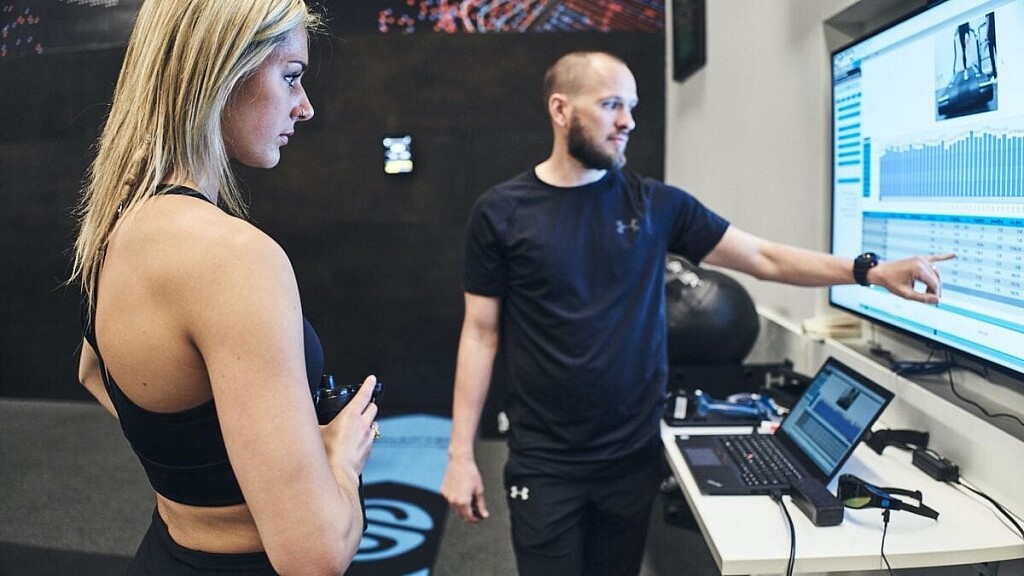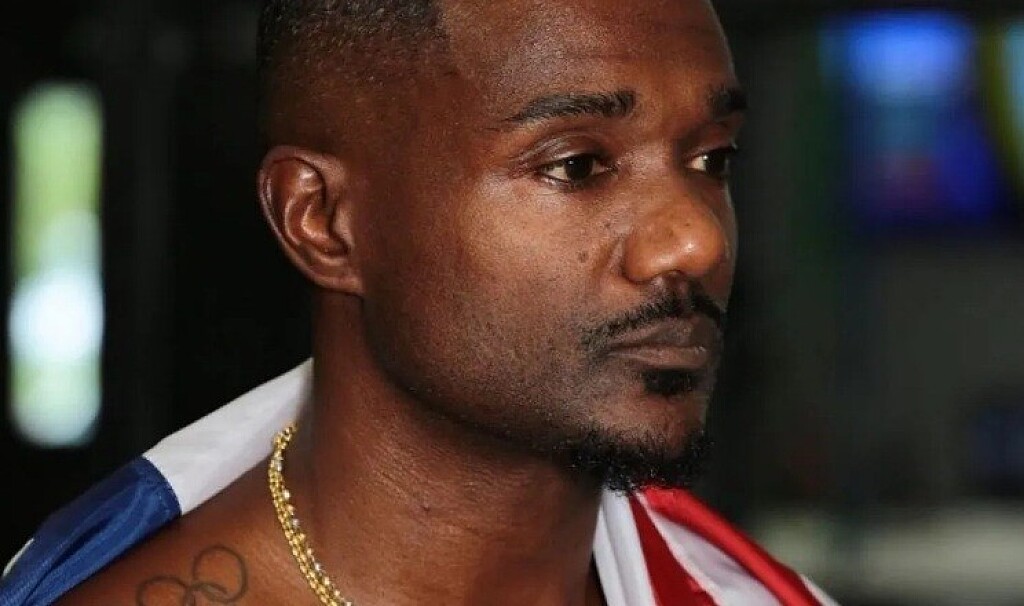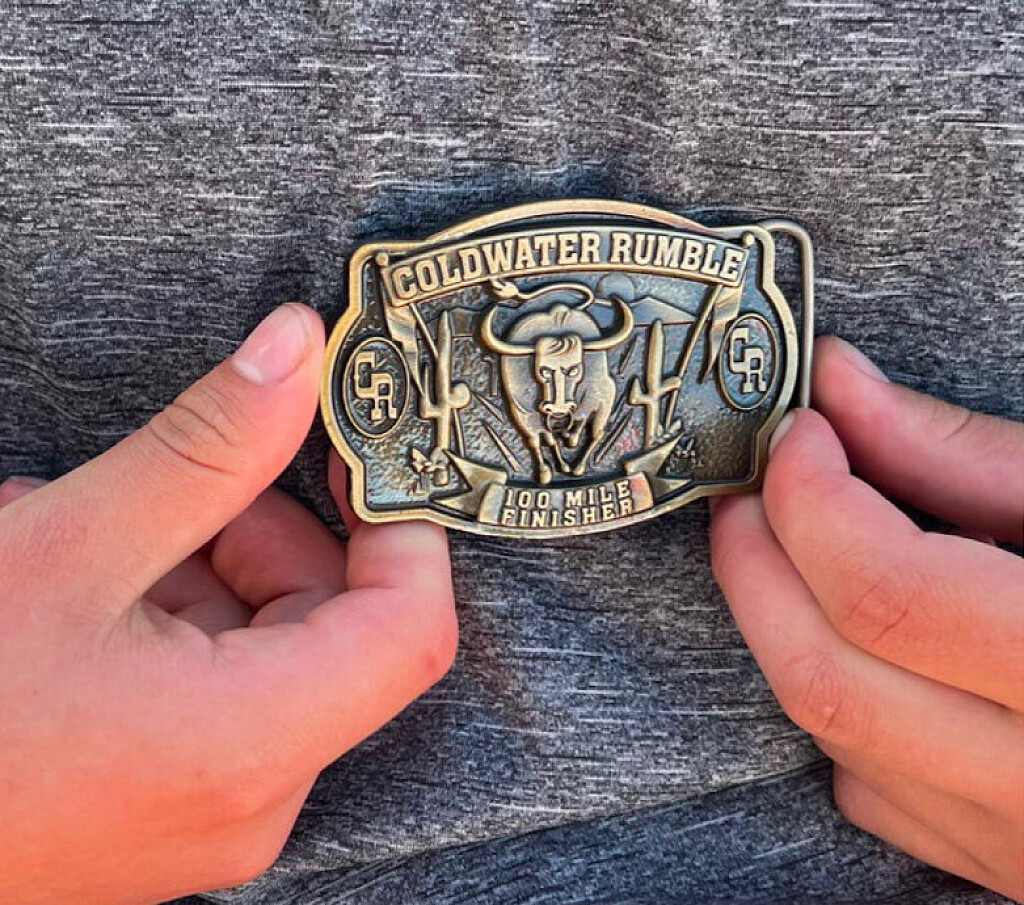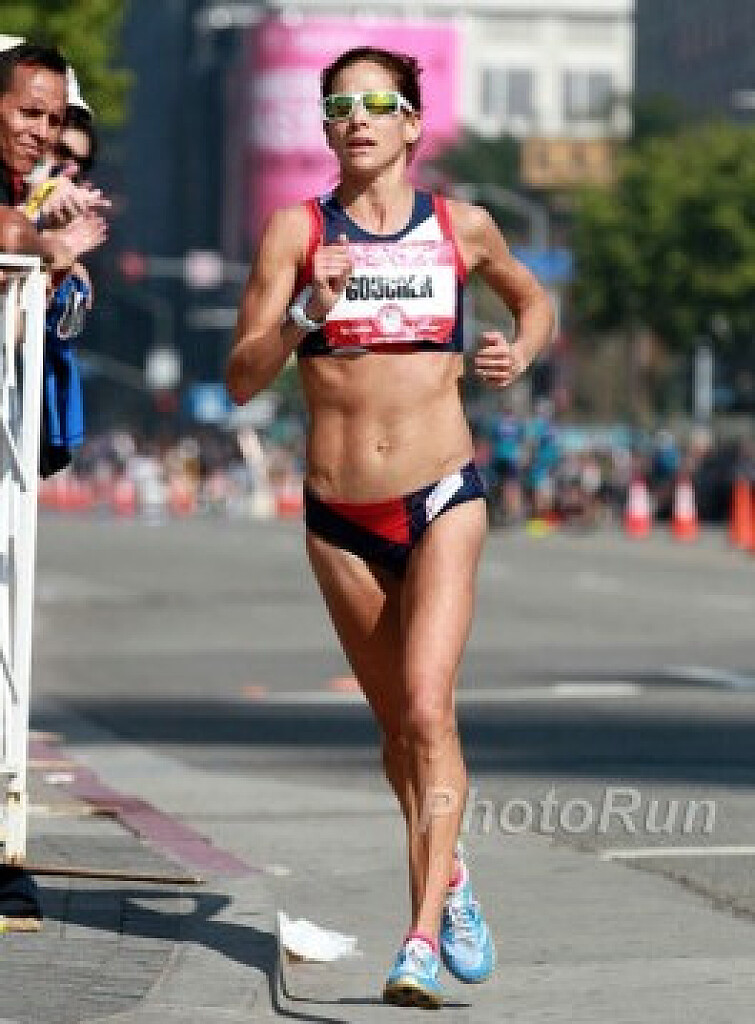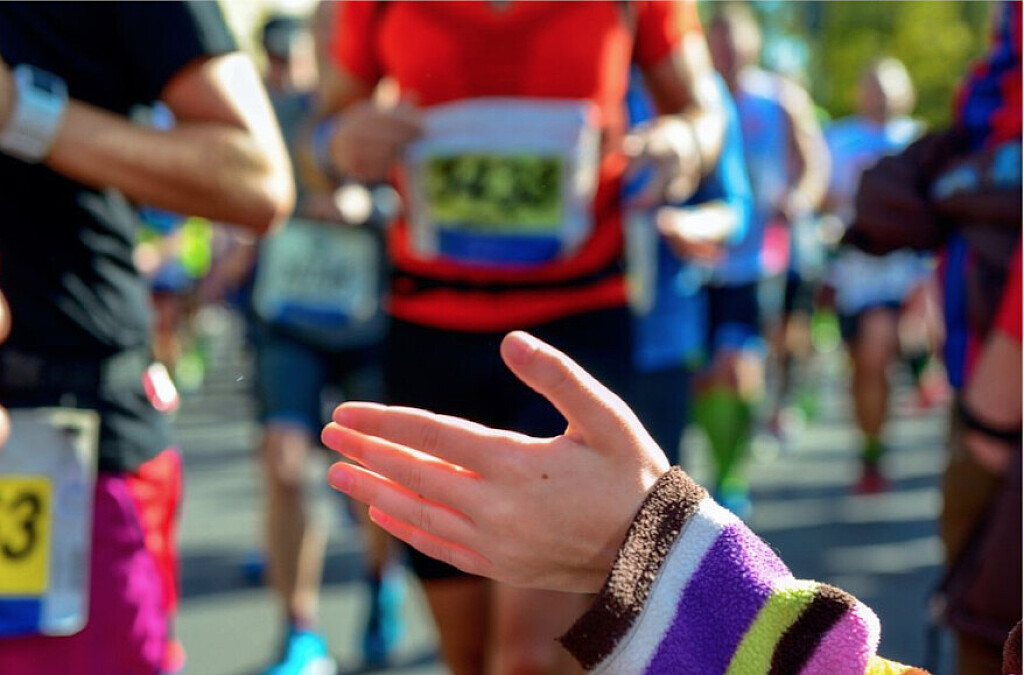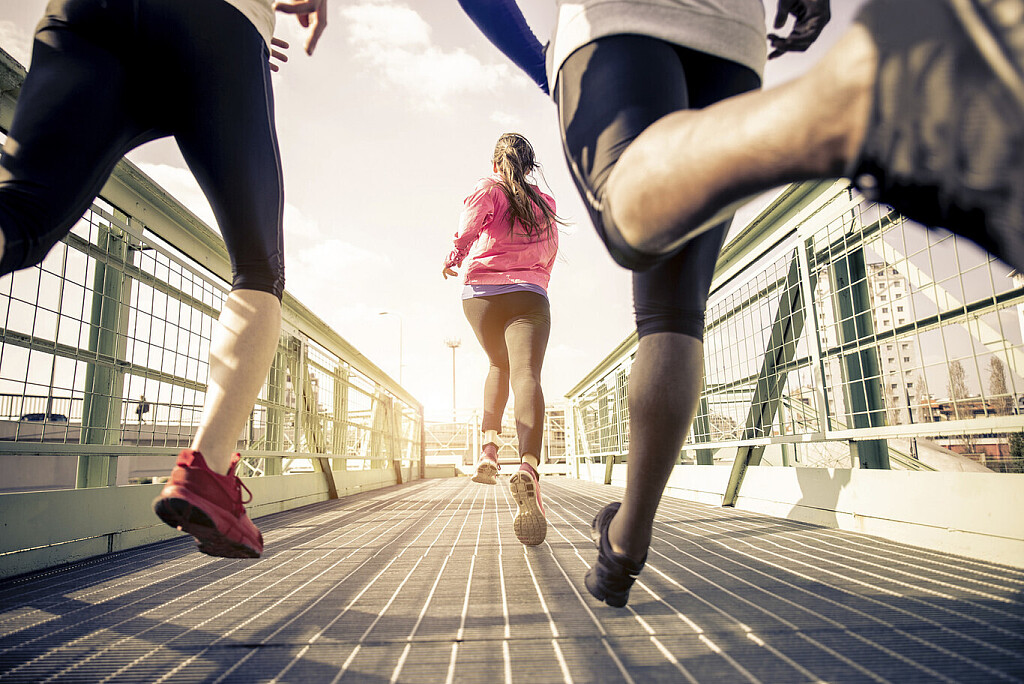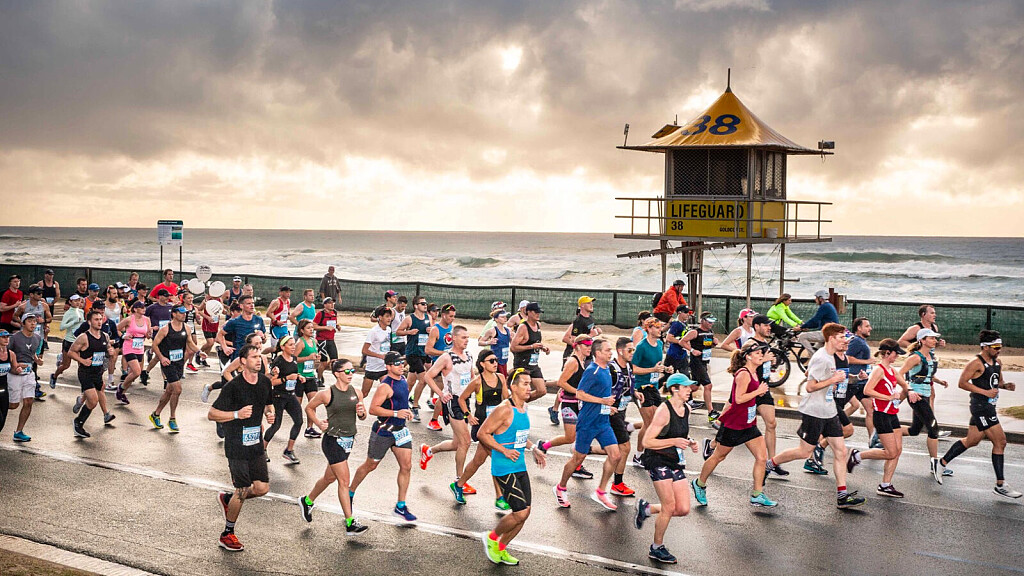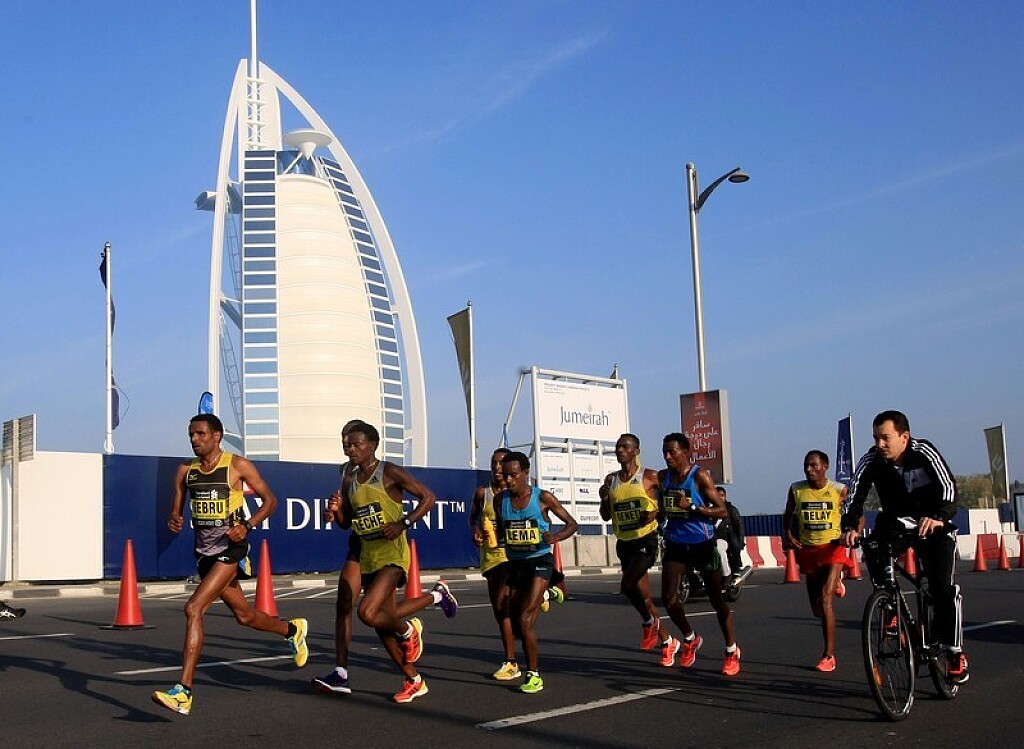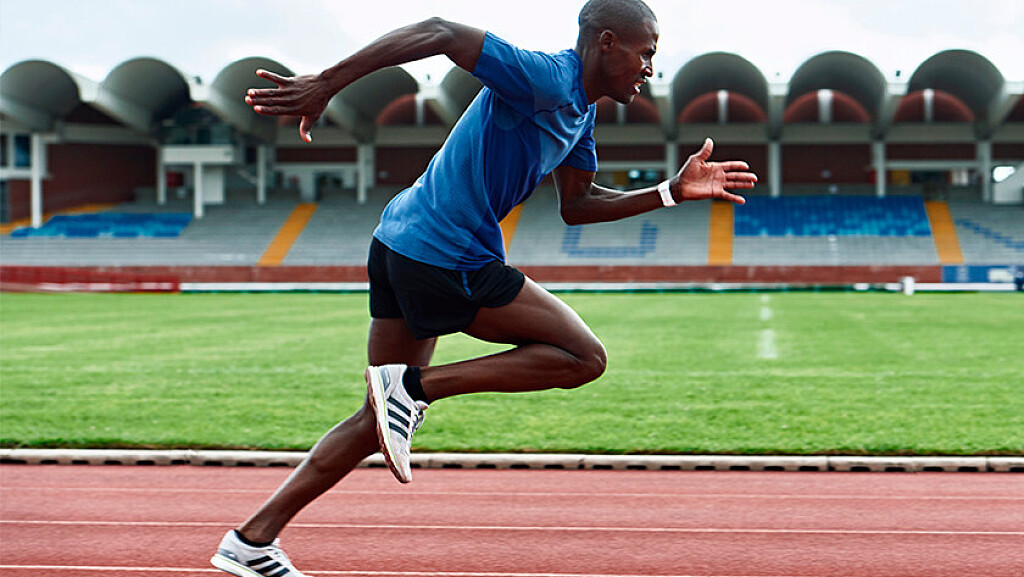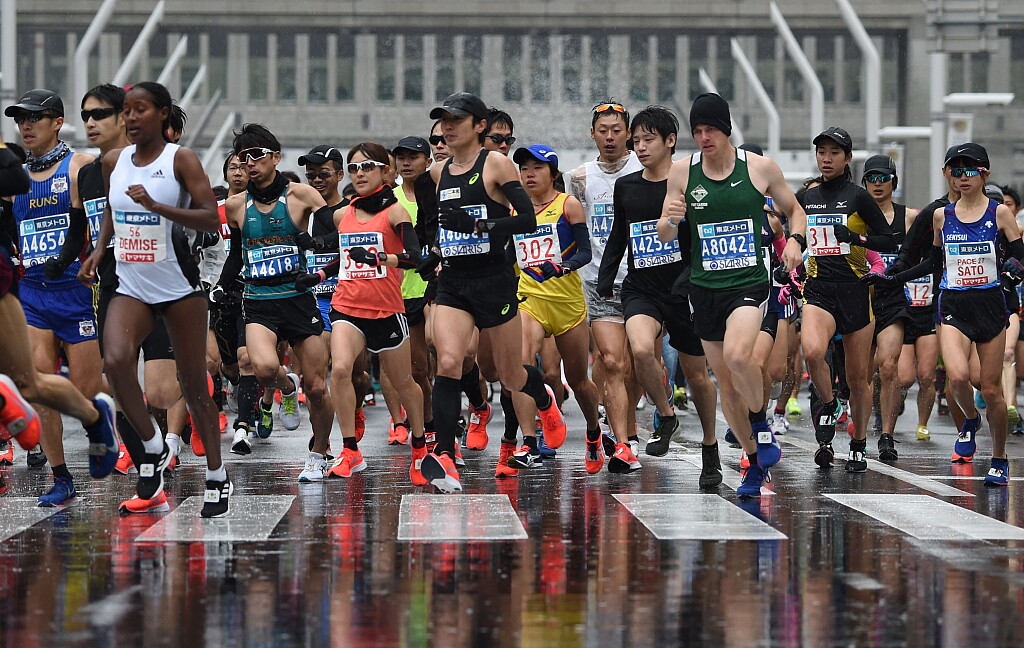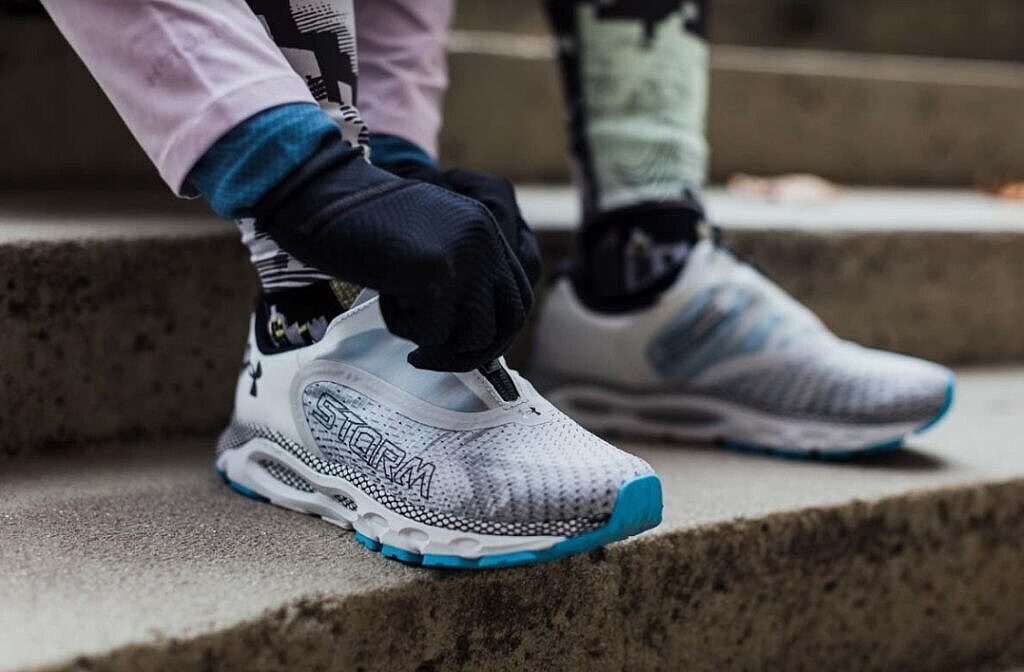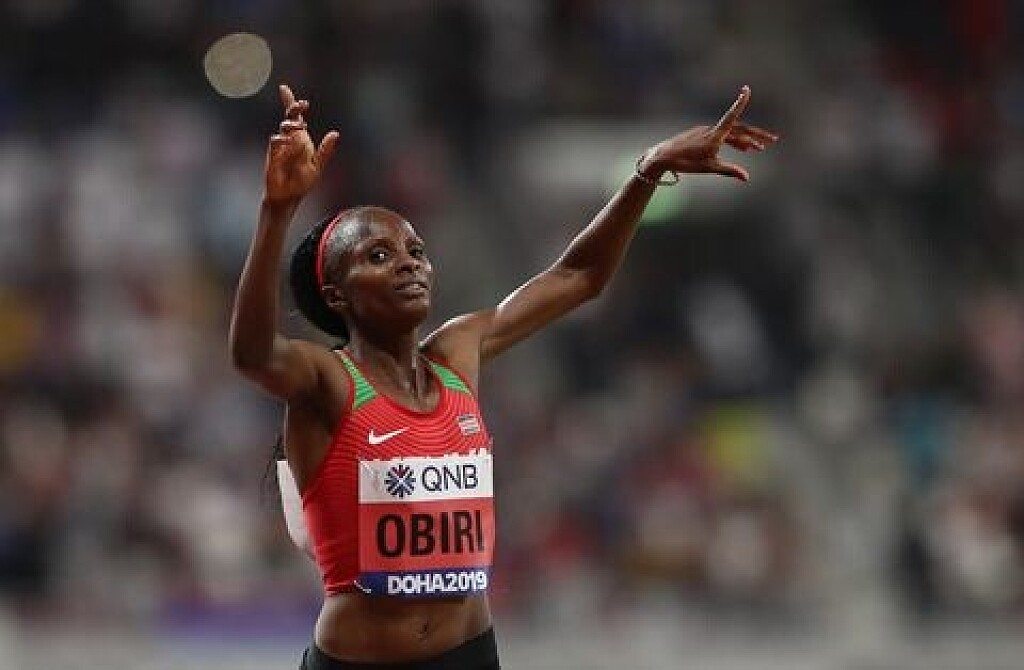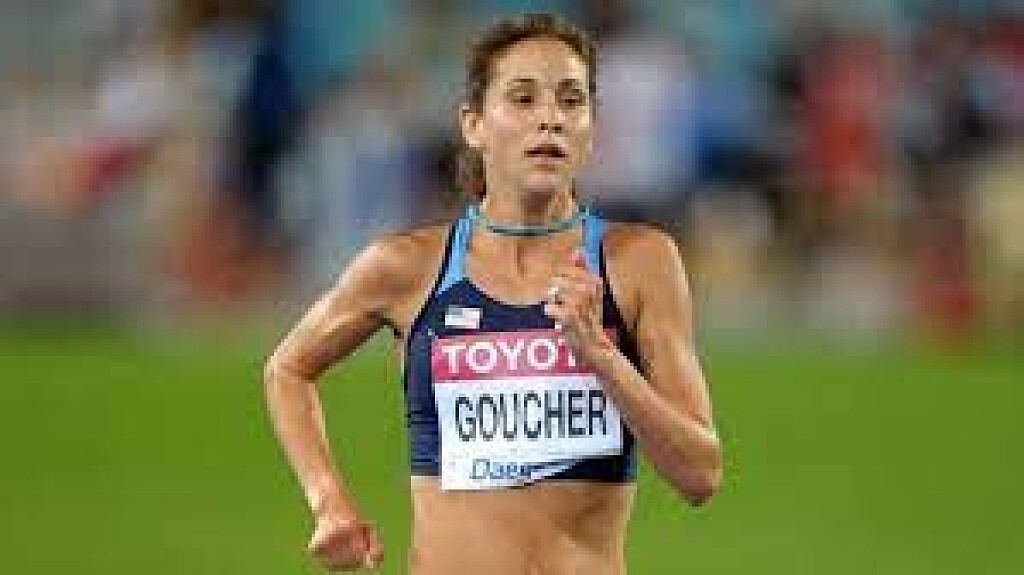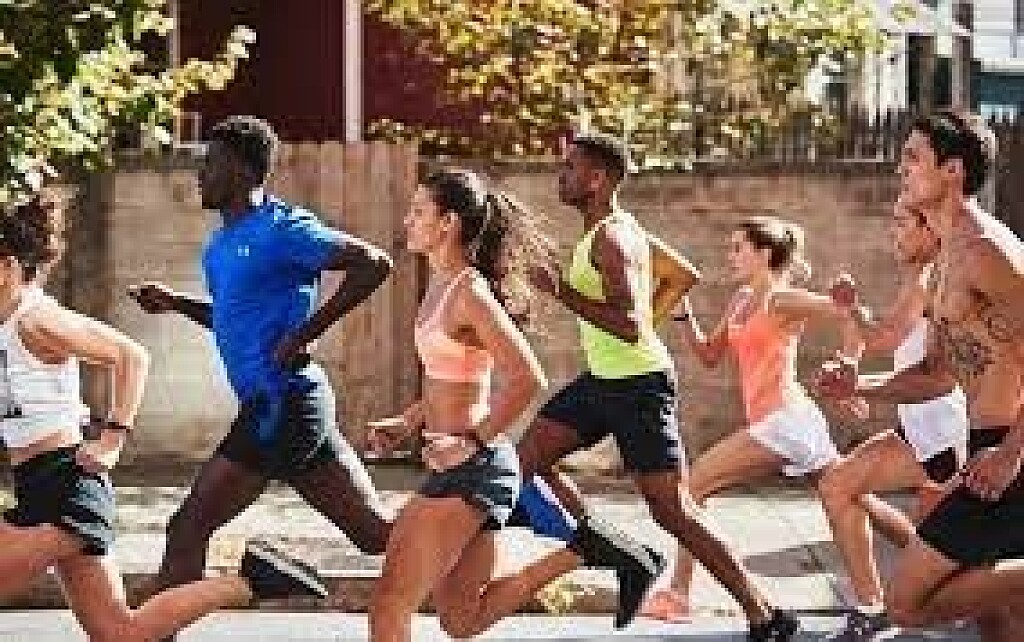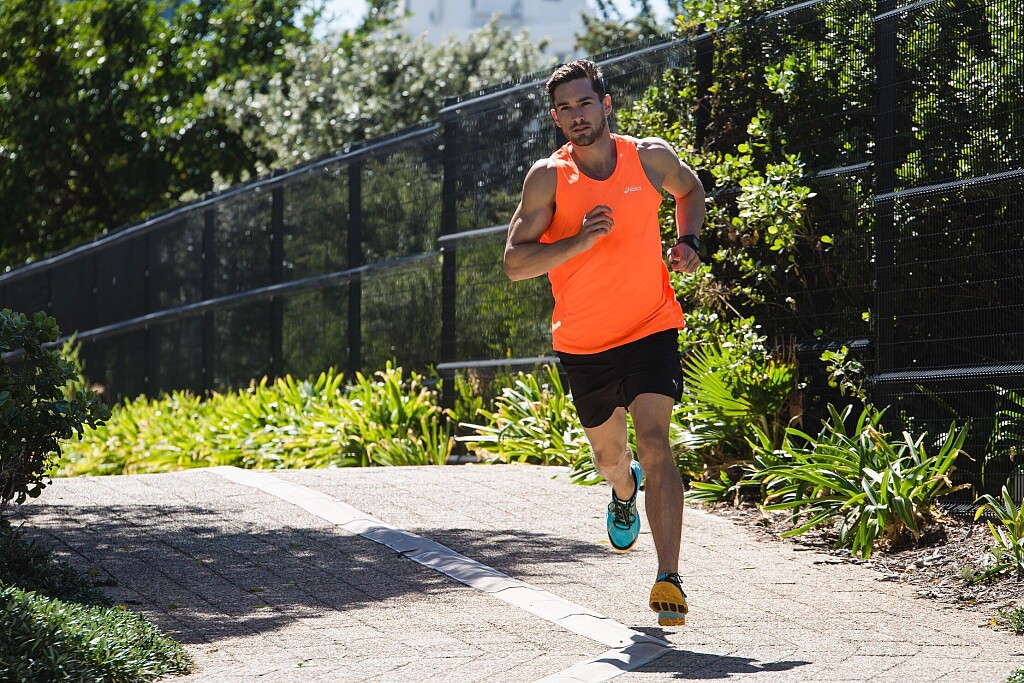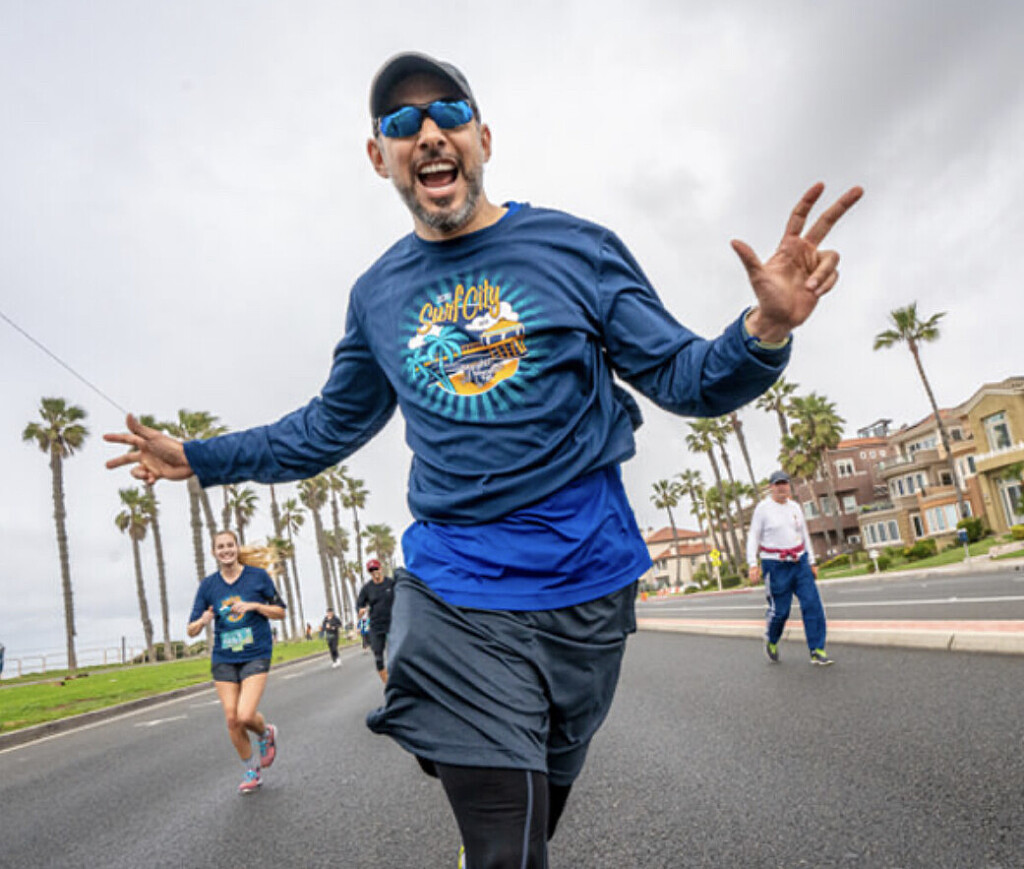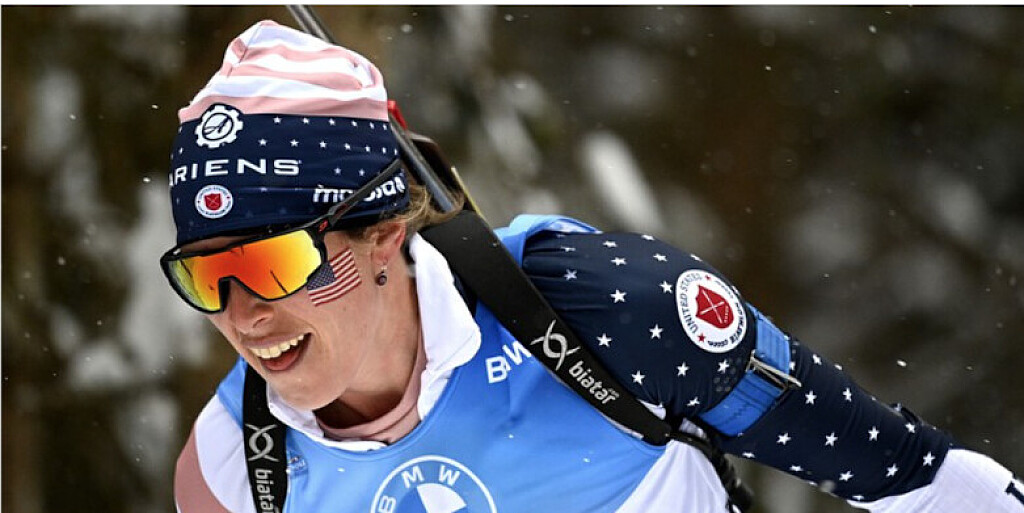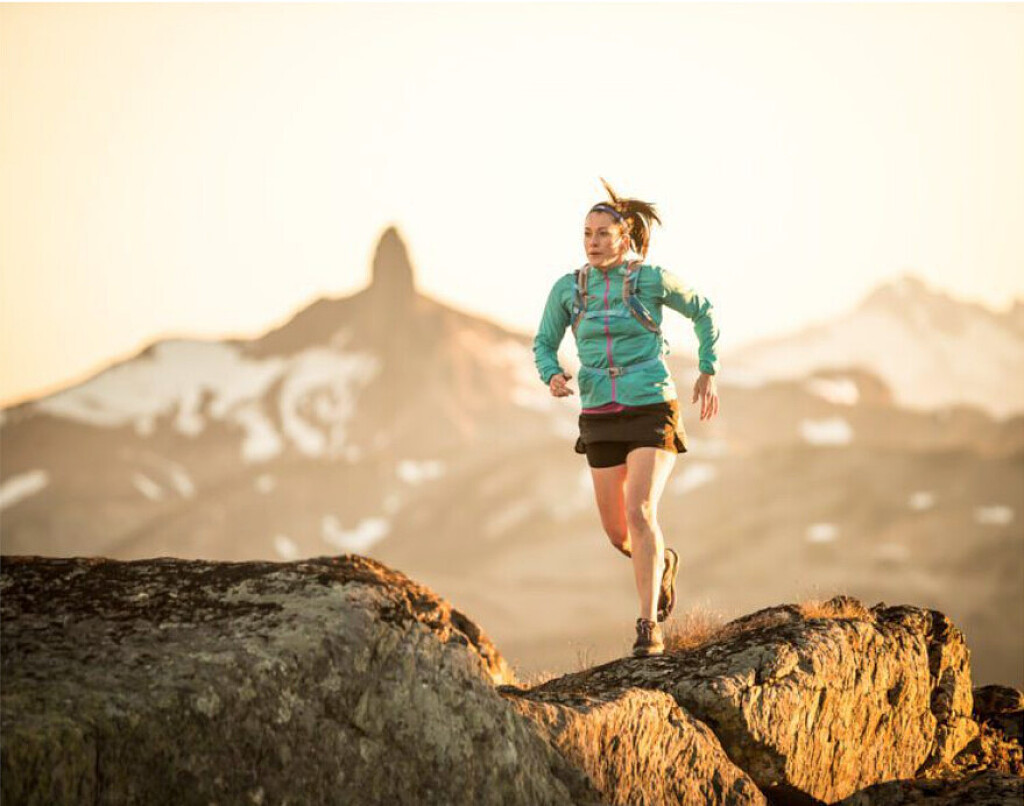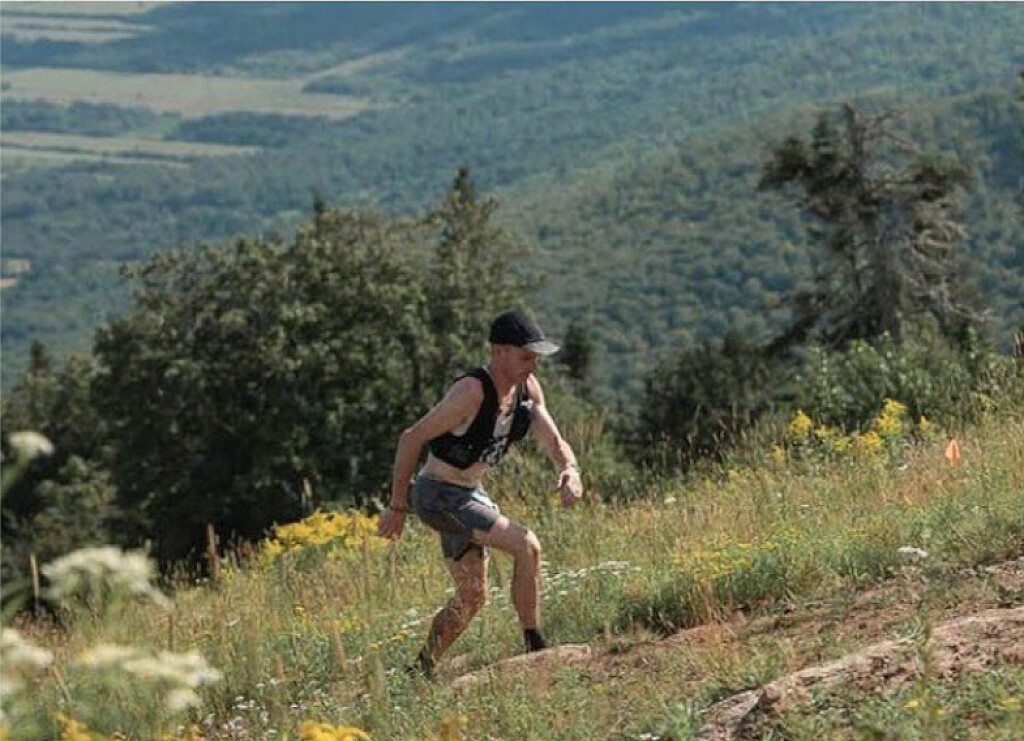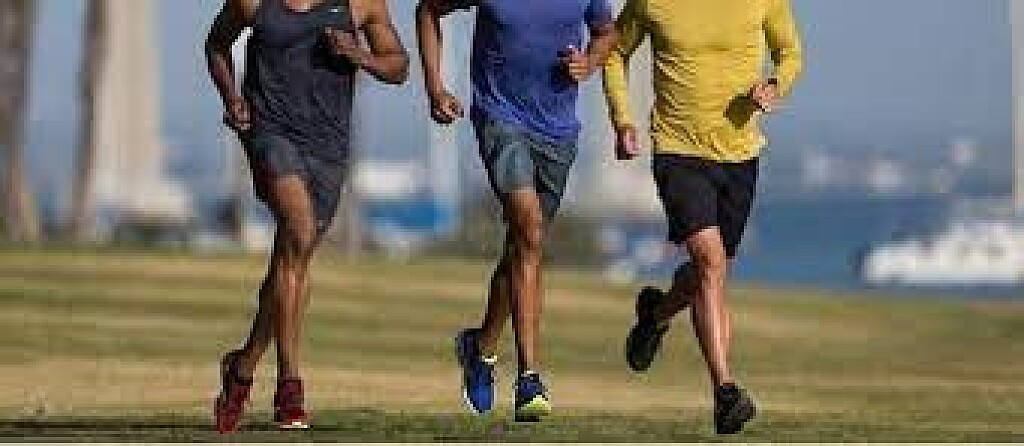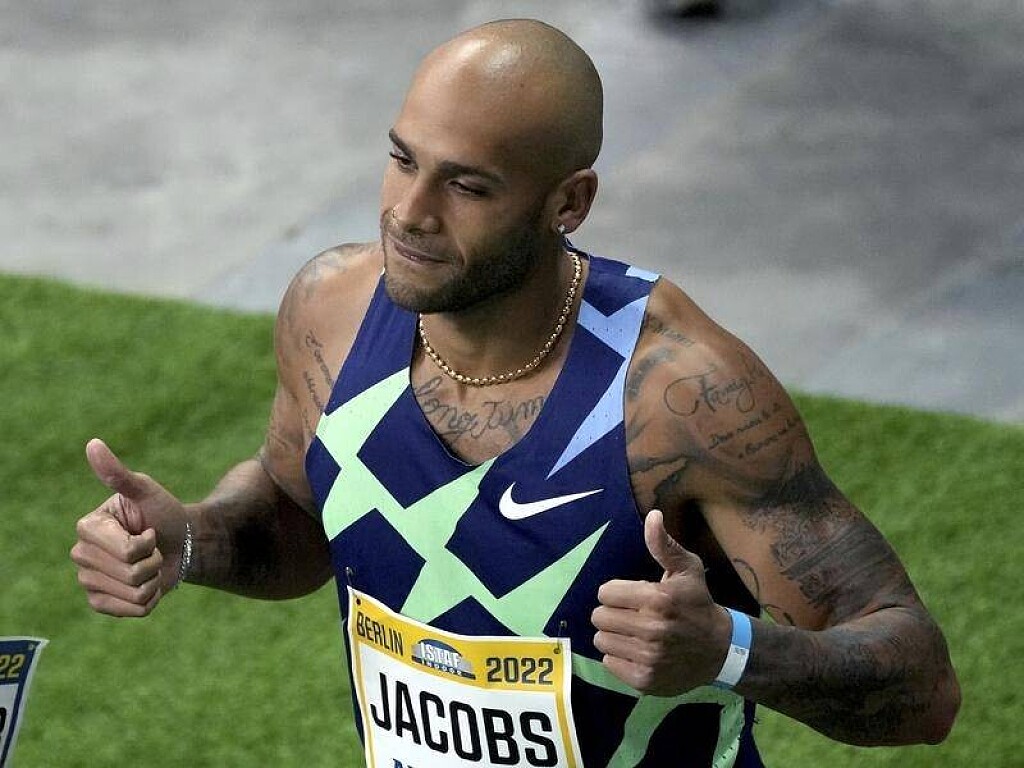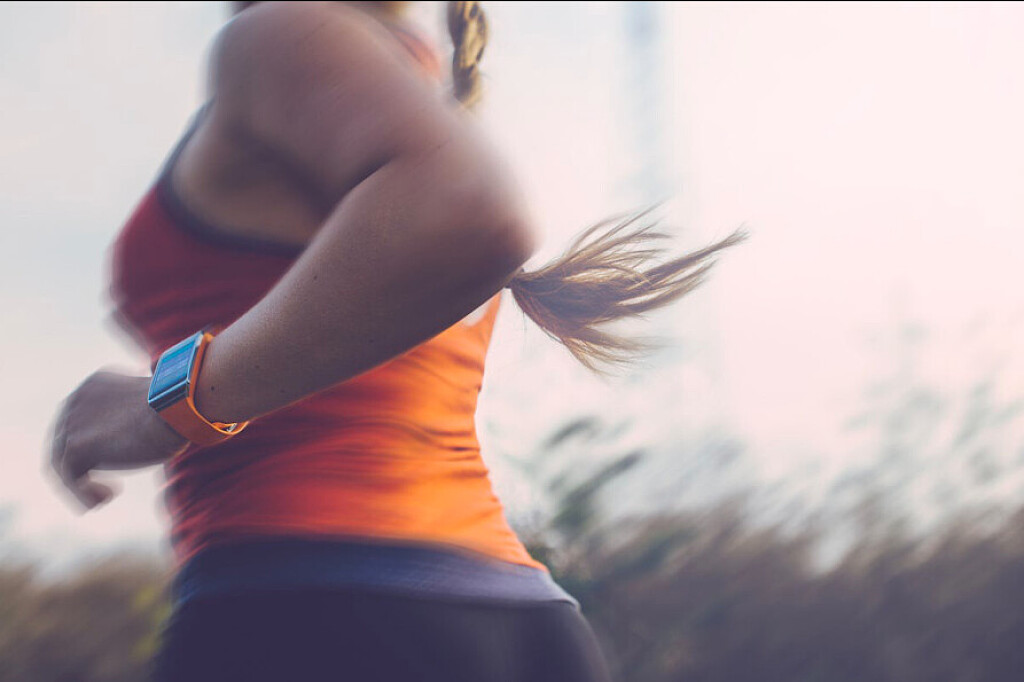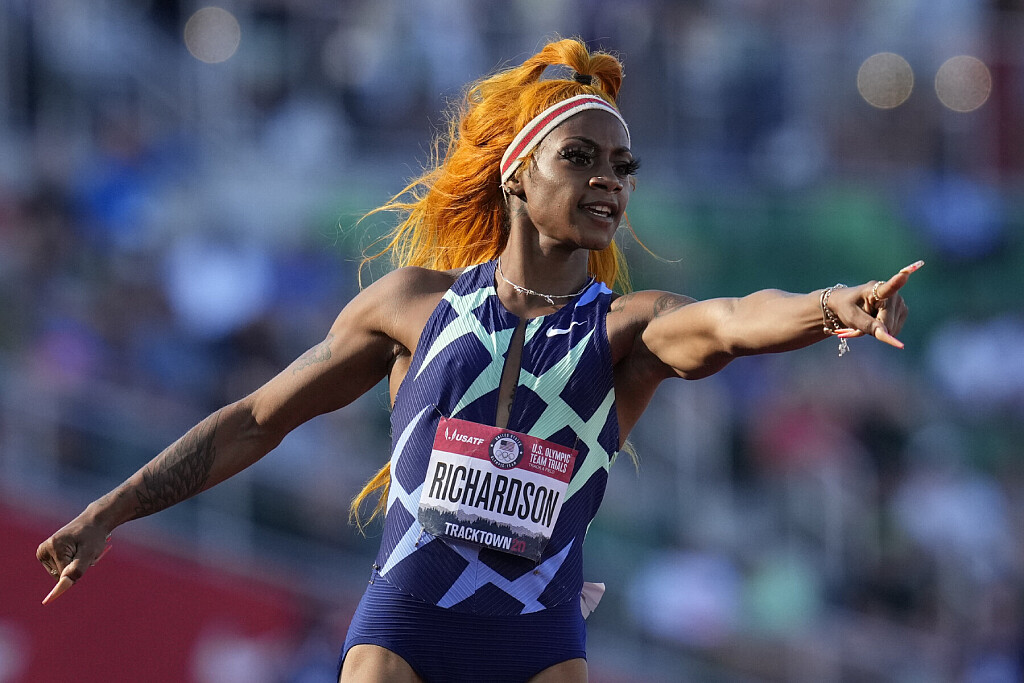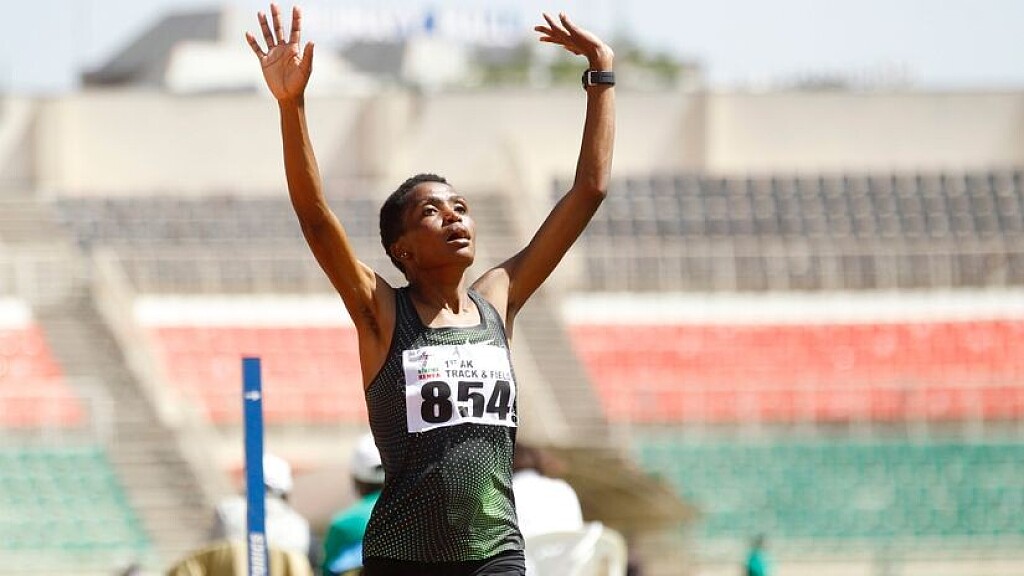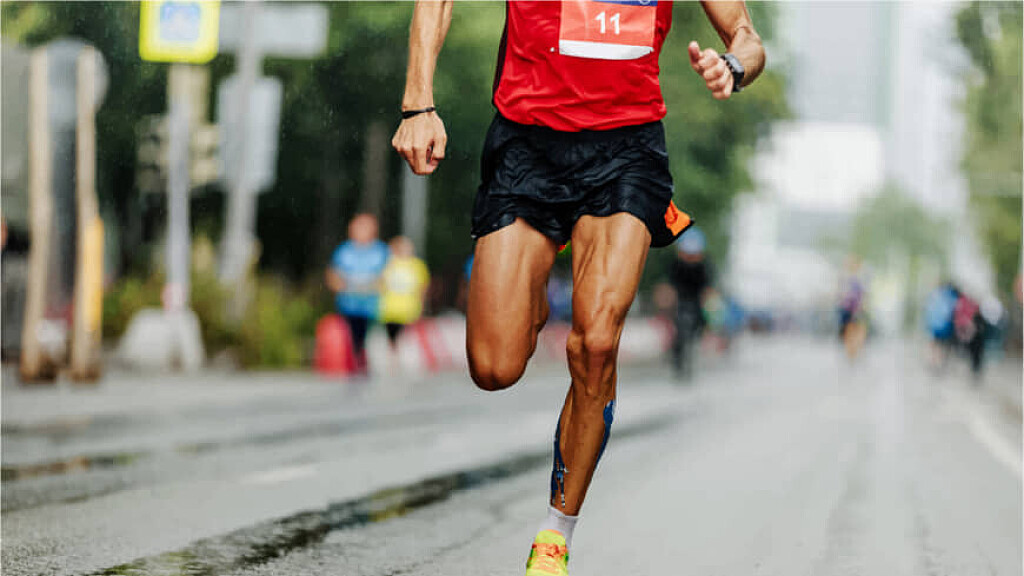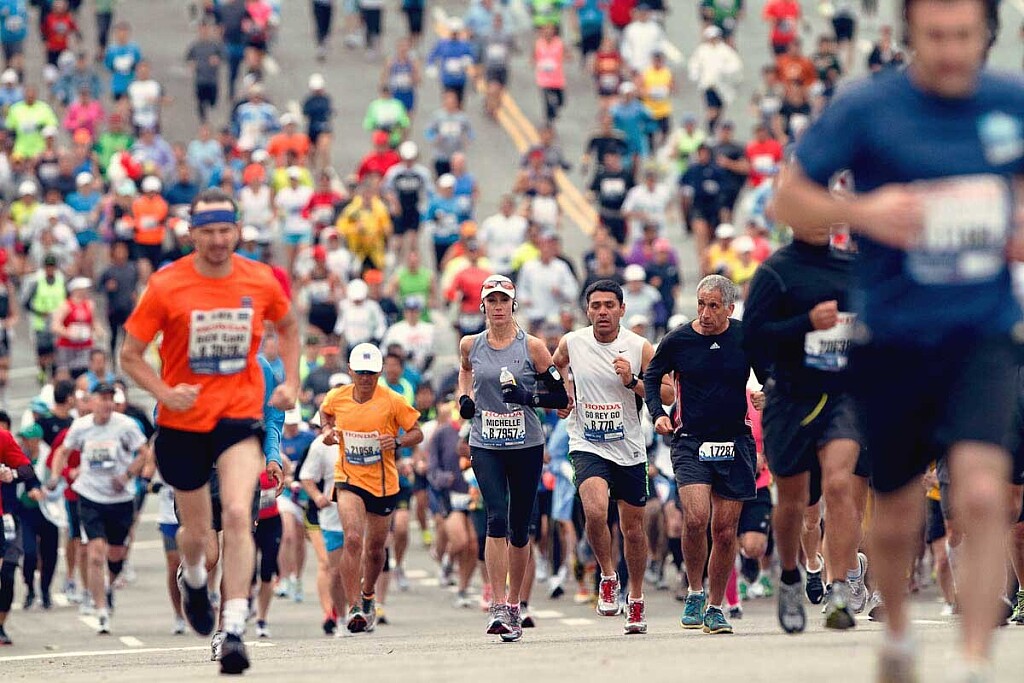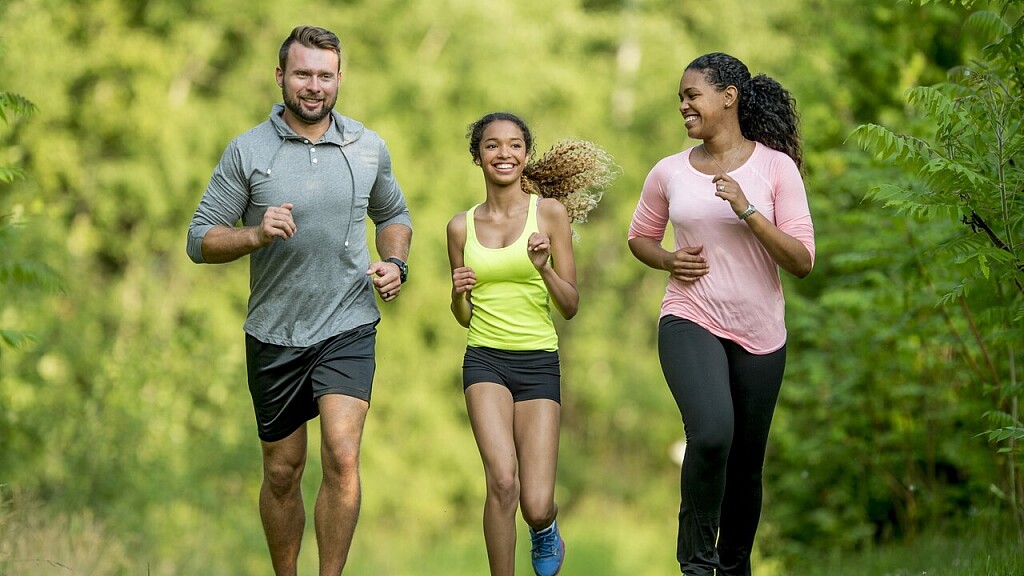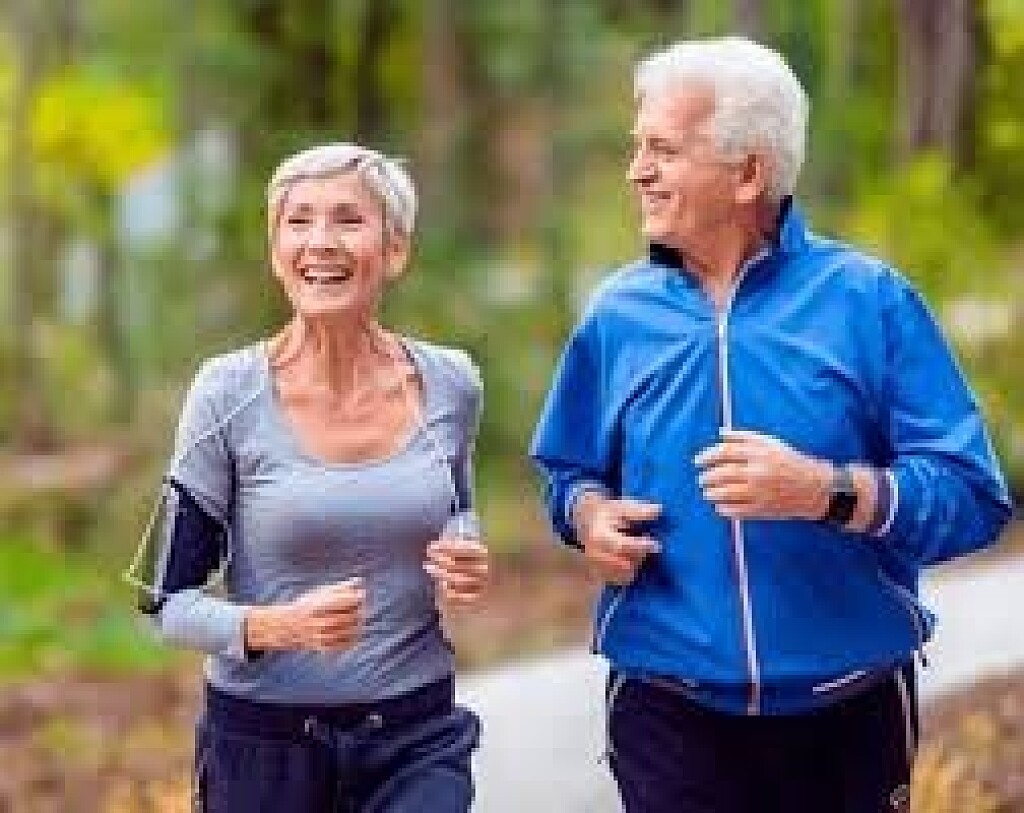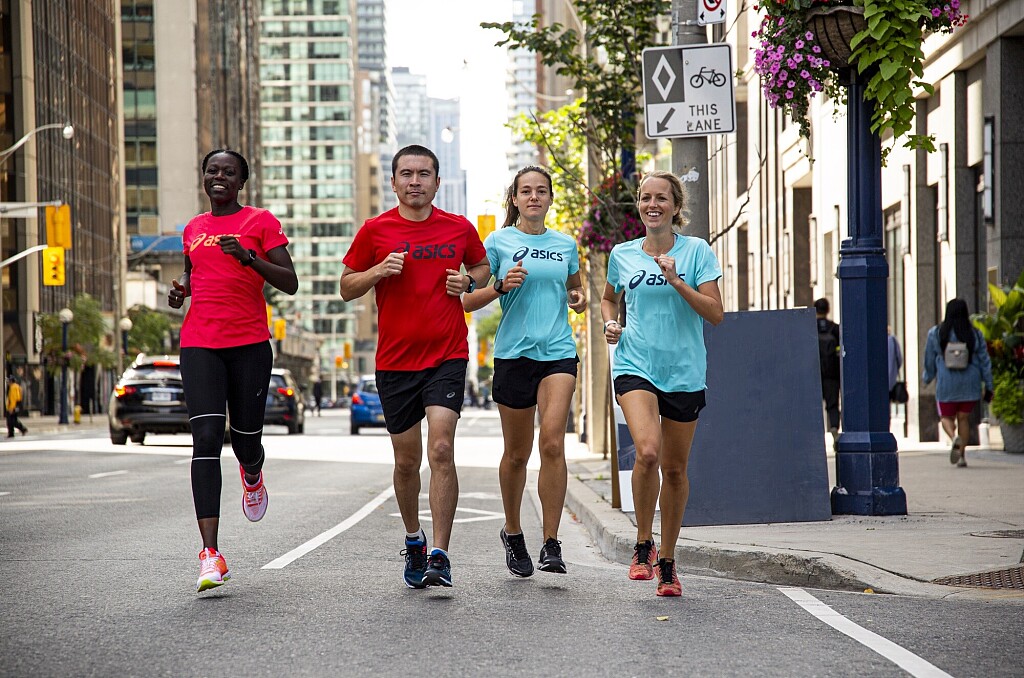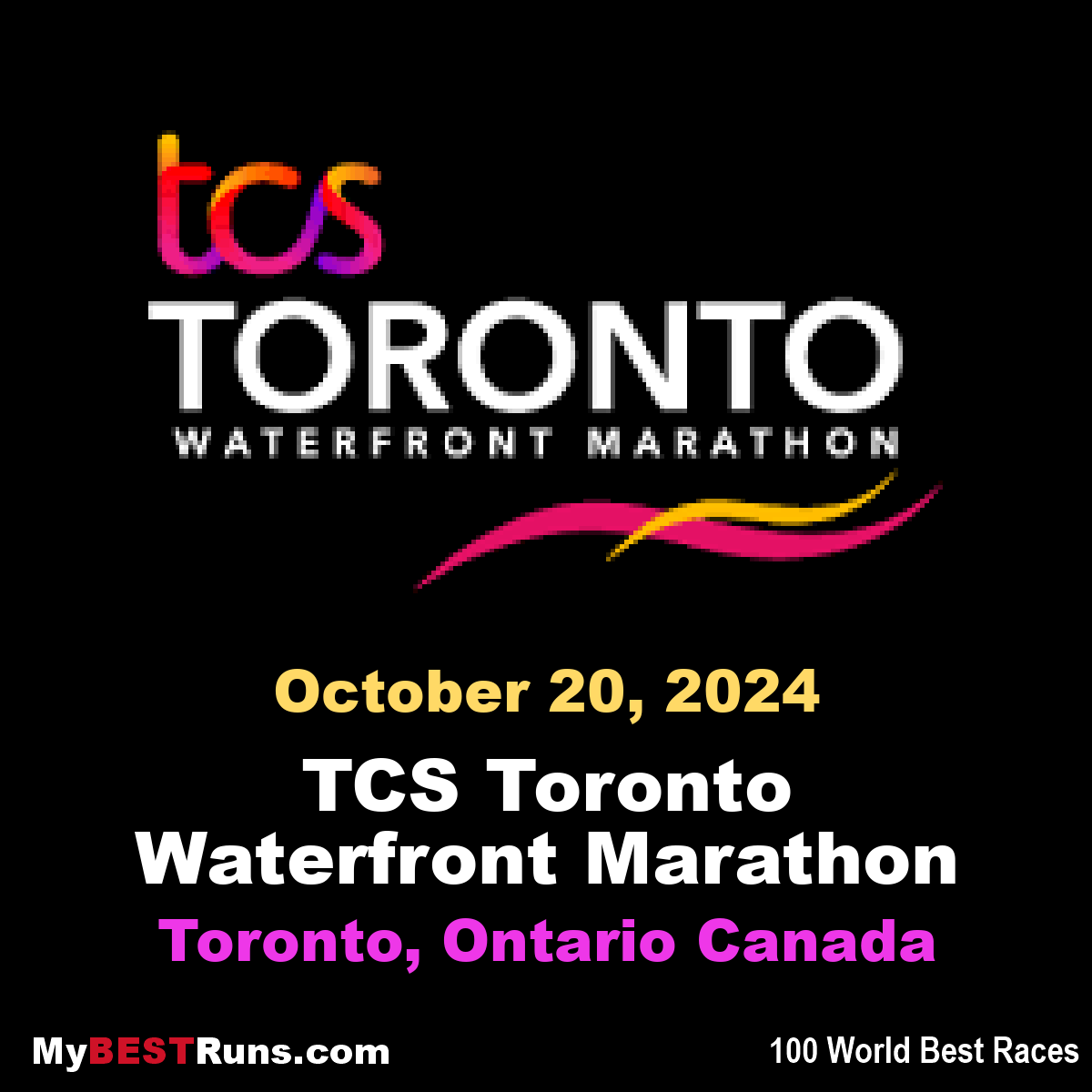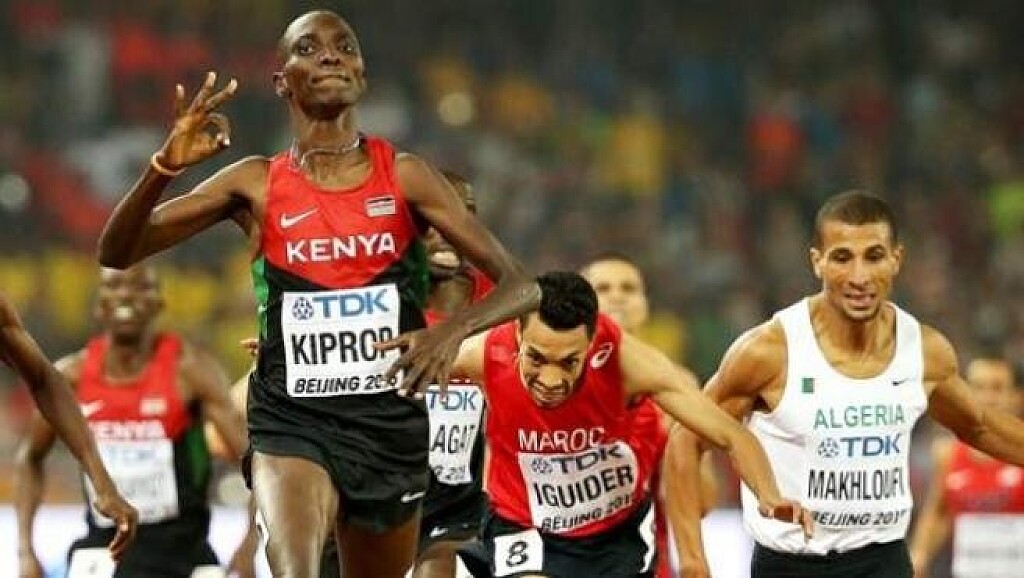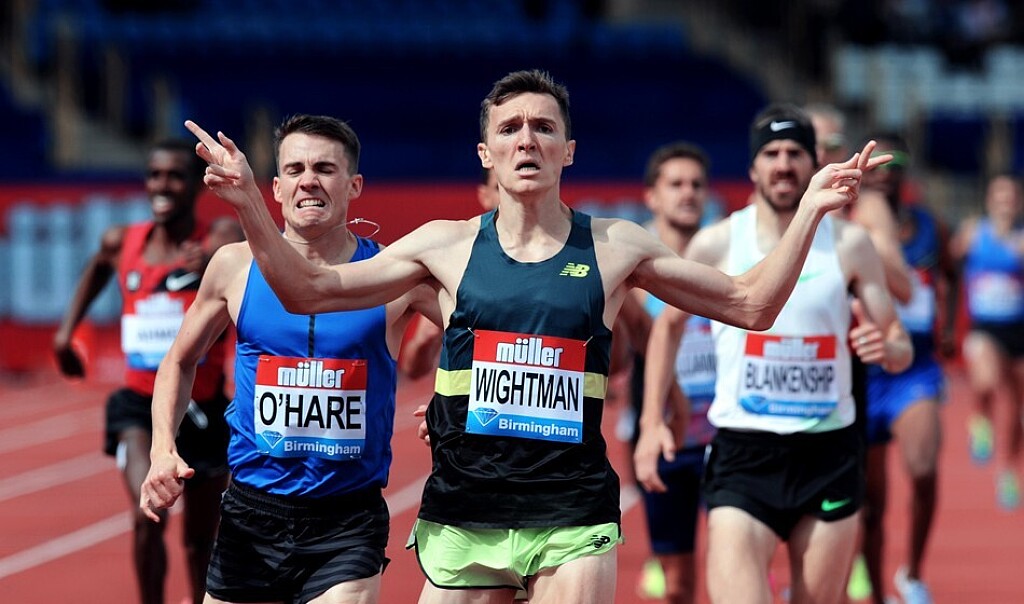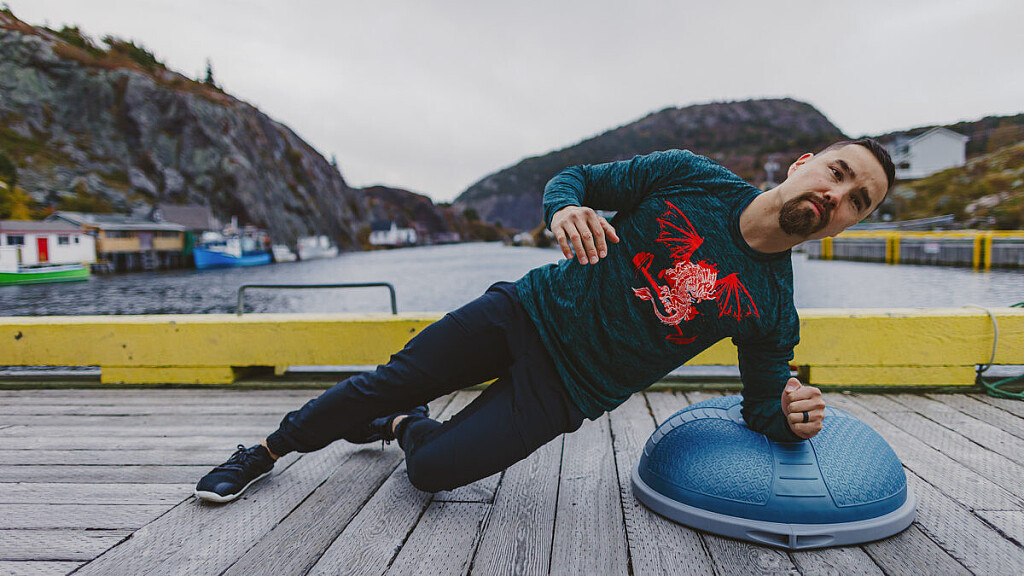Running News Daily
Running News Daily is edited by Bob Anderson. Send your news items to bob@mybestruns.com Advertising opportunities available. Train the Kenyan Way at KATA Kenya and Portugal owned and operated by Bob Anderson. Be sure to catch our movie A Long Run the movie KATA Running Camps and KATA Potato Farms - 31 now open in Kenya! https://kata.ke/
Index to Daily Posts · Sign Up For Updates · Run The World Feed
Is running a good idea for your first date?
One perk of running on the first date is that if it ends up going poorly, it's easier to run away
With Valentine’s Day right around the corner, you might be looking for some date ideas to spice up your love life. Your training could also use a boost, and you’re thinking of inviting your crush to go for a run on your first date. You’ve been on running dates before, but is running a good idea for a first date?
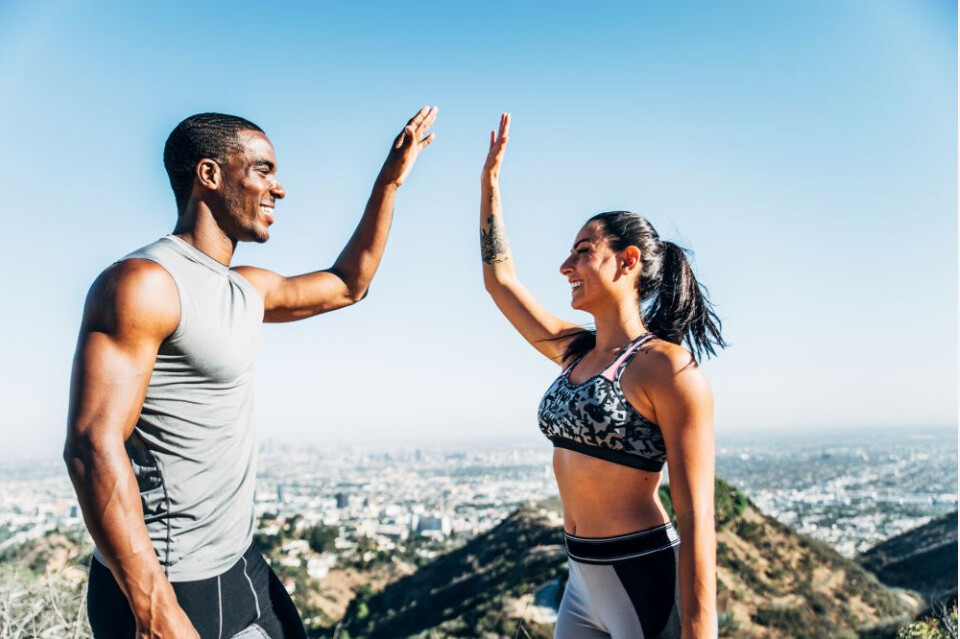
According to a study done by dating site PlentyOfFish, almost 75 per cent of users go for coffee or dinner on their first date. The run date is a non-traditional-style date, which presents many parties with a change of scenery and a chance to bond over their mutual love for the sport.
What’s attractive about running on a first date is the chance to chat while facing straight ahead (for the most part), and the fun of exploring a new route together. (Chances are, you don’t run the same routes, so it’ll be new for at least one of you.) Running is a great way to see something new while showing your date a cool spot they didn’t know about.
One perk of running on the first date is that if it ends up going poorly, you can cut it short. There’s no need to wait for a check on a run; if the date is going badly, it’s easy to make an Irish exit.
First dates can get expensive, especially if you are going on a lot of them. Running is typically inexpensive, plus you’re getting some exercise.
But before you propose a run for the first date, here are some caveats. First and foremost, plan to eat after the run, not before. The last thing you want on a first date is to be gassy, or to have to make an emergency pit stop because you had Indian food two hours before.
Second, find out what pace and distance your date is accustomed to running, and plan a route accordingly. The last thing you want is to get lost and to see your 8 km run turn into 18 km. And agreeing on a pre-set pace at which both of you can run comfortably will be crucial in securing that second date if things go well. Remember – the date is not a race. There’s no need to start ripping three-minute kilometres (and if you do, you probably won’t see your date again).
Last, bring a change of clothes, a towel and maybe a stick of deodorant to clean up afterward, especially if you’re planning to hang out together for dinner or coffee.
(02/13/2022) ⚡AMPGrant Fisher (12:53.73) DESTROYS US 5,000 Record in Boston, Moh Ahmed (12:56.87) and Marc Scott (12:57.08) Break Canadian and British Records
As the runners were getting ready for the elite section of the men’s 5000 meters at the 2022 Boston University David Hemery Valentine Invitational on Saturday evening, we should have known we were in for a treat. After all, the slow heat had just been won in 13:05.
It’s crazy, when you think of it: Bowerman Track Club coach Jerry Schumacher had decided Woody Kincaid, the reigning US 10,000-meter champion, was not quite ready to mix it up with his BTC teammates in the fast section and Kincaid wound up running 13:05.56, at the time the second-fastest indoor 5,000m ever by an American.
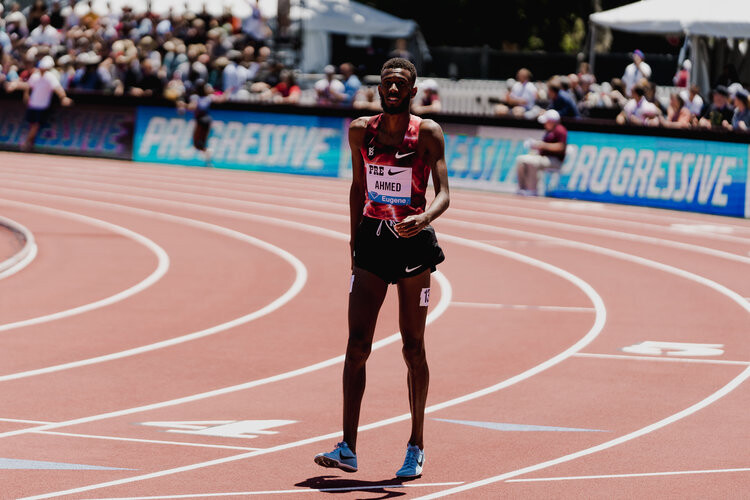
Just as crazy: Schumacher was kind of right. Because what we saw in the fast heat was the deepest 5,000-meter race ever contested on US soil, indoors or out.
Grant Fisher, a former high school phenom who won two Foot Locker titles and broke 4:00 in the mile while balancing soccer with running, delivered on his immense promise and ran 12:53.73 to win the race, smash Galen Rupp’s American indoor record of 13:01.26, and come within a whisker of Bernard Lagat’s American outdoor record of 12:53.60. He is now the fifth-fastest human ever at 5,000 meters indoors, one spot ahead of a guy by the name of Eliud Kipchoge.
Fisher’s Bowerman teammate Moh Ahmed, the Olympic silver medalist last year, was next across, running 12:56.87 to break his own Canadian indoor record of 13:04.60. Marc Scott completed the BTC national record sweep in third, and like Ahmed, Scott lowered his own European indoor record, taking it from 13:08.87 to 12:57.08.
In the process, Scott became the first man born in the United Kingdom – and just the third born in Europe – to break 13:00, indoors or out. The race marked the first time that three men broke 13:00 in the same race indoors (only once before had even two done it in the same race).
The times were so fast up front that would-be historic performances were relegated to also-ran status. Emmanuel Bor ran the second-fastest time in US
indoor history (under Rupp’s previous AR) but was only 4th (13:00.48). Sam Atkin of Great Britain and Jonas Raess of Switzerland both ran faster than the previous European indoor record but had to settle for 5th (Atkin in 13:03.64) and 6th (Raess in 13:07.95).
Florida State’s Adriaan Wildschutt of South Africa ran the second-fastest NCAA time ever indoors and third-fastest under any conditions – 13:09.20 – setting a national indoor record in the process and he was only 5th – in the B heat. Notre Dame’s Dylan Jacobs ran 13:14.04, #4 on the NCAA all-time indoor list and an American indoor collegiate record.
It was sheer madness.
In the main race, the early pacing was good, with 2020 US indoor 1500 champ Josh Thompson and 27:20 man Zouhair Talbi of Morocco taking the field through 3k in 7:53.51, but the real racing didn’t get going until just under a mile to go, when Atkin signaled for Fisher to pass him, knowing he could no longer hold the pace Fisher wanted to run.
From there, Fisher conducted a symphony of pain on the BU track, stretching the field out until Atkin, Scott, Ahmed, and finally Bor had dropped, leaving Fisher all alone for the final 400 as the crowd roared him into the history books. His last four 400m splits: 60.00, 58.95, 59.91, 58.74, good for an otherworldly 3:57.56 final 1600.
Fisher’s performance, just like almost every elite distance performance in the year 2022, must be placed into the context of its era. Earlier in the day on the same track, Notre Dame’s Yared Nuguse, the Olympian and 2019 NCAA 1500 champ, broke Alistair Cragg’s 7:38.59 indoor collegiate record which had stood since 2004. And last night, Gabriela DeBues-Stafford and Elise Cranny set dueling Canadian/American records, Cranny taking 14 seconds off Shalane Flanagan’s 14:47.62 AR.
Fisher and Cranny’s talents have long been known, and they are undoubtedly great runners. Yet between them, they own a grand total of one NCAA and one US title. That they could annihilate national records established by two of the greatest distance runners in American history is yet more evidence that we have entered a new age of distance running ushered in by super shoes, one in which the standards must be (and are being) adjusted.
(02/13/2022) ⚡AMP
by Let’s Run
You Know You Have to Get Comfortable With the Uncomfortable on Tough Runs—Here's How
All runners can benefit from learning these simple thought techniques.
Olympic medalist and champion marathoner Meb Keflezighi thought about dropping out of every marathon he ran—even the three he won.
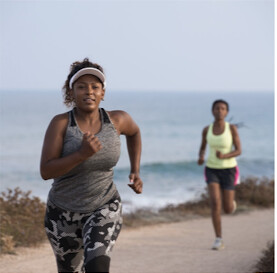
So if you’ve had those thoughts, it’s certainly not just you. All runners have rough patches when pushing themselves, whether in a race, during a hard workout, or on a long run. Experts use the phrase “psychological crisis” to describe when your body’s signals dominate your attention and you think about slowing or stopping.
These moments often occur two-thirds to three-quarters of the way through a workout or race. Speaking about the Ursuline Academy runners she coaches in Dallas, elite runner Becky Wade says: “They’re deep enough into the race that they’re hurting, but not close enough to the finish line yet to get excited or start kicking. It’s easy to doubt whether they’ll be able to hang on, and they back off a bit as a protective mechanism.”
What separates Keflezighi, Wade, and other successful runners from some of us is that they know these rough patches will come, and they have mental strength techniques for dealing with them.
These techniques are quite simple. Even better, they can be learned, and then honed, so that you persevere despite the internal voice telling you to back off or drop out. Here are six elite-endorsed ways to build mental strength when the going gets tough.
1. Know Why You’re Doing This
Good goals not only guide your training. They can also fortify you during difficult stretches.
Know the purpose of a given workout or race, and how it will help you meet a personally meaningful goal, says Olympian Roisin McGettigan, a sport psychology coach who holds the Irish record in the steeplechase.
For example, “if it was a long workout, I would remind myself that this is the time to work on my strength and endurance,” McGettigan says. “If it was an early-season race, the purpose might be ‘to see where I’m at’ or ‘blow off the cobwebs.’”
These why-am-I-doing-this thoughts can occur not just when you’re acutely suffering, but also when you’re bored or apathetic. McGettigan says to remind yourself why you’re out there in those situations as well. Think of how easy running will help you recover for your next key workout, or how an hour alone on the roads provides a calming antidote to the message-a-minute pace of modern life.
If thoughts alone don’t do the job for you, McGettigan recommends using visual cues. “I often drew a smiley face or heart on my hand to remind me that I really loved what I was doing and I was saying ‘yes’ to this experience,” she says.
2. Enlist Family and Friends
Telling a few key people about your race or hard workout adds accountability. When a moment of crisis occurs, picture yourself recounting the run to them. Will you be proud to tell them how you handled the challenge?
Keflezighi was in 21st place halfway through the 2012 Olympic Marathon. Bothered by stomach and foot pain, he pondered dropping out. Then he thought about his family, who were waiting for him at the finish line. What kind of example would dropping out set for his daughters, he asked himself. He committed to finishing no matter what, and wound up crossing the line in fourth place.
You can also enlist others in practical terms. As McGettigan notes, most elite runners train with others, in part to be pulled through hard efforts when they’re struggling and might otherwise slack off. Wade tells the high schoolers she coaches to latch on to a teammate or competitor if their resolve falters during a race. Doing so can shift your attention from how much you’re hurting to the more straightforward task of maintaining contact.
3. Visualize Success
To reiterate: Successful racers know one or more psychological crises are likely to occur when they’re pushing themselves. One way they prepare for the challenge is to play the race through their head before they get to the starting line. As Wade, a 2:30 marathoner, puts it, “I envision myself in a race atmosphere, down to the course, competition, and atmosphere.”
A key benefit of doing so is that, when the urge to slow or stop strikes, you have a counter-narrative ready—that vision you implanted and watched several times of yourself rising to the challenge and continuing to run strong.
“I think having visualized the race going well in my head many times allowed me to stay engaged, because I had already told myself I was going to have a good race,” says Mark Coogan, whose long elite career was highlighted by a spot on the 1996 Olympic marathon team. “Knowing what I was going to do in the race allowed me to be more aware of how I was running physically, so I could stay loose and smooth.”
Coogan is now the coach of New Balance Boston, which includes on its roster Olympians Elle Purrier St. Pierre and Heather MacLean. He encourages his athletes to spend 10 to 15 minutes a day visualizing in the week leading up to a big race.
“I tell them to visualize seeing themselves running well,” Coogan says. “Visualize the race you want to happen.”
4. Focus on Your Body—But Not Excessively
Experts used to believe that experienced runners focus on bodily sensations (known as associating) and that less experienced runners focus on anything but their body (known as dissociating). Thanks in part to research by Noel Brick, Ph.D., a psychology professor at the University of Ulster and co-author of The Genius of Athletes, it’s now known that that old dichotomy is too simplistic.
Brick has shown that a Goldilocks-level of bodily awareness leads to lower perceived exertion. “Focusing excessively on bodily sensations, like breathing or feelings of discomfort, can be harmful to our performance,” Brick says. Focusing solely on these sensations can negatively affect performance by increasing how hard the work feels and making the run feel more unpleasant. This then leads to slowing down.
A better approach? Check in periodically, notice what your body is telling you, and then focus elsewhere. When racing a 10K, for example, Coogan would do a body check about once a mile. He’d make sure his shoulders were low and level, that his hands were cupped loosely, that he wasn’t overstriding, and so on. Now as a coach, he periodically yells “body check” to his runners to remind them to do a quick scan.
Consider running form cues when doing your own body scan, making sure you’re running relaxed but strong—after you make adjustments, take your thoughts elsewhere.
5. Chunk Your Miles
If, a few strides into a marathon you think, “Oof, 26.2 miles to go,” you likely have a long day ahead of you.
Successful runners avoid getting overwhelmed by what they’re attempting with a technique known as chunking. “I mentally break the effort down into manageable bites, and focus only on getting through the bit I’m in,” Wade says. “This often means completing a loop, making it to my water bottle, or getting through a specific stretch of road or distance.” Or, as U.S. half marathon record-holder Ryan Hall put it in his book title, run the mile you’re in.
Notice that Wade’s examples of chunking are specific tasks. Psychologists call these process goals—step-by-step actions that contribute to performing well in the short term. Focusing on process goals has two key payoffs. First, they keep you from overthinking the run’s outcome, such as what your time will be. Research has shown that thinking too much about outcome goals can induce anxiety and cause distraction.
Chunking via process goals also encourages actions that directly improve your performance. One of Coogan’s main focuses when marathoning was making sure he got his bottle every 5K, and then taking the time to drink adequately from the bottle. Doing so ensured that he stayed hydrated and fueled, and therefore didn’t falter in the final miles. Similarly, Wade’s focus on the next stretch of a road race, or her next split in a track race, leads to running that section of the race as well as possible.
Chunking is also helpful during interval workouts. Wade encourages the high schoolers she coaches to focus on just the current repeat or set, and reminds them that a recovery jog and chance to regroup is never more than a few minutes away.
6. Talk to Yourself Like You’re Your Coach
We all talk to ourselves when we run. (If you doubt that, monitor your mind on your next outing.) What matters here is the nature of that talk.
A study published in Psychophysiology found that people rated running at a given speed harder when they talked to themselves negatively compared to when their self-talk was positive. The runners also produced more cortisol, a hormone associated with emotional stress, when their self-talk was negative.
During a tough patch, Brick advises, “you might say to yourself, ‘my legs feel tired, but I can push through this.’ Research has shown that using simple statements like this can help us maintain our performance, despite how tired we feel.”
Coogan would repeat a few go-to phrases to himself, such as “you’re okay, Mark,” during races and hard workouts. And research supports Coogan’s tendency to speak to himself in the second person—using “you” rather than “I.”
In a study with cyclists, the participants did separate 10K time trials in which they used two versions of positive self-talk phrases. The phrases were identical except that in one they addressed themselves as “I,” and in the other they addressed themselves as “you.” Although the cyclists rated the time trials as feeling equally hard, when they spoke to themselves in the second person, they rode 2.2 percent faster. If that seems like an insignificant difference, consider that a 24:30 5K is 2 percent faster than a 25:00 5K. Which would you rather run?
Psychologists say this distinction works because addressing yourself as “you” provides emotional distance from the duress you’re under. In this set-up, you’re talking to yourself more like a coach would talk to you. And a good coach would never say, “you stink—drop out.” They would find a simple phrase or two that would help you weather the crisis and push through for a strong finish. With this simple switch in your thinking, you can provide that mental push for yourself.
(02/13/2022) ⚡AMP
by Runner’s World
On launches new Kenya-based trail running team
Swiss running company On has tapped into a new market with the launch of The Milimani Runners, an elite trail running team based out of Iten, Kenya.
Kenyan runners are among the elites at most major international road races, but the story isn’t the same at trail races. Trail running has grown in popularity with the rise in global competitions and funding behind the events.
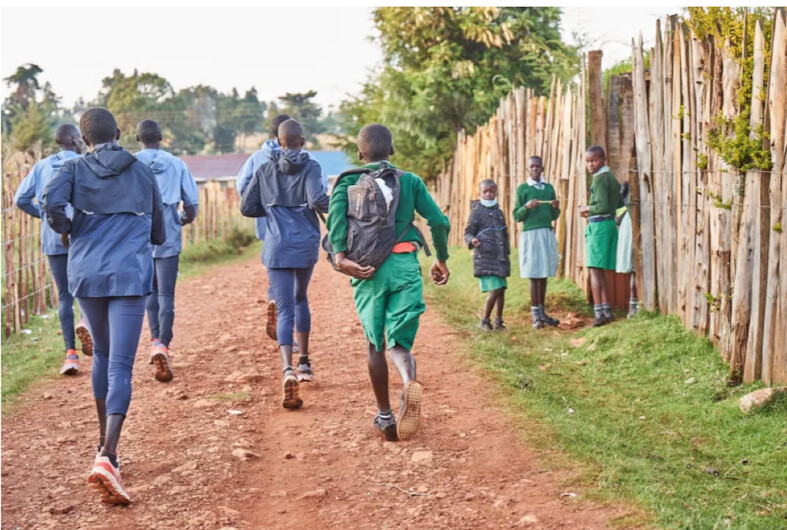
Most Kenyan runners have the goal of standing on top of the Olympic podium or following the footsteps of Eliud Kipchoge. A 2020 study from the ITRA found that almost 65 per cent of trail runners are from Europe or North America, lacking the star-power and diversity that African runners bring to races.
The On-sponsored Milimani Runners group was founded to shake things up on the trails and have currently been training on the expansive Iten trails to prepare for their debut this summer’s Sierre-Zinal and Ultra-Trail Monte Rosa races.
“For Kenyan runners to make it to the big European races, they need to be sponsored to make the trip,” says Milimani Runners coach Julien Lyon. “Our project could open the doors to undiscovered talent and give more opportunities to East African runners.”
The team is loaded with talent who have already recorded some impressive performances on the roads. The men’s team is led by Mark Kangogo, who smashed the course record at the 2018 Luxembourg Marathon with a 2:12:12 finish. The veteran talent of Rose Jepchumba leads the women’s team. Her career has been set back by injuries, she was ninth at the World Cross Country Championships in 2005 and ran a 2:29 marathon in 2016.
(02/13/2022) ⚡AMPby Running Magazine
Why training doesn’t stop after your run
Under Armour’s approach to training is different from its competitors. The company believes that performance doesn’t just come from training, it comes from a holistic approach to running which includes considering emotional, psychological, physiological and nutritional strategies. They call this approach 360 Performance – it means that running doesn’t stop when your watch does and highlights the ways in which training really is all-encompassing. This approach to running may seem daunting, but actually, it’s geared towards balance.
For Aisha Praught-Leer, a UA athlete and 1,500m Olympian, 360 Performance is how she lives her life. “Showing up on race day is such a small part of my existence. Everything else, the getting there, happens in the quiet moments.”
Georgia Ellenwood, Ashley Taylor, Patrick Casey and Aisha Praught-Leer are all professional UA athletes. However, when they talk about 360 performance, they talk about things beyond the nuts and bolts of training. To them, 360 means taking care of your entire being and improving yourself in every way.
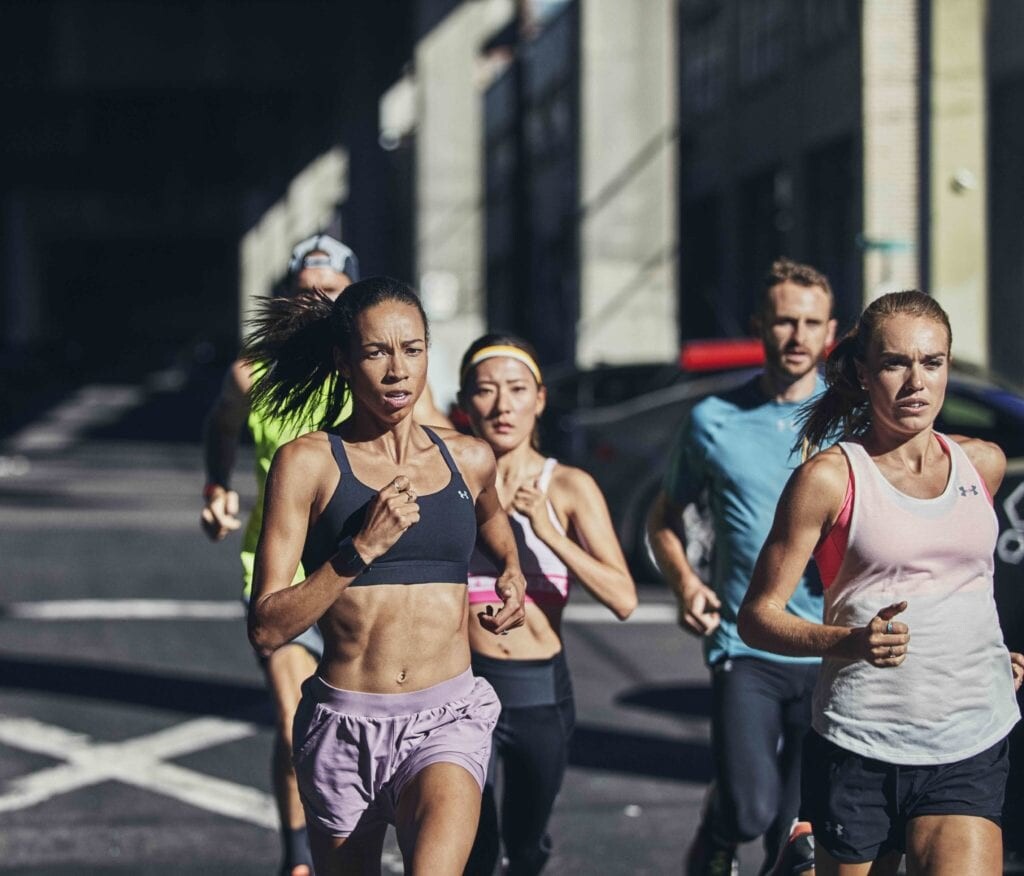
Michael Watts, Under Armour’s Director of Global Athlete Performance, feels that 360 Performance is what sets UA apart. “Every minute and every hour matters in the life of an athlete, if they are not training or competing then they are in a perpetual state of recovery. How they optimize their recovery depends on their own circumstances and journey. We want athletes to become more knowledgeable about themselves and how best to optimize their performance based on their data. Why does it matter? Because the best athletes in the world sweat the details, they are on a constant journey to master their mind, body and craft. We just help guide them.”
Believe in yourself
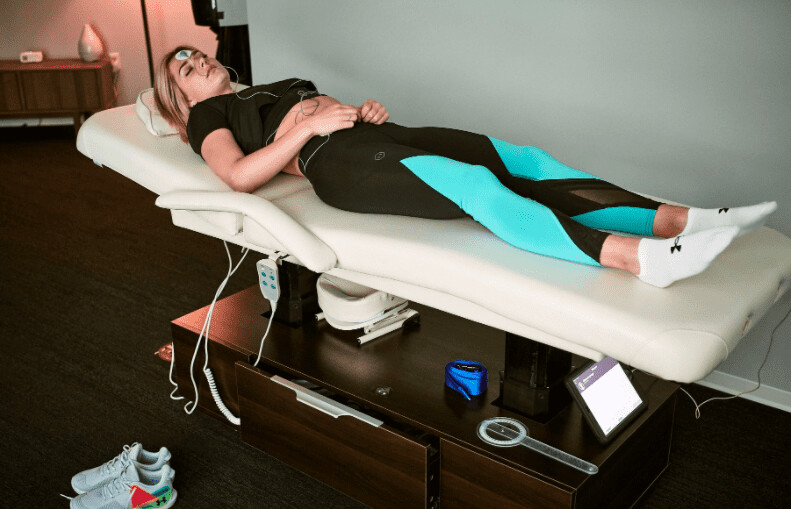
Ellenwood, a Canadian heptathlete, saw a difference in her results when she began to believe in herself. She says 360 Performance means so much more than training – it means emotional, psychological and physiological harmony. Under Armour helped her find this. “I’m a real perfectionist,” Ellenwood says. “I used to be so worried about taking risks in practice, because I didn’t want to look dumb or to fail. But I think sometimes you need to hit a hurdle hard or you need to fall. Do the ugly stuff in training.” Ellenwood says she’s made way more progress after allowing herself to make mistakes and becoming process-oriented, as opposed to obsessing over results.
When it comes to practically preparing for her day, Ellenwood needs to get her body physically and mentally prepared. “Before I even leave the house I do pre-hab, so that means getting my feet ready, I warm up my legs with a heat pack, I have an hour of exercises before I even start practice.”
From there, Ellenwood will train for six to eight hours. In order to maintain that level of activity, she says she takes comfort in her routine and allows rest when needed. “Running is my full-time job and I love it, but sometimes it becomes a lot. If I need to stop for a moment if I’m becoming overwhelmed by the load, I let myself. I’ve learned that stepping away from the track for a minute, to regroup, is ok.”
Be patient
Taylor, a Canadian 800m runner, echoes this statement. She says that she, too, used to place a big emphasis on results, but she feels supported by an organization that sees her as more than a runner. “UA gives us a lot of sport-specific support. But they support us beyond that. They help remind me to love myself through the process and to be patient.” With her goals for 2020 entirely changed, patience has been key.
Casey might be the most patient of the four UA athletes. The American miler has been looking forward to the 2020 Olympic Trials for nearly eight years. After being sidelined due to injury in 2016, he had his sights firmly set on qualifying this July. However, like everyone else, Casey’s plans have changed. He said he’s coping quite well with the new training, and feels like he’ll be ready when the time comes to line up again. “I used to think of running as the two or three hours I’d actually be training everyday. Now I think of it as what I’m doing when I’m not running. How I’m recovering, how I’m preparing myself – because you can only do so much physically in a day.”
It’s a lifestyle
All of the athletes feel that thinking about training in this new way, as a lifestyle as opposed to one aspect of their day, has made them better runners. Aisha Praught-Leer, a 1,500m runner and Olympian, feels like she places more of an emphasis on overall happiness now, which has in turn, made her a better runner.
“Showing up on race day and running a fast time is just a miniscule part of my existence. That’s just the tip of the iceberg. Training is how I’m sleeping, how I’m eating and how I’m keeping myself happy as a person.” Praught-Leer says while she’s a social person at practice, she’s an introvert at heart. For her, she unwinds with a solo run or a self-care routine that she’s perfected. While painting her nails doesn’t seem like training, it helps her unwind. She feels like the better she’s feeling about her life overall, the faster she will run. “My job is high pressure, so it’s imperative to take care of the below-the-surface stuff, to be able to run fast times on race day.”
Praught-Leer has learned that taking care of the below-the-surface stuff needs to be a priority. “Like Under Armour encourages, I really take a holistic approach to my training. It’s not my couple hours a day when I’m training. It’s how I recover, it’s how I’m sleeping, how I’m eating, how I’m hydrating and how I’m keeping myself happy and sane and motivated.”
360 Performance isn’t just about running – it’s actually about everything else outside of training that allows you to enjoy your sport. For the athletes above, running is their job, and they still ensure they’re loving what they do. If running is your leisure activity, enjoyment is even more important. A happy runner is a fast runner, and that’s what Under Armour wants to see in those they support.
(02/12/2022) ⚡AMP
by Madeleine Kelly
How to properly prepare for running
Running is a great way to stay in shape, but if you’re not careful, you can end up injuring yourself. Here are some tips on how to properly prepare for running so that you can stay safe and healthy.
1. Always hydrate
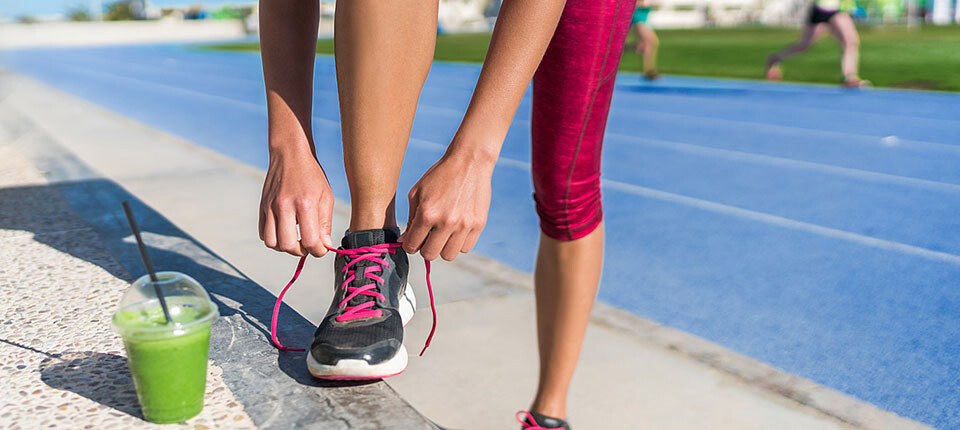
Running is a great way to stay in shape, but if you’re not careful, you can end up injuring yourself. One of the most important things you can do to prevent injuries is to make sure you’re well hydrated. Dehydration can lead to muscle cramps and other problems, so it’s important to drink plenty of water before, during, and after your run. To make sure you don’t encounter these issues, you should always carry a hydration pack with you so that you have access to water when you need it. This helps your body because your muscles can’t perform at their best if they’re not hydrated.
Water is the best thing you can drink, but if you feel like you need some extra, electrolyte-rich drinks can also help your body when you’re sweating a lot.
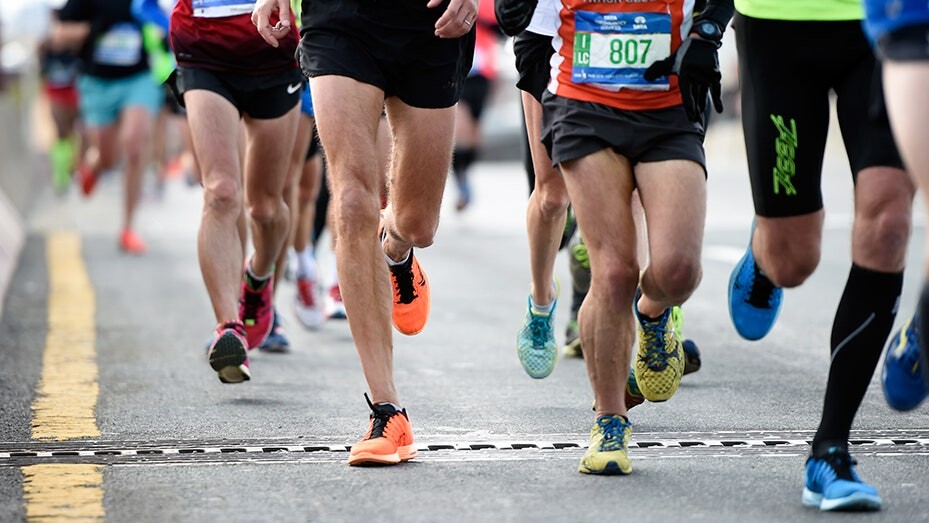
Be sure not to drink too much water, though. Drinking too much water can lead to hyponatremia or low salt levels in the blood, and that can cause problems like nausea and vomiting. If you don’t need any extra electrolytes, plain water is best.
2. Stretch Properly
It’s important to stretch before running. You need to warm up your muscles and joints so they are ready for the rigorous activity of running. It also prevents injuries, which can happen if you don’t stretch properly. If you’re not sure what stretches to do, here are some suggestions that will help you get started:
Start with a few arm circles in all directions
Stretch out your hamstrings by bending over at the waist and touching your toes
Stand straight with one foot in front of the other and bend down as far as possible on each side (try not to touch the floor)
Extend your arms straight overhead while standing up tall; then lean forward, reaching for the ground with both hands
Squat down and twist your torso to the right side, then return to a standing position
These steps are just examples. Once you get used to doing these kinds of stretches, try others that are appropriate for runners.
3. Practice proper running technique
Running is one of the best exercises for your body, but that doesn’t mean you should just go out and start running without any preparation.
Practice proper running technique by using both feet equally when landing. This will ensure better balance and reduce the risk of injury or pain in your knees or shins.
Stretch before starting your run, as we described, paying special attention to stretching muscles on the front (anterior) side of the leg like the quadriceps (front thigh), hamstrings (back thigh), calves, hip flexors, and buttocks. And remember before starting your run make sure to warm up with some gentle jogging at an easy pace for 10 minutes or so.
To stay with your running form, make sure to practice proper running posture as well. This will improve the mechanics of your run and reduce stress on your muscles and joints. Try to keep your shoulders back, chin up, upper body leaning forward slightly, arms bent at 90 degrees in front of you, with hands lightly touching your thighs or in fists, with fingers pointing in the direction you are running. Make sure your back is straight with relaxed shoulders and your feet are landing below or slightly in front of you.
4. Get proper running shoes
If you’re serious about running, then you need to make sure you have proper running shoes. Running shoes are specifically designed to protect your feet and ankles from the impact of running, and they also provide cushioning and support which can help reduce the risk of injuries.
There are many different types of running shoes available on the market, so it’s important to do your research before purchasing a pair. Be sure to try on several different pairs of shoes and go for a run in them before making a purchase.
And remember, no two pairs of feet are exactly the same, so it’s important to find a pair of shoes that fit properly and feel comfortable.
Running is an important form of exercise for both your body and mind. To properly prepare, you need to stretch before starting a run, practice the proper running techniques by using the same foot when landing each time, get proper running shoes that fit well and are comfortable, and pay attention to posture while running. We hope this article has been helpful in preparing you for a run. Enjoy!
(02/12/2022) ⚡AMPby Colorado Runner
American sprinting legend Justin Gatlin has announced his retirement
Gatlin will be hanging up his spikes after a 19-year career that included an Olympic gold medal, multiple World Championship titles and several doping bans.
On Feb. 10 (his 40th birthday), American sprinting legend and 2004 Olympic champion Justin Gatlin announced his retirement from athletics via Instagram. Gatlin will be hanging up his spikes after a 19-year career that included an Olympic gold medal, multiple World Championship titles and several doping bans.
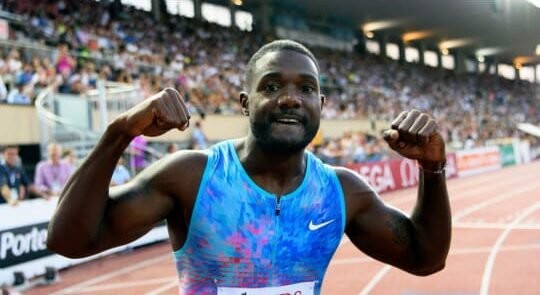
Gatlin won the 100m and 200m sprint double at the World Championships in Helsinki in 2005, and gold in the 100m at the 2017 World Championships in London, achieving a rare victory over Jamaica’s Usain Bolt.
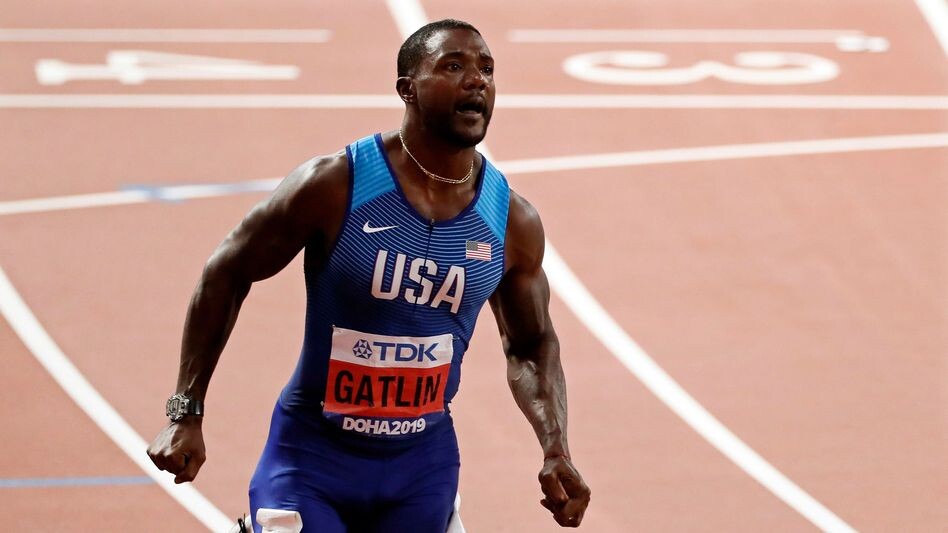
He was also a part of the U.S. gold-medal-winning 4x100m relay team at the Doha World Championships in 2019.
His career was also tainted by doping scandals. Gatlin served two suspensions – one in 2001 and again in 2006 – for his use of testosterone.
(02/12/2022) ⚡AMPby Marley Dickinson
Zach Bates' 100 Mile Dream
Zach Bates loves statistics. Ever since he was a kid, he's scoured Guinness world records for longest, shortest, fastest, coldest or hottest. He could recite the Scoville rating for every hot pepper. Being autistic, that's how his mind has always worked. He loved to focus on specific topics, and the numbers called to him.
That might be why he fell for running. He joined the cross country and track teams his junior year of high school, memorizing his teammates' PRs and paces. Eventually, his sights turned to the pros. From Usain Bolt to Zach Bitter, he studied all of their career numbers. He also got the itch.
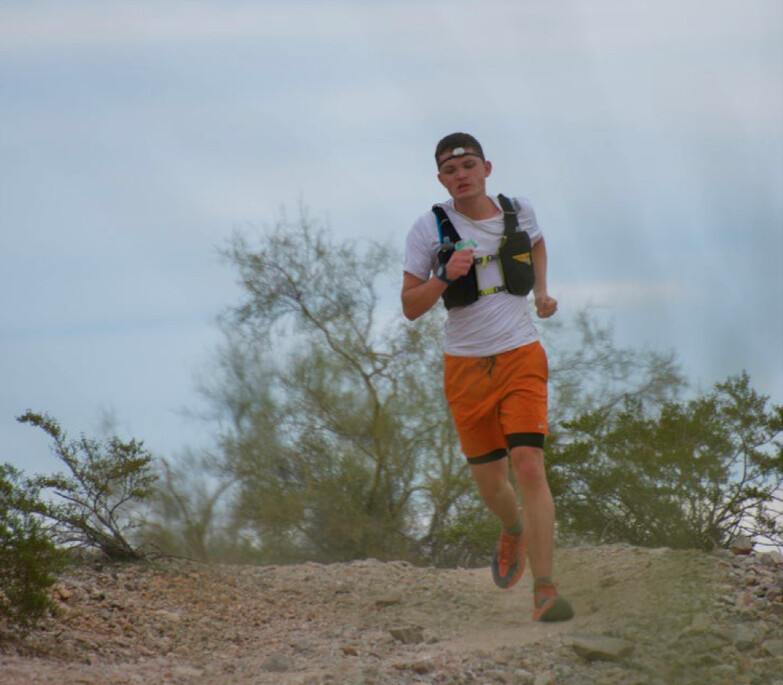
"He didn't want to just know these times, he wanted to do it, too," says Rana Bates, Zach's mother. "He begged me to sign him up for a marathon during his senior year. He was really interested in the longer stuff in track. He wanted to go even farther."
Because of the pandemic, most marathons during his senior year had been cancelled. So the 19-year-old waited patiently until graduation day in May 2021. That day, he turned to his mom and said, "I want to do a 100 miler before I turn 20."
Rana was thrown off by the request. No one in their family ran. Not his father, his mother, his sister or his twin brother. Now Zach wanted to run triple-digits in less than 10 months. She let the idea sit for a few days before Zach followed up. "Did you sign me up for a 100-mile race yet?"
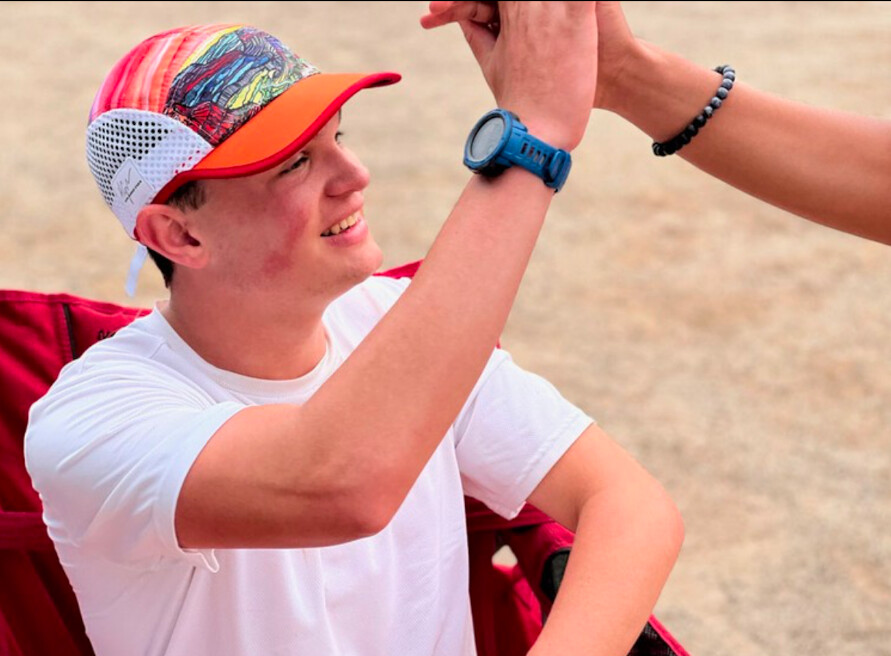
"He's really mild tempered and doesn't ask for much," Rana said. "When he does ask for something, he really means it and we take him seriously. So, I bought some books."
A Crash Course
Rana found herself whisked into the world of her son's dreams, researching and formulating a plan for Zach to be able to run 100 miles in a safe and healthy way. With Zach unable to plan himself, Rana had to take a broader approach, acting as his coach and instructing him on every logistical necessity for training.
"All of the thinking end stuff, I do," Rana said. "Zach does the running."
Rana's crash course worked smoothly for the first few months, but books only went so far. One of the first things she learned about distance running was the generosity of the community. The more she mentioned the goal to people, the more people came into Zach's life.
First, there was John Hendrix, a local ultrarunner. He offered knowledge about injury prevention, gear and nutrition for ultradistance running. But more than anything, he shared knowledge of the local trail systems and became an occasional running partner for Zach.
When it came to training, Zach and Rana had a process for each new trail. First, they had to hike it together so Zach could familiarize himself with the route and what landmarks to look for. Then, Rana would tag along in the car, driving between trailheads to meet Zach and field calls in case he got lost.
It's a lot of work, but Rana wants to live out the message she and Zach want to share.
"There's a list of things you do when you find out your child has autism," Rana said. "But we need to be careful not to let those things become the priority of what our children want. We need to listen to them, hear their dreams. Zach wanted to run so badly, he just didn't have the resources to find routes, sign up for a race, or things like that. You can't just say, it's too hard for us. We need to respect them as individuals and help them reach their dreams."
As Zach started to race, more and more people noticed him. By October, he'd finished the High Mountain Half, the Beaver Canyon Marathon, and the Do-Wacka-Do Trail Run 50 miler. He made friends everywhere he went, astonished at someone his age running the distances he was. At races, autism wasn't the defining feature of who he was.
The Rumble
There's an infinite number of variables in a 100-mile race; often, things simply go well until they don't. For Zach, the first roughly 80 miles went smoothly. He was far way ahead of the cutoff when he picked up de la Rosa as a pacer for the final 20 miles. But he started to get quiet, only occasionally breaking the silence.
"If my legs could talk, they would say, 'Whyyyyyyy!" de la Rosa recalls Zach saying.
Then a problem arose at mile 88. A hip flexor tweak forced Zach into a limp. They tried stretching, but that only worked momentarily. The limp lingered, but they pressed on.
De la Rosa could see the teenager doing calculations in his head, watching his time goals get further and further away. It was a place de la Rosa had been many times since he started running ultras in 2008. In that moment, captured on video, de la Rosa thought of what he would've wanted to hear if it were his teenage self.
In the next miles, Zach slowed to a painful trudge, about 45-minutes per half mile. Finally, a stroke of luck found them at mile 94: a runner with two Tylenol. The pain wasn't gone, but Zach started running again, dropping three straight 12-minute miles. With that, finishing under the 32-hour cutoff was assured.
"That's called a comeback!" de la Rosa hoots in the video. "That's called rallying! Woohoo!"
Runners treated him like anyone else. For one 40-mile training run, Zach was supposed to pace Hendrix for the Javelina Jundred. Hendrix dropped out at mile 60, but word got around in the crew area that Zach was willing to pace.
"There was such an openness and willingness from runners," Rana said. "He paced one guy from Boulder, Colorado, and the guy came back stoked, saying this was the most fun he had with a pacer. Another guy from California picked him at mile 80 and Zach paced him to a sub-24 finish. It's the coolest thing ever to have a support system like this. These runners have stayed in touch with us and offered help. It's amazing."
After finishing the 50, Zach signed up for the Coldwater Rumble 100 in January and started TikTok and Instagram accounts (@running.farther) to share his progress. That left three months to prepare, but Zach was feeling burned out. Rana was out of her depth for guiding him, so they sought a professional coach. With a reference from Run Flagstaff, they connected with Nickademus de la Rosa.
"You can always tell if there is a deep, intrinsic reason someone does a 100 miler, and that often proves if they will do whatever it takes," said de la Rosa. "Zach had a deep reason to be there. You see it in his eyes when he talks."
They dropped Zach's mileage down to get him healthy, mentally and physically, then began ramping it slowly back up. The biggest week came four weeks before race day: 10, 20, and 30 mile runs back to back to back.True to form, Zach hit all his splits on the dot.
At the finish line, the Bates family waited. Zach's watch had died in the night, leaving them reliant on texts from de la Rosa to track his progress. Finally, the final text came in. Zach was moving slower again, but they were a mile away.
Rana rallied a friend who rallied the entire 250-yard string of tents along the final stretch. When Zach arrived, a massive cheer tunnel awaited him. Zach looked at de la Rosa, as if to ask permission to run through it.
"You've got this," de la Rosa said.
Alone, beneath the roaring crowd, Zach ran. He stopped when he crossed the finish and embraced his family. His time was 28:06:36, good for 38th overall.
'I'll cherish that moment forever," Rana said. "Our family will never be the same."
Zach's royal entrance was completed with a camping-chair throne and a parade of well-wishers. Unable to stand when it was time to leave, Zach was lifted by his father and uncles over the crowd and carried like a king to the car.
The limited mobility lasted a few days. After a long postrace nap, Zach eventually made it to the bath, an endeavor so challenging he made a TikTok of himself easing up the stairs set to the "Mission Impossible" theme song.
By a week later, he was moving better, already eyeing what's next. He's got the Canyons 100K and Javelina Jundred on the calendar for 2022, but it doesn't stop there. He also wants to do the Cocodona 250, but that's for down the road. For now, he's back to running and chasing his dream.
"Even if Zach never ran again, the last eight months have changed us as a family," Rana said. "The outpouring of love from everyone, everywhere, for this kid chasing his dreams and making them come true. Not everyone is able to. Because of everyone, Zach did."
(02/12/2022) ⚡AMPby Trail Runner Magazine
What is Runner's Dystonia?
World championships silver medalist and two-time Olympian Kara Goucher announced today that she has been diagnosed with runner's dystonia.
"For the past year I've been quietly battling for my health," she wrote on Instagram. In the post she described difficulties she's had staying balanced while walking and running and numbness in her legs.
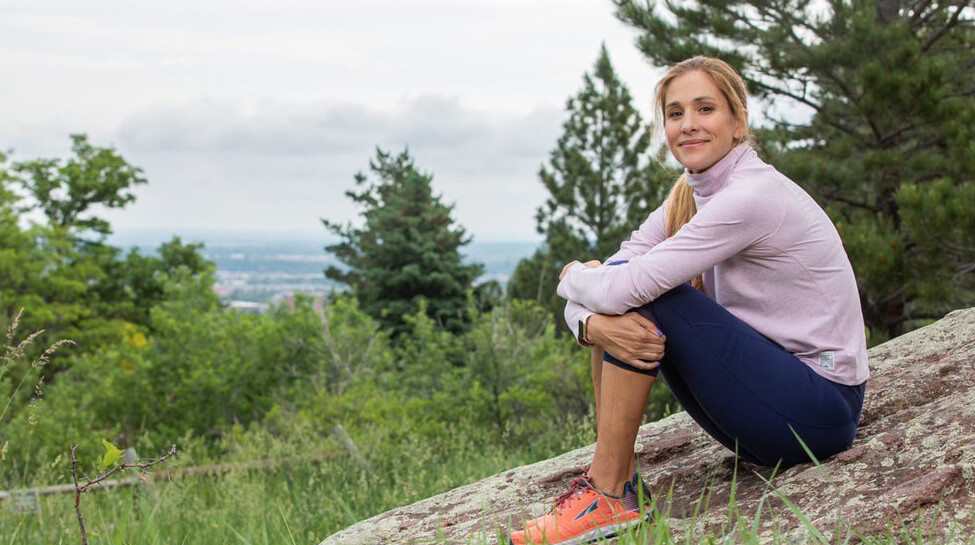
Goucher courageously shared her diagnosis and the implications it would have on her life. "The doctor confirmed repetitive exercise dystonia, and tried to tell me, as gently as possible, that the more I run the worse my symptoms will get. I have to drastically cut back or not only will I lose the ability to run at all, I will struggle to walk as well," she wrote.
It's important to note that the disorder is considered rare-though dystonias in general are the third most common movement disorder in the United States. Here's more about what runners should know about repetitive exercise dystonia.
What is a Dystonia?
A dystonia is classified as an involuntary muscle contraction, affecting different parts of the body depending on the type. Symptoms can range from foot cramping or dragging to tremors or difficulty speaking.
Like a lot of neurological disorders, the exact cause of dystonia is unknown, though the American Association of Neurological Surgeons cites an alteration in regions of the brain or communication between those regions as a likely cause. According to the Dystonia Medical Research Foundation the disorder "can be caused by a staggeringly diverse variety of factors and conditions."
Dystonia can be idiopathic (having no clear cause of onset), genetic or acquired. That diversity in causes makes it difficult to study, but researchers are trying to understand what common mechanisms might connect them.
Runner's dystonia is a type of task-specific dystonia. According to the National Institute of Neurological Disorders and Stroke, these dystonias occur only when participating in a repetitive activity. Runners might experience it in their lower limbs, while writers, pianists and singers may have similar flare ups in their respective musculature.
Runner's dystonia is most likely to present itself in distance runners. Symptoms can include an unusual gait, involuntary toe clawing or extending, knee hyperextension, or weight shifting to the inner or outermost planes of the foot (ankle supination or inversion). The involuntary muscle movements can also spread to the trunk or pelvis.
Unfortunately, there is no cure or preventative medications, though there are some ways to ease the symptoms. Doctors may prescribe off-label medications, surgery, deep brain stimulation, physical therapy or botulinum toxin (Botox) injections to decrease muscle spasms.
If you're experiencing involuntary muscle movements, you should see a doctor to rule out any other movement disorders like Parkinson's disease. If you suspect you have runner's dystonia, a specialized neurologist called a movement disorder specialist can help you understand the disorder better.
Runners who have this disorder might have to dial back their training, but often find ways to keep running in their life. They meet up in supportive Facebook groups to share tips, stories, and lean on one another.
Justine Galloway, for example, set a Guinness World Record for running the fastest half marathon backwards. After her runner's dystonia diagnosis she began seeing a physical therapist. It was with her PT that she discovered that her legs wouldn't fail her if she were running backward.
"I fought for the ability to continue to run," Galloway told Women's Running back in 2015. To this day she continues to train and run races backwards.
As for Goucher, she shared that while she was grateful her diagnosis wasn't multiple sclerosis (MS) or amyotrophic lateral sclerosis (ALS)-two diseases that were ruled out for her-she has to accept that her relationship to running will have to change. She admits that is hard.
"I loved running before I knew I was good at it. It made me feel alive, to push, to feel my lungs expand. It has been one of the most glorious aspects of my life. From the silent meditation on a solo run to representing my country at the Olympic Games. I'm not sure where running ends and I begin, we are so intertwined as one. I'm unsure what the future holds, but I'm trying to embrace it."
(02/12/2022) ⚡AMPby Trail Runner Magazine
What's the best way to cheer at a race?
The right kind of cheering from spectators on race day can help you push through the hard parts and get to the finish line. The wrong kind of cheering, on the other hand, can have the opposite effect — no one likes to hear “you’re almost there!” when you’re 30K into the marathon and you know the hardest part is about to begin. Recently, researchers asked what makes the perfect cheer and came up with a formula so the next time you’re on the sidelines, you can help, rather than hinder, your fellow runners.
Runners and the crowds

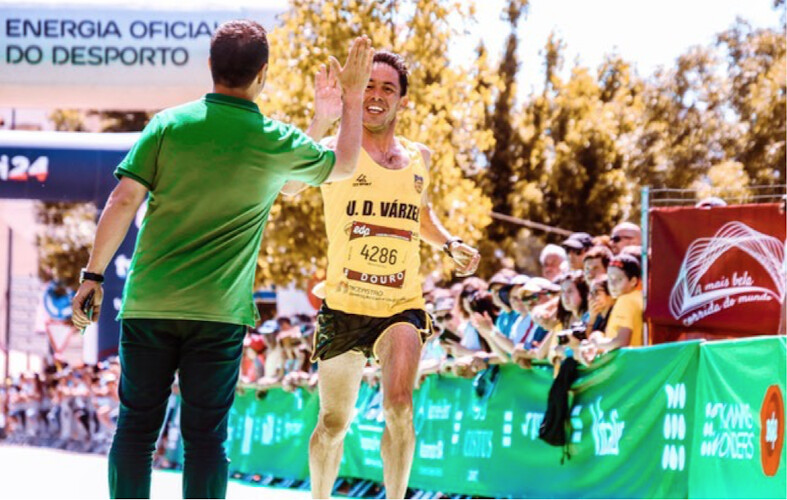
After conducting a series of post-race surveys with 10K and half-marathon runners, the authors of the study, published in The Sports Psychologist, analyzed the results and the reciprocal relationship between the crowd and the runners to understand how the quality of support was reflected in the behaviours and emotions of the runners.
They determined that in general, participants “drew pride in participation and belief from the crowd, and they wanted to ‘give back’ through doing their best.” The highest-valued type of support, according to the surveyed runners, was both personal and authentic.
Cheers with IMPACT
The researchers determined that in order to offer the best support, crowds should give encouragement with IMPACT — Instructional, Motivational, Personalized, Authentic, Confidence-building and Tailored to the distance. In addition, supporters should do their best to be authentic, empathetic and nonjudgmental when they’re on the sidelines. Let’s break that down a bit:
Instructional
You may not be a coach, but if you’ve ever run a race, you probably know at least a few instructions that might help. Remember to keep these simple, actionable and of course, useful. Examples include:
“Stay strong!”
“Deep breaths, stay relaxed!”
“Stay steady up the hill!”
“Use the downhill, lean into it!”
“The finish line is just up ahead — give it all you got!”
Motivational
This is the most obvious category, and is likely what most spectators are focusing on when cheering (for better or for worse). Here are some examples of effective motivational cheering:
“You’ve got this!”
“Great pace!”
“We’re proud of you!”
“You made it to the top of the hill! Way to go!”
“You’re doing it!” (As opposed to you can do it)
Personalized
You likely don’t know every single person you’re cheering on at a road race, but that doesn’t mean you can’t personalize your support. If runners’ names are on their bibs, use them! If not, you can sometimes use other ways to personalize your support. Examples include:
“Way to go, 541!”
“You’re doing great, blue T-shirt guy!”
“Keep it up, runners!”
Authentic
Authenticity in a cheer is more about how you cheer than what you’re actually saying. You should be enthusiastic and excited when cheering to let the runners know that you’re genuinely happy to be out there supporting them. Being authentic also means being honest (in a kind way, of course). If a runner is obviously struggling, don’t scream at them “you’re looking great!” They know that’s not true, and you could end up sending them further down the rabbit hole of disappointment.
Instead, use some of your motivational cheers to remind them they can make it to the end, and that you’re proud of them for doing something hard.
Confidence-building
We all know the feelings of self-doubt that can creep in during a race when it starts to get hard. Spectators can help runners push past those thoughts by reminding them of their strength. There is some overlap here with the motivational category, but examples include:
“You’ve trained for this, you’re crushing it!”
“You’re a rock star!”
“You’re doing it!”
“We’re proud of you!”
“You’re strong!”
Tailored to the distance
Cheering for a 5K is a lot different from cheering for a marathon. While most of your motivational or confidence-boosting cheers are applicable across all distances, it’s your instructional ones that need some tailoring. For example, in a 5K you might encourage someone to push a little harder and take a few more risks. In a marathon, on the other hand, advice like that could leave someone walking the last few kilometres to the finish line.
It may seem obvious, but when you’re on the sidelines of a race, make sure you understand the distance and what you’re cheering for. If you’re not sure how to give advice to people running a marathon (or any other distance), then don’t — stick to other types of cheering.
(02/12/2022) ⚡AMP
by Running Magazine
Diplo runs a half-marathon off no training, then goes to the club
On Feb. 6, one of the world’s most famous DJs made a surprise appearance on the start line of the Miami Half Marathon – on a bet.
Grammy-award-winning artist Diplo (Thomas Pentz), who has collaborated with Justin Bieber, Snoop Dogg and Morgan Wallen, and is a part of the reggae-dancehall trio Major Lazer, ran the half marathon in 1:50:11 off no training and after being at Miami’s E11even nightclub the night before the race.

“My friend bet me that I couldn’t run the Miami half marathon with no training,” Diplo wrote on his Instagram story.
The DJ mentioned he has no previous racing or running experience, and poked fun at runners’ superstitious antics before the race.
Not only did the 43-year-old DJ complete the race in a decent time for someone who has not trained, but he also managed to run a negative split – covering the first 10K in 51:56 and the second 10K in 51:36, which is impressive for someone with no running experience.
After Diplo proved his friend wrong, he went on a celebration tour with the finisher medal. The DJ continued to post Instagram stories with the medal and was even seen at the club still wearing his bib and medal.
In a post-race interview with the Miami Herald, Diplo said, “My (half-marathon) time was quicker on Sunday than the two-hour DJ set I played Friday night – so DJing is probably harder.”
Diplo seems to have caught the runner’s high, as he now has aspirations to run the LA Marathon in March. It has not been confirmed whether he will train for the full marathon this time around.
(02/12/2022) ⚡AMPby Running Magazine
Run Your Next Race Faster
Building an aerobic base and gradually running more miles provides the foundation upon which speed and endurance are built. But eventually, you’ll need to run fast to run faster!
Improving endurance is the easier and more straightforward skill that simply involves increasing the duration of your longest runs. Any run lasting more than 75 minutes or so will enhance your endurance capacity by stimulating adaptations–increased vascularization, mitochondrial enzyme production/function, fat metabolism, etc.–to better handle running longer and farther.
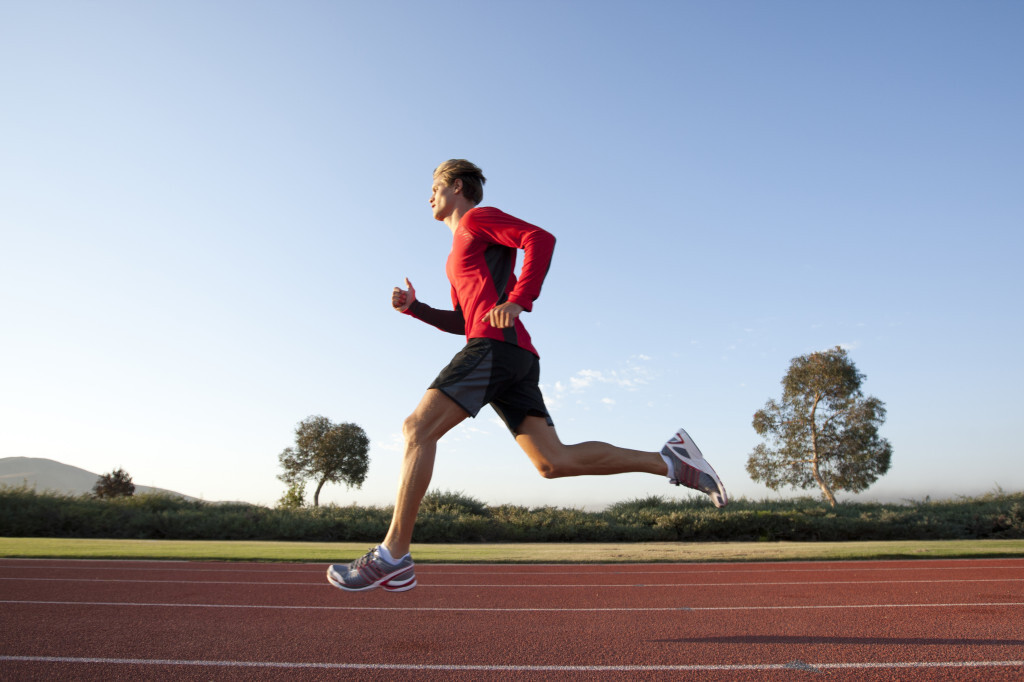
Running more mileage–crushing more KMs–will also make you faster to a degree, but if you want to continue the trend, you’ll need to commit to speed training.
Speed training is a bit more complicated and doesn’t follow a single or simple metric. Basically, to develop speed you must train the body to run at paces that are faster than what it’s used to. This can be accomplished in a number of ways. Intervals, hills, fartleks and tempos are all examples of workouts in which you aim to run a segment of your run at a faster pace than usual, with easier, recovery segments before, between and after.
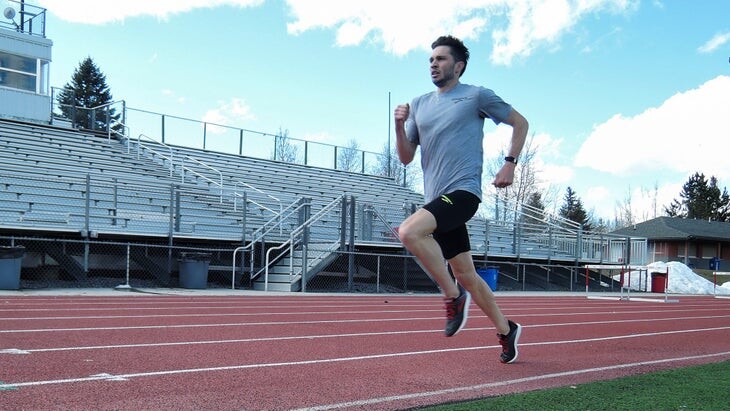
Once you decide what type of speed training to do, it’s then important to decide how fast to run.
Run too fast and you’ll tire quickly or risk injury. Run too slowly and you won’t get the desired adaptations you’re aiming for.
If you’re newer to running or speed training, simply start by running at a pace that is faster than what seems easy or comfortable. It should be a pace that makes it difficult to speak, other than to utter a word or two. Start with short intervals up to about a minute and take a break in between to catch your breath. Gradually increase then duration and number of intervals (or hills, fartleks, etc.) you do.
More advanced runners should use speeds and paces based on their upcoming goal races. If you’re training for shorter distances, intervals between 5K and 10K pace are often ideal. For longer races including the half and marathon, it’s important to practice running at goal race pace to build a level of comfort and confidence.
Be sure to give yourself a full day or two of rest or easy running between speed sessions/days in order to recover and reap the adaptations of your workout. Aim to add one day of speed training per week then build to two days after a few weeks. Be creative with your training and try to make it fun.
(02/11/2022) ⚡AMPby Dan Way
Try tweener repeats for base season training
Making the transition from off-season to base training can sometimes be awkward. You know you need to start doing some speed work again, but your body isn’t quite ready to jump into hard interval sessions and long tempo runs. This is where tweener repeats come in. This moderate-intensity workout will re-introduce speedwork to your legs without wiping you out and ease the transition between the off-season and your next training block.
Tweener repeats

Also known as cruise intervals, tweener repeats are run at a pace between your lactate threshold and your VO2 max (hence the name). The intervals are short and the pace is controlled so you can get a good workout in without creating a tonne of fatigue. The rest should also be long enough for you to recover between intervals, and the total length of the workout (minus warm-up and cool-down) shouldn’t be more than three to six kilometers.
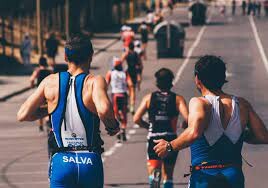
When performing this workout, it’s important to remember the goal: to re-introduce harder running and prepare your body for harder workouts later on in your training block. It’s very important not to run these too hard and turn the session into a VO2 max workout because you should be saving that kind of intensity for later on. If you go overboard now, you risk burning yourself out by the time you reach the peak of your training season.
With that in mind, if you’re going to do these intervals on a track, you may want to consider not timing them, especially if you find it hard to hold back in that setting. Instead, focus on running a quick but very controlled pace. By the end of the workout, you should feel like you worked hard but you still have some left in the tank.
Example workouts
If you’re doing your workout on the track, some examples could include:
6-8 x 800m with 2-3 minutes rest
6-8 x 600m with 2-3 minutes rest
8 x 500m with 2 minutes rest
8-10 x 400m with 2 minutes rest
*Note that you can lengthen the rest for any of the above workouts if you are not recovered by the end of the rest period.
If you don’t have access to a track, you can do tweener repeats on the road as well:
6-8 x 3 minutes with 2-3 minutes rest
8-10 x 2 minutes with 2 minutes rest
10-12 x 1 minute with 1 minute rest
(02/11/2022) ⚡AMPby Brittany Hambleton
Gold Coast Marathon set to welcome back international runners
After a disappointing cancellation of the Village Roadshow Theme Parks Gold Coast Marathon in 2020 and 2021, the 2022 edition of Australia’s favorite marathon is looking to welcome back international runners in July this year.
The event Chief Executive Officer Mr Cameron Hart said that with the minimal COVID-19 restrictions in Queensland, and the federal government announcing relaxation of our international borders to welcome vaccinated travelers from key international markets, the Gold Coast Marathon organizers are looking forward to welcoming international runners and their families from overseas to this year’s event.
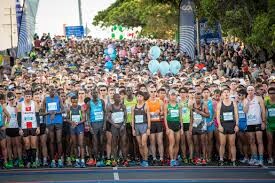
“Prior to COVID-19, the annual Gold Coast Marathon had been experiencing exponential growth in participation from international runners as the reputation of this world class event grew throughout the global running community. Now with the worst of COVID-19 behind us we are developing plans to once again provide a world class running experience in a world class holiday destination here on Queensland’s Gold Coast in July this year,” Mr Hart said.
Over the last two years the event organizers have taken the time to review the event operations and have developed a fresh two-day programme that starts at 6:00am for the half marathon race on Saturday the 2nd of July, and a 6:00am start for the full marathon on Sunday the 3rd of July.
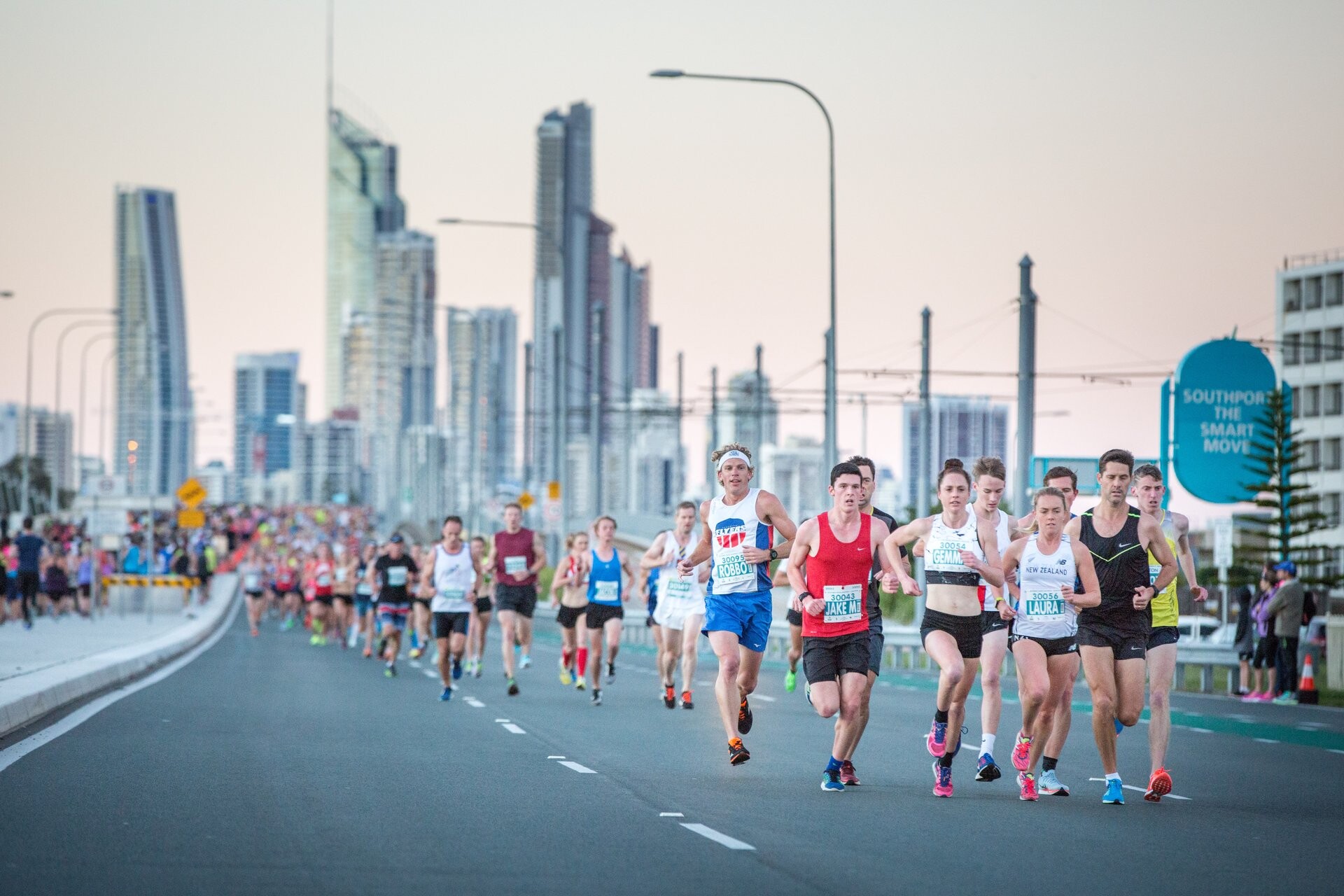
“The benefits of the earlier starts will see runners starting off just before sunrise each day and experiencing the cooler temperatures of early mornings, which should see fast times and lots of personal best results,” said Mr Hart.
International runners who have been to the Gold Coast to run the event in previous years are very keen to return as the Gold Coast also provides some of the world’s best tourism and recreational opportunities for international visitors to enjoy before and after their running events.
Entries for the 2022 Village Roadshow Theme Parks Gold Coast Marathon open on the 15th of February. With an anticipated high demand, runners are encouraged to enter early to secure their spot on the start line.
(02/11/2022) ⚡AMP2022 Dubai Marathon is set to make a comeback in December this year
The 22nd edition of Dubai Marathon, the Middle East’s largest mass participation event, will be staged on December 10 this year. The last time the hugely popular event was staged in January 2020.
Preparations are now underway for the 22nd staging of the event, in consultation with Dubai Sports Council with registration now open for the three race-event. Runners looking to secure a place in the race of their choice can do so now, online only, through the official website www.dubaimarathon.org.
The 2022 Dubai Marathon will also be the first in the event’s history to be staged on a Saturday following the change in the UAE working week. For runners both elite and amateur alike, the news is a welcome boost after a long period of inactivity due to the necessary health and safety restrictions activated because of the global pandemic.
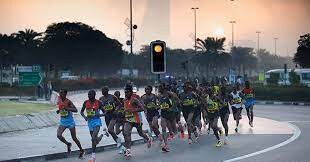
“It has been a very challenging time for the sports events industry, so we are excited to be able to look ahead to working closely with the appropriate Dubai Government departments to stage another memorable race,” said Peter Connerton, Managing Director of Pace Events, organisers and promoters of the Dubai Marathon.
“We have enjoyed a close working relationship with the city for many years and we now look forward to taking the next step and working to grow the event, inspire the people of the UAE to become more active and health conscious and underline the Dubai Marathon as one of the world’s greatest distance races.”
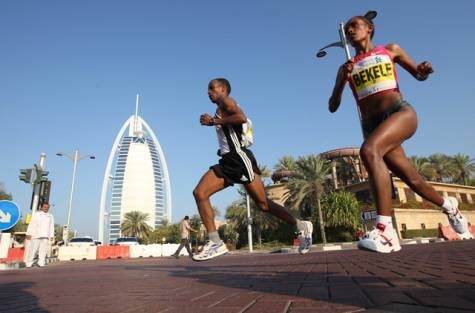
Recently ranked third of all global marathons by World Athletics, the Dubai Marathon regularly attracts participants from around 145 countries and produces many of the fastest times in the sport.
Till the recent Dubai Marathon in 2020, Dubai had produced 24 of the 100 fastest men’s times in history, while 18 of the 100 fastest women’s times in history had been set over the streets of the city.
Over the coming months, runners will be encouraged to take part in the full marathon, the popular 10km road race and the 4km Fun Run with registration information and event news available from the race website www.dubaimarathon.org.
(02/11/2022) ⚡AMPDubai Marathon
In its relatively brief history (the race was first held in 2000), the Dubai Marathon has become one of the fastest, most respected and the most lucrative marathon in the world in terms of prize money. Each year thousands of runners take to the roads in this beautiful city in the United Arab Emirates (UAE) for this extraordinary race starting...
more...World champion Noah Lyles targets fast finish to season in Birmingham
Double world champion Noah Lyles headlines the men’s 60m at the Müller Indoor Grand Prix Birmingham – a World Athletics Indoor Tour Gold meeting – at the Utilita Arena in Birmingham on February 19.
The 24-year-old, who was the fastest man in the world over 200m in 2021 (19.52), is ranked fourth on the global all-time list (19.50). He ran a 60m personal best of 6.56 for victory in the New Balance Indoor Grand Prix on 6 February and will line up in Birmingham alongside his fellow US sprinter Ronnie Baker, the bronze medalist in the 60m at the 2018 World Indoor Championships. Baker, who has a PB of 6.40 from 2018, opened his season with third place at the Millrose Games on January 29.

"I’ve run on the US indoor circuit this year, and this meet will be the final one for me," said Olympic 200m bronze medalist Lyles, who will compete at the Müller Indoor Grand Prix for the first time. "I have seen a lot of fast times come from the Birmingham track, and I’m looking forward to running there.
"My main focus this year is on defending my titles at the World Athletics Championships this summer and continuing to get better. Every training session and every race is working towards achieving that goal, and this race fits right into that."
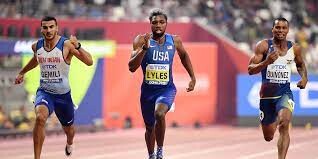
The British contingent in Birmingham will be led by reigning national indoor champion Andy Robertson.
The Müller Indoor Grand Prix is the fifth meeting of the 2022 World Athletics Indoor Tour Gold series. There are seven Gold level meetings across the series, which started with Karlsruhe on 28 January and concludes in Madrid on March 2.
Other athletes set to compete in Birmingham include five-time Olympic gold medalist Elaine Thompson-Herah, Olympic pole vault champion Mondo Duplantis, world indoor 60m hurdles record-holder Grant Holloway, Olympic 1500m silver medalist Laura Muir and Olympic 800m silver medalist Keely Hodgkinson.
(02/10/2022) ⚡AMPby World Athletics
Muller Indoor Grand Prix Birmingham
The Müller Indoor Grand Prix Birmingham is one of the leading indoor meetings in the world with world-class athletics as part of the World Indoor Tour Gold series. The event will be staged at its traditional home at Utilita Arena Birmingham setting the tone for what is set to be an incredible year of track & field. ...
more...How do you psych yourself up for a big effort?, researchers investigate the top strategies runners use to mentally prepare themselves for a big workout or race
Running is as much mental as it is physical, and getting your mind prepared for a big workout or a hard race is just as important as getting your body ready. Recent research found that 89 per cent of athletes (both professional and amateur) use priming strategies to psych themselves up for a big effort and compiled a list of the most popular methods. Do you use any of these?
Music
This was the most popular priming strategy, with 27 per cent of the athletes surveyed indicating they use their favorite tunes to pump them up before a workout or race. Music is a proven performance-enhancer, even if you only listen to it before the workout, then shut it off, so it’s no surprise that this was the number-one answer. Just be careful — not every type of music makes great pump-up jams (sorry, Drake fans).
Instructional self-talk
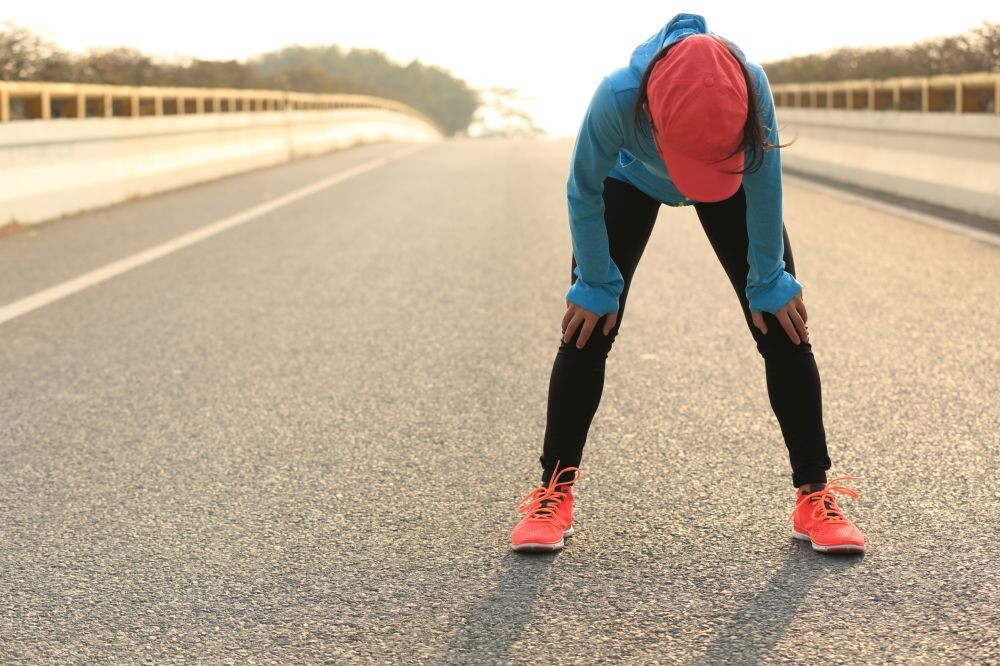
Instructional self-talk happens when you guide yourself through the task you are about to take on. This could be mentally running through the race in your mind or going over your race plan, or focusing on specific parts of the race that you know will be tough. Examples of instructional self-talk could be things like, “I am going to stay strong and controlled on the hills,” or “I’m going to speed up in the last kilometer”. According to the researchers, 24 per cent of athletes surveyed use instructional self-talk before a workout or race.
Motivational self-talk
23 per cent of the athletes surveyed said they use motivational self-talk to psych themselves up before a big effort. This could come in a variety forms, including the use of motivational quotes, or even talking to a coach or teammate who will give words of encouragement. It could even be as simple as repeating your mantra to yourself to remind you that you are a strong, capable athlete who can conquer this challenge.
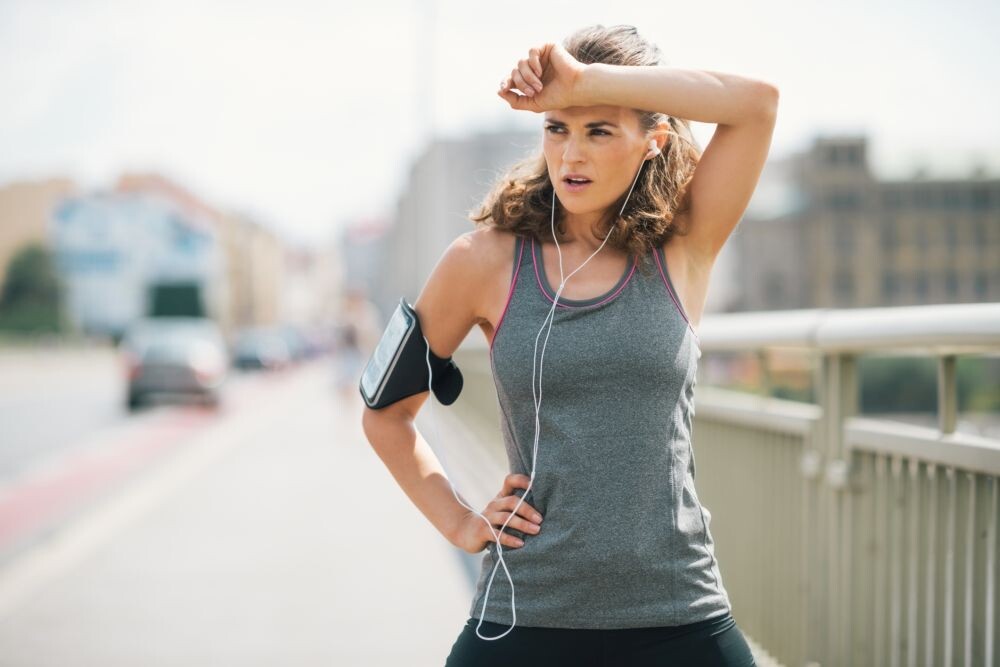
Physical actions
20 per cent of athletes use physical actions to motivate themselves. This could be as simple as high-fiving your friend or teammate, or even the act of going through your warm-up could be used as a way to pump yourself up.
Watching video clips
6.3 per cent of the athletes surveyed said they used video clips to pump themselves up. Although this method is not quite as popular, it can be very effective. Watching your favorite athlete cross the finish line of their last big race, or watching a video of another runner recovering from a mid-race disaster to take the win, can inspire you to get out the door and give it everything you have.
Priming strategies work
When you’re standing on the start line of a race or staring down the barrel of a hard, daunting workout, it can be easy to let your nerves get the better of you. 66 per cent of the athletes surveyed said they found their priming strategies to be either very effective or extremely effective, showing just how powerful simple things can be to keep your mind under control. If you struggle with nerves or anxiety before big efforts, consider using one (or multiple) of these strategies to get you in the right headspace before you get started.
(02/10/2022) ⚡AMPby Brittany Hambleton
Tokyo Marathon announced domestic elite field
A few days ago the Tokyo Marathon announced the domestic elite field for its 2021 edition being held Mar. 6, 2022, with the caveat that final decisions on whether it would go ahead and whether it would have an international field, originally slated to feature men's world record holder Eliud Kipchoge, would have to wait until Feb. 18. Yesterday the Osaka Marathon announced its field for this year's race on Feb. 27, and like Osaka, Tokyo's field gives away its history as a men-only race. The men's field is even more massive than Osaka's, and the women's field only slightly deeper.
Overall Tokyo is solid, with the men's NR holder, the women-only NR holder, both half marathon NR holders, the last three Fukuoka International Marathon winners, seven men with recent times under 2:07, 31 under 2:10, 112 under 2:20, and two debuting sub-61 half marathoners. Only three women on the list including women-only NR holder Mao Ichiyama (Wacoal) have gone sub-2:30 vs. three sub-2:40 in Osaka, meaning that the field at the Nagoya Women's Marathon the week after Tokyo should be pretty good.
Especially notable people in the men's field include NR holder Kengo Suzuki (Fujitsu), two-time 2:06 man Hiroto Inoue (Mitsubishi Juko) who won last month's Osaka Half Marathon in PB time, 2020 Fukuoka winner Yuya Yoshida (GMO), and 2021 Fukuoka winner Michael Githae (Kenya/Suzuki). It's also notable that none of the three men who ran the Tokyo Olympics marathon is entered in Tokyo or any other domestic spring marathon.
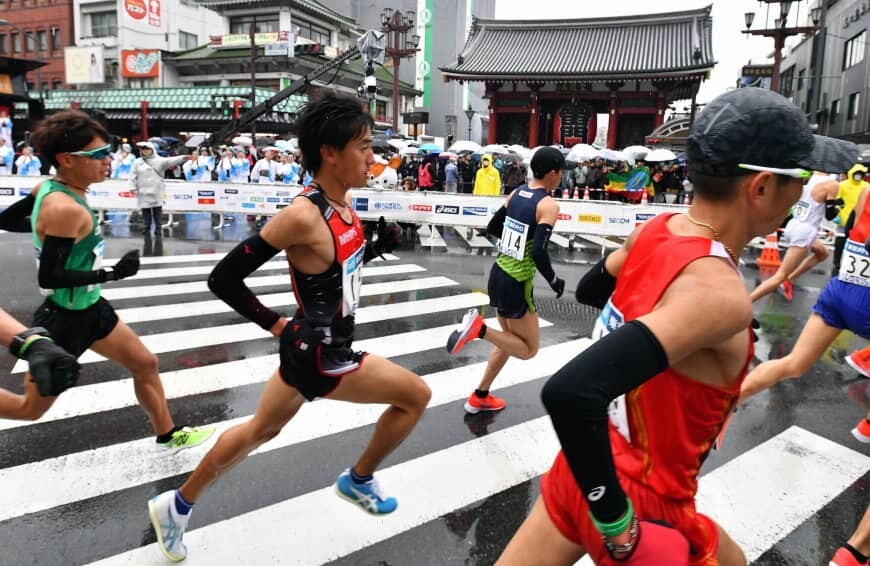
Along with Yoshida a large group from the GMO corporate team and other athletes are entered both here and in Osaka, so the final numbers at both races are likely to be a bit lower than what's on paper. But if the weather's good you can still expect to see massive races both weekends. And expect Ichiyama and Suzuki to give the world record for fastest combined times by a married couple in a single race, 4:27:05 by Kenyans Purity Cherotich Rionoripo and Paul Kipchumba Lonyangata in Paris 2017, a shot.
2021 Tokyo Marathon
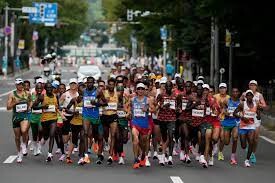
Domestic Elite Field
Men
Kengo Suzuki (Fujitsu) - 2:04:56 (Lake Biwa 2021)
Hidekazu Hijikata (Honda) - 2:06:26 (Lake Biwa 2021)
Kyohei Hosoya (Kurosaki Harima) - 2:06:35 (Lake Biwa 2021)
Ryu Takaku (Yakult) - 2:06:45 (Tokyo 2020)
Hiroto Inoue (Mitsubishi Juko) - 2:06:47 (Lake Biwa 2021)
Yusuke Ogura (Yakult) - 2:06:51 (Lake Biwa 2021)
Daisuke Uekado (Otsuka Seiyaku) - 2:06:54 (Tokyo 2020)
Toshiki Sadakata (Mitsubishi Juko) - 2:07:05 (Tokyo 2020)
Yuya Yoshida (GMO) - 2:07:05 (Fukuoka Int'l 2020)
Simon Kariuki (Kenya/Togami Denki) - 2:07:18 (Lake Biwa 2021)
Masato Kikuchi (Konica Minolta) - 2:07:20 (Lake Biwa 2021)
Shin Kimura (Honda) - 2:07:20 (Tokyo 2020)
Kento Kikutani (Toyota Boshoku) - 2:07:26 (Lake Biwa 2021)
Yuta Shimoda (GMO) - 2:07:27 (Tokyo 2020)
Tadashi Isshiki (GMO) - 2:07:39 (Tokyo 2020)
Masaki Sakuda (JR Higashi Nihon) - 2:07:42 (Lake Biwa 2021)
Michael Githae (Kenya/Suzuki) - 2:07:51 (Fukuoka Int'l 2021)
Atsumi Ashiwa (Honda) - 2:07:54 (Lake Biwa 2021)
Kenya Sonota (JR Higashi Nihon) - 2:08:11 (Lake Biwa 2021)
Kento Otsu (Toyota Kyushu) - 2:08:15 (Lake Biwa 2021)
Naoya Sakuda (JR Higashi Nihon) - 2:08:21 (Fukuoka Int'l 2020)
Daisuke Hosomori (YKK) - 2:08:28 (Lake Biwa 2021)
Keisuke Hayashi (GMO) - 2:08:52 (Lake Biwa 2021)
Kazuma Kubo (Nishitetsu) - 2:08:53 (Lake Biwa 2021)
Chihiro Miyawaki (Toyota) - 2:09:04 (Tokyo 2020)
Takumi Kiyotani (Chugoku Denryoku) - 2:09:13 (Lake Biwa 2021)
Yuki Sato (SGH Group) - 2:09:18 (Berlin 2018)
Kei Katanishi (JR Higashi Nihon) - 2:09:27 (Lake Biwa 2021)
Yuki Takamiya (Yakult) - 2:09:30 (Lake Biwa 2021)
Taku Fujimoto (Toyota) - 2:09:36 (Fukuoka Int'l 2019)
Takamitsu Hashimoto (Komori Corp.) - 2:09:43 (Lake Biwa 2021)
Keisuke Tanaka (Fujitsu) - 2:10:07 (Lake Biwa 2021)
Kensuke Horio (Toyota) - 2:10:21 (Tokyo 2019)
Akira Tomiyasu (Tokyo T&F Assoc.) - 2:10:29 (Lake Biwa 2021)
Ryo Matsumoto (Toyota) - 2:10:32 (Lake Biwa 2020)
Ryota Komori (NTN) - 2:10:33 (Lake Biwa 2021)
Takuma Kumagai (Sumitomo Denko) - 2:10:41 (Fukuoka Int'l 2021)
Yuki Nakamura (Sumitomo Denko) - 2:10:47 (Lake Biwa 2021)
Takuma Shibata (Komori Corp.) - 2:10:48 (Hofu 2020)
Shota Saito (JFE Steel) - 2:10:50 (Beppu-Oita 2020)
Daiji Kawai (Toenec) - 2:10:50 (Lake Biwa 2019)
Junnosuke Matsuo (NTT Nishi Nihon) - 2:11:00 (Beppu-Oita 2020)
Asuka Tanaka (Runlife) - 2:11:07 (Fukuoka Int'l 2020)
Taiki Yoshimura (Asahi Kasei) - 2:11:13 (Hofu 2019)
Toshinori Watanabe (GMO) - 2:11:17 (Katsuta 2020)
Yoshiyuki Hara (Gotemba Takigahara SDF Base) - 2:11:21 (Hofu 2020)
Benard Kimani (Kenya/Comodi Iida) - 2:11:31 (Eindhoven 2019)
Debut / Do-Over
Nicholas Kosimbei (Kenya/YKK) - 1:00:20 (Lisbon Half 2019)
Masashi Nonaka (Osaka Gas) - 1:00:58 (Nat'l Corp. Half 2020)
Tomoya Ogikubo (Yakult) - 27:44.74 (Hachioji LD 10000 m 2021)
Naoki Koyama (Honda) - 27:55.16 (HDC Fukagawa 10000 m 2021)
Women
Mao Ichiyama (Wacoal) - 2:20:29 (Nagoya 2020)
Natsuki Omori (Daihatsu) - 2:28:38 (Nagoya 2021)
Shiho Kaneshige (GRlab Kanto) - 2:28:51 (Osaka Int'l 2020)
Hitomi Niiya (Sekisui Kagaku) - 2:30:58 (Nagoya 2009)
Miharu Shimokado (SID Group) - 2:32:48 (Osaka Int'l 2020)
Yui Okada (Otsuka Seiyaku) - 2:32:00 (Nagoya 2020)
Hitomi Mizuguchi (Uniqlo) - 2:32:33 (Osaka Int'l 2020)
Mai Fujisawa (Hokkaido Excel AC) - 2:35:52 (Kanazawa 2021)
Tomomi Sawahata (Sawahatters) - 2:36:45 (Osaka Int'l 2022)
Debut / Do-Over
Kaori Morita (Panasonic) - 1:10:28 (Nat'l Corp. Half 2021)
Rika Kaseda (Daihatsu) - 31:39.86 (Nat'l Championships 2020)
(02/10/2022) ⚡AMPby Brett Larner
Tokyo Marathon
The Tokyo Marathon is a world-renowned annual marathon held in Tokyo, Japan. As one of the prestigious Abbott World Marathon Majors, it attracts elite and amateur runners from around the globe. The race holds World Athletics Platinum Label status, recognizing its high competitive standards, top-tier organization, and international appeal. Sponsored by Tokyo Metro, the Tokyo Marathon has grown into one...
more...Letesenbet Gidey, Hellen Obiri and Faith Kipyegon set to clash in Eldoret in honor of Tirop
Fittingly, for an event named in memory of one of the world’s best distance runners, the women’s race at the Agnes Tirop Cross Country Classic is expected to be the highlight of the World Athletics Cross Country Tour Gold meeting in Eldoret on Saturday (12).
Before Tirop’s tragic death in October last year, Kenya was already preparing to host a World Athletics Cross Country Tour event in Eldoret. But during Tirop’s funeral on 23 October – the day she would have turned 26 – Athletics Kenya announced that the cross-country event will be named after their star athlete.
Tirop will be remembered and celebrated this weekend for her great achievements in athletics. In 2015, aged just 19 at the time, she won the senior world cross-country title in Guiyang, then went on to earn bronze medals over 10,000m at the 2017 and 2019 World Championships. Just one month before her death, she set a women-only world 10km record of 30:01.
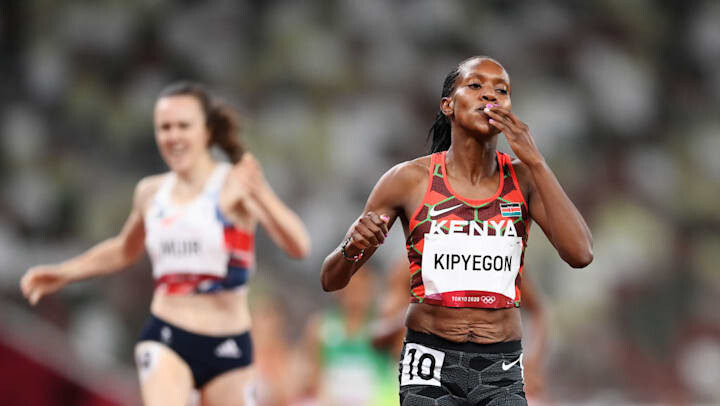
Many of Tirop’s friends, rivals and former teammates will be in action in Eldoret this weekend.
Letesenbet Gidey, who won the U20 title at the 2015 World Cross, leads the women’s field. The Ethiopian holds the world records for 5000m, 10,000m and the half marathon. This will be her first race since breaking the world half marathon record with her stunning 1:02:52 in Valencia last year, and her first cross-country race since the 2019 World Cross Country Championships in Aarhus, where she took bronze in the senior women’s race.
Senbere Teferi, the silver medalist behind Tirop at the 2015 World Cross, is also expected to be on the start line. At the same event in Herzogenaurach where Tirop set a world 10km record last October, Teferi set a world 5km record of 14:29. Teferi has finished fourth in both of her recent cross-country outings, in Seville and Elgoibar, so will be keen to make it on to the podium in Eldoret.
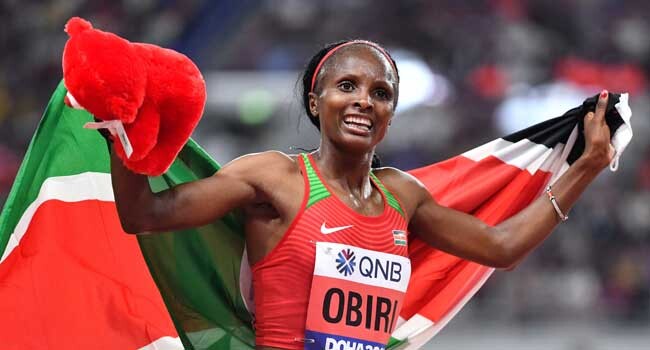
World 5000m and cross-country champion Hellen Obiri and two-time Olympic 1500m champion Faith Kipyegon – both regular teammates of Tirop’s over the years – lead the Kenyan challenge.
Obiri, who earned Olympic 5000m silver last year, opened her 2022 campaign last month with victory at the World Cross Country Tour Silver meeting in Dundonald. Kipyegon, meanwhile, will be contesting her first cross-country race since the 2017 World Cross, where she finished sixth. Despite being a 1500m specialist, Kipyegon has always been a formidable competitor in cross country, having won two world U20 titles in the discipline.
The top-performing athletes from the recent Kenyan Cross Country Championships, held on this same course last month, will also be looking to produce another strong performance on home soil.
Joyce Jepkemoi, who emerged as the surprise winner in the senior women’s race at the Kenyan Cross Country Championships, will be hoping to confirm that she is indeed the best cross country runner in Kenya at the moment. World 5000m silver medalist Margaret ChelimoKipkemboi, who finished second behind Jepkemoi in Eldoret last month, is also entered.
Other leading Kenyan runners expected to compete include world marathon champion Ruth Chepngetich, steeplechase specialist CelliphineChespol, Lilian Kasait, Beatrice Chebet, EdinahJebitok and TeresiahMuthoni. Bahraini steeplechaser Winfred Yavi, the two-time Asian champion and fourth-place finisher at the 2019 World Championships, is also entered.
Geoffrey Kamworor, who excels on all surfaces, is the biggest name entered for the men’s race. The two-time world cross-country champion and three-time world half marathon champion last raced at the Valencia Marathon in December, where he set a PB of 2:05:23. His last cross-country race, meanwhile, was the 2020 Kenyan Championships, where he finished second.
National 5000m champion Nicholas Kimeli, who finished fourth over 5000m at the Tokyo Olympics at fourth at the recent Kenyan Cross Country Championships, will also be competing, as will 2018 world U20 5000m champion Edward Zakayo, who finished just behind Kimeli in Eldoret last month.
Other entrants in the senior men’s race include USA’s 2016 Olympic 5000m silver medalist Paul Chelimo, Eritrean steeplechase record-holder YemaneHaileselassie, and multiple NCAA champion Edward Cheserek.
Following feedback from competitors at the Kenyan Cross Country Championships, a number of adjustments have been made to the course. The muddy section that many runners had found tough – and lost their shoes in – has been compacted to create room for shallower mud.
(02/10/2022) ⚡AMPby World Athletics
How to create a race plan, want to achieve your race goal? Make sure you plan for it
Like most runners, you probably follow some kind of training plan when preparing for a goal race, but when race day arrives, what do you do? Do you simply show up on the start line and hope for the best, or do you go into the race with a plan? Here at Canadian Running, we believe the latter is a better strategy if you’re trying to achieve a goal. Not sure where to start? Follow this guide to ensure you arrive at your goal race with a plan for success.
Know your pace ahead of time
In the last couple of weeks before your race, take an honest look at how your training has been going to create a realistic goal. If you’re not sure how to translate your times in workouts to a realistic race goal, ask a more experienced friend or coach.
Many coaches suggest having more than one goal heading into a race: a best-case goal, a realistic goal and a backup goal in case things don’t quite come together on race day. That way, you won’t be constrained by your goal if things are going better than expected, and if they go worse, you still have something to aim for rather than just giving up.

Have a strategy
In most races, ticking off kilometres like a metronome is not realistic. A hilly section of the race will likely be slower, and you may find yourself running a bit ahead of your goal pace at the beginning thanks to nerves and excitement. Knowing how you’re going to tackle different parts of the race ahead of time can stop you from panicking when you don’t hit your splits perfectly.
For example, if you know you tend to start out fast, plan to run the first kilometre a bit ahead of your goal pace and then settle into something more realistic after that. If you know there’s a hill late in the race, plan to adjust your pace to get you to the top without burning you out for the rest of the race. Want to have a strong finish? Plan at what point in the race you’re going to start your finishing kick.
Plan your nutrition
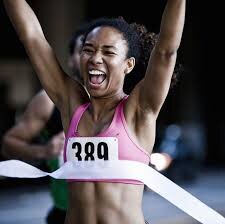
Regardless of what distance you’re running, you should plan what you’re going to eat on race day morning in advance so you have everything you need. Make sure it’s something you’re used to eating before a run or workout, so you know it won’t cause tummy troubles during the race.
If your race is longer, like a half or full marathon, make sure you plan out when, how much and what type of fuel you will be taking in during the race. This should be planned and practiced well in advance of your race so you know what your stomach can tolerate.
Plan your clothing
The night before the race, set out everything you’re going to need on race day morning. This includes the clothes you’re going to be running in, your warmup clothes, your nutrition (if you need it), and anything else you may need. If you got your race bib ahead of time, attach it to your shirt so you don’t accidentally leave it at home. There is no such thing as being over-prepared the morning of your race.
Make a schedule
Finally, plan out your morning so you get to the start line with as little stress as possible. Write out a schedule, starting with what time you’re going to get up, when you’re going to eat breakfast, when you have to leave your house and when you’re going to start warming up. Remember to give yourself more time than you need, because having extra time is far better than rushing, which will only increase your pre-race anxiety, and consider setting alarms throughout your morning to keep yourself on track.
(02/09/2022) ⚡AMPby Brittany Hambleton
Here are four helpful ways to prepare yourself before your run
Running is one of the simplest activities on the planet, and with proper gear and preparation, anyone can do it. There are many helpful ways to prepare to get the most out of your run, but what’s the most important? If you mentally and physically prepare the night before, it can put you in the right space to have a good run and lower your risk of injury.
Here are four easy helpful tips to get ahead start on your next run.
1) Map out your route
If you know how much time you have or a certain distance planned on your training schedule, map your route ahead of time. Check the weather and make sure your route has plenty of shade if it’s warm, plus plowed roads or sidewalks in winter.
When you plan your route ahead of time, you are already aware of the time you have to run the distance. If you end up getting lost or making up the route as you go, the chances are your run will take longer than you expected.
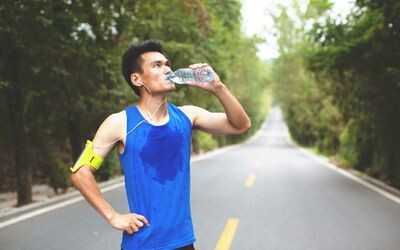
2) Hydrate
Hydration is a hot topic for most runners during the summer, but when winter rolls around, the concern for staying hydrated tends to drop with the temperature. Although you do sweat less when it’s cold out, keeping up your fluids is still important if you want to feel and perform at your best.
A glass of water before you go to bed will optimize your performance for your run the next morning.
3) Prep your running clothes and shoes
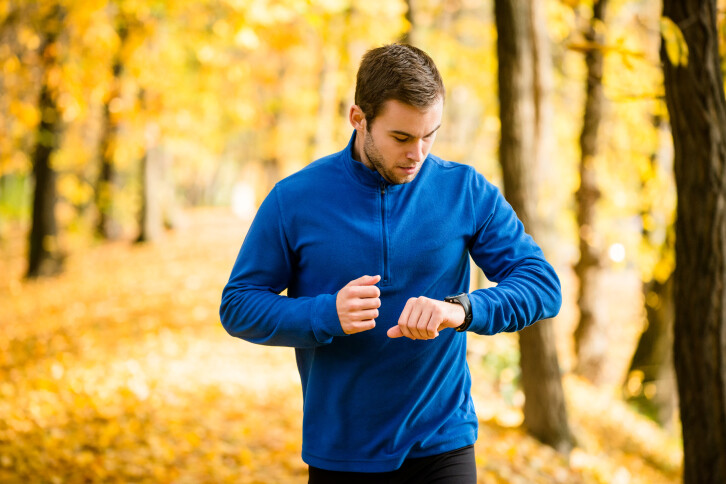
We know everyone did this as a kid before their first day of school… the same applies to running. Save time in the morning by picking out the running clothes and shoes you’ll wear the night before. Check the weather and make sure you have the proper gear according to the temperature outside.
The best way to dress is by following the 10-degree rule: dress for 10 degrees warmer than it is. In other words, once you get warmed up, if it’s 5 C outside, it will feel like 15 C, because your body temperature will rise as your run progresses. (This means you should feel cold when you start. If you feel comfortably warm before you start, you are probably overdressed and will soon have to shed layers.)
4) Morning meal prep
If you are running in the morning, then you may want fuel with a small snack before you head out. Prepare to have the snack first thing in the morning to let the food settle in your stomach before running. Some simple popular morning snacks for runners are bananas, oatmeal, cereal or toast with peanut butter.
These preparation tips are easy yet simple and will help you save time heading into your next morning run.
(02/09/2022) ⚡AMPby Marley Dickinson
Kenyans Hellen Obiri and Titus Ekiru added to star-studded RAK Half Marathon list
Kenya's two-time world 5,000m champion Helen Obiri and Titus Ekiru have been added to the 2022 Ras Al Khaimah Half Marathon field slated for February 19.
Obiri, who retired from the track after the Tokyo Olympics last year, has a personal best of 1:04.51 in the half marathon set in Istanbul in April last year. Obiri will have Olympic silver marathon medalist, Brigid Kosgei for company in what promises to be an entertaining race.
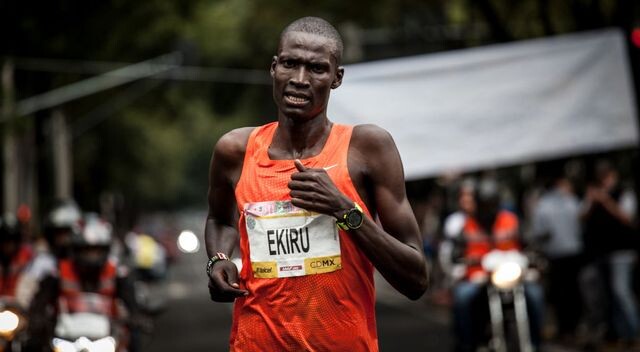
Kosgei is the world marathon record holder and a two-time London Marathon champion (2019 and 202). She was also runner up at the Ras Khaimah Marathon in the 2020 edition and has a personal best time of 1:04;49 in the 21km race.
Ekiru has fond memories of the UAE, having won the Abu Dhabi Marathon last year in 2:06:13.
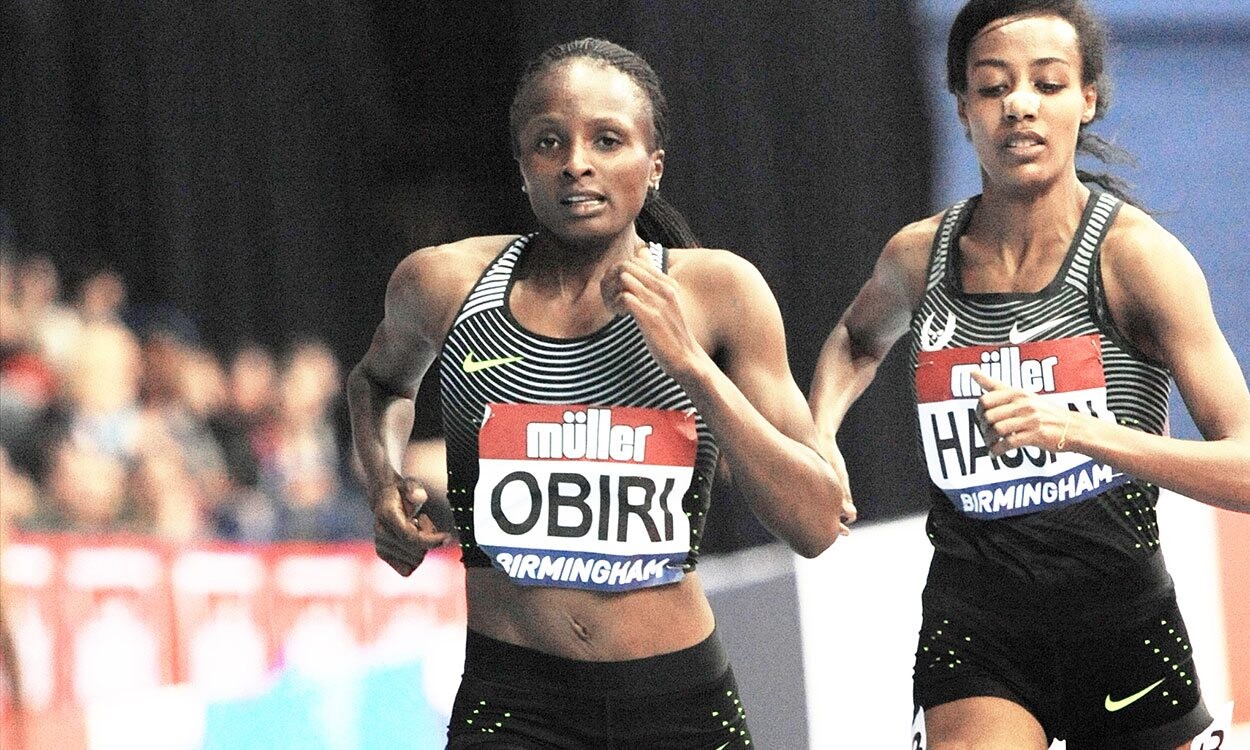
Joining Ekiru in a competitive field will be Abel Kipchumba, who famously secured the second-fastest time in the 2021 Half Marathon distance category, with an incredible personal best of 58:07.
However, Jacob Kiplimo, who had a spectacular season, will be the man to beat. He completed the 2021 Lisbon Half Marathon in a record-breaking time of 57:31.
The world half marathon record holder is expected to set a quick pace and deliver fierce competition in the men’s category. Kiplimo won the World Half Marathon in Gdynia, Poland in 2020 and a bronze medal in 10,00om at the 2020 Tokyo Olympics.
(02/09/2022) ⚡AMPby William Njuguna
Rak Half Marathon
The Rak Al Khaimah Half Marathon is the 'world's fastest half marathon' because if you take the top 10 fastest times recorded in RAK for men (and the same for women) and find the average (for each) and then do the same with the top ten fastest recorded times across all races (you can reference the IAAF for this), the...
more...Kara Goucher has been diagnosed with neurological disorder
The running community was shocked on Tuesday when Kara Goucher, one of America’s most accomplished distance runners, announced that she will no longer be able to participate in the sport she loves. The two-time Olympian explained in an Instagram post that she had been diagnosed with repetitive exercise dystonia and that if she did not drastically cut back on her running, she’d not only risk losing her ability to run, but even to walk.
“This past week I was a patient in the neurology department at the Mayo Clinic,” Goucher said in her post. “The doctor confirmed repetitive exercise dystonia, and tried to tell me, as gently as possible, that the more I run the worse my symptoms will get. I have to drastically cut back or not only will I lose the ability to run at all, I will struggle to walk as well.”
A dystonia is a disorder characterized by involuntary muscle contractions, which can affect only one muscle, groups of muscles or muscles throughout the body. Although they are very rare, they can result from overuse or repetitive stress and tend to affect musicians and sometimes athletes.

Initially, symptoms (like a foot cramp or a tendency for one foot to turn or drag, a worsening in handwriting after writing several lines or difficulty speaking) may be very mild and only occur after prolonged exertion. Over time, they can get worse or more widespread, or not they may not progress at all.
Unfortunately, medical professionals don’t know exactly what causes dystonia and there is currently no cure, but there are some treatments available to help lessen some of the symptoms. Physiotherapy can also help affected individuals deal with or lessen their symptoms. Goucher said in her post that she had started on some medication that was helping with her symptoms.
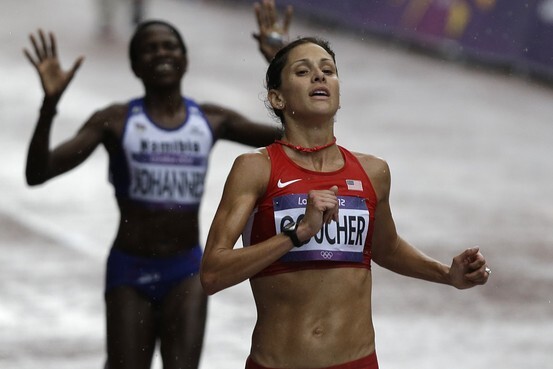
Unfortunately, medical professionals don’t know exactly what causes dystonia and there is currently no cure, but there are some treatments available to help lessen some of the symptoms.
Physiotherapy can also help affected individuals deal with or lessen their symptoms. Goucher said in her post that she had started on some medication that was helping with her symptoms.
(02/09/2022) ⚡AMPby Brittany Hambleton
The truth about blood lactate, why lactic acid isn't the enemy you thought it was
Every runner is familiar with that burning sensation that builds up in your legs during a hard run. For years, a buildup of lactic acid was blamed for this unpleasant sensation, and coaches and sports scientists have tried to devise ways to rid your body of this so-called toxin as fast as possible. New research, however, is suggesting we’ve been wrong all along. So if lactic acid isn’t to blame, what is?
What is lactic acid?
When you’re engaging in intense physical activity, your body has to burn sugar (glucose) for energy. When you do this, there are two potential outcomes. If you’re exercising at an intensity that allows your cells to get enough oxygen (think walking, easy jogging or steady-state running), the end product of that sugar-burning is pyruvate. Because you’re working at a low intensity, pyruvate can easily be shuttled back through the same pathway to help produce more energy later on.
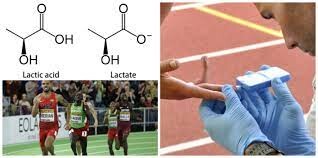
If you’re working at a high intensity (i.e.- sprinting), your body can’t get enough oxygen for that process to work. This is called anaerobic respiration (as opposed to aerobic respiration). In this case, your body converts pyruvate to lactate and hydrogen, collectively known as lactic acid.
The terms lactate and lactic acid are often used interchangeably, but they are not exactly the same thing. As we’ve learned, lactic acid is a combination of lactate and hydrogen. That hydrogen ion lowers the pH of your muscles and makes them more acidic, which is where the burning sensation comes from. This is where lactic acid got a bad rap. In reality, it actually helps your muscles.
Here’s how: when lactic acid leaves your muscles and enters the bloodstream, the hydrogen molecule detaches so you have lactate and hydrogen existing separately. That lactate can then be recycled and used as energy, which your body desperately needs in that moment. Lactate already exists in your body, even when you’re at rest, but most of the time your body clears it out about as fast as it’s created. As your exercise intensity increases and your oxygen needs exceed supply, lactate levels increase, which triggers your heart rate and respiratory rate to increase in order to supply the muscles with the energy they need.
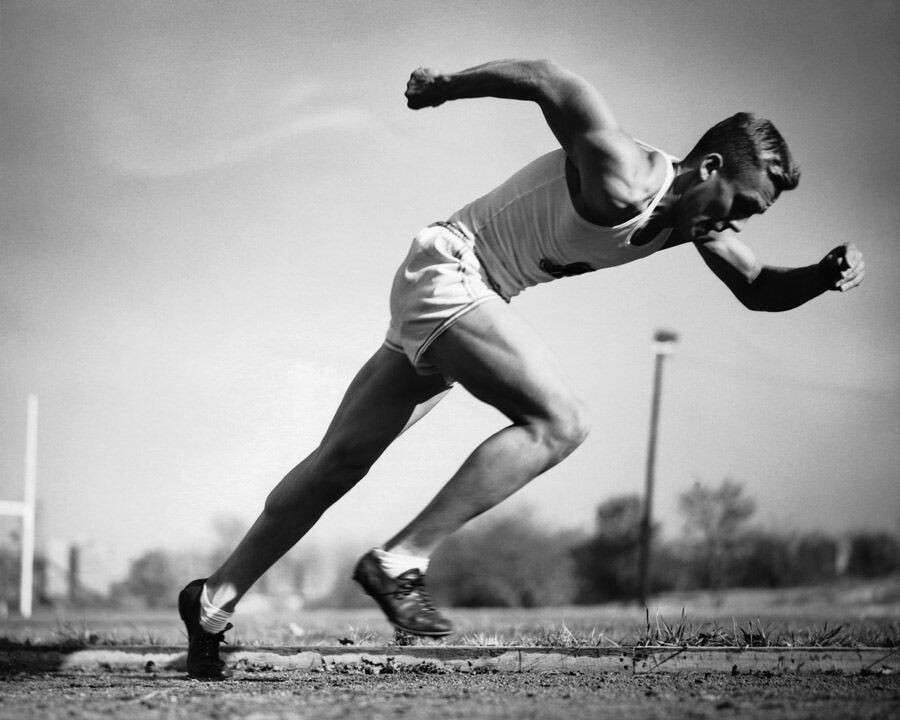
How does this impact performance?
Contrary to what you may have been told, you don’t have to worry about lactic acid buildup. Why? Because your body simply will not allow you to exercise past the point that it can safely clear lactate and hydrogen from your blood. When you hit that limit, no amount of mind over matter will prevent you from slowing down. This is called your lactate threshold.
A very fit individual can only keep running at this intensity for two to three minutes. 800m runners, for example, will use this system primarily during their race and are thus very well-acquainted with hitting their lactic acid threshold (hence why the final 100m of an 800m race are often not pretty). The same goes for the world’s best 1,000m and 1,500m runners.
To recap so far: that burning sensation in your muscles is not caused by lactic acid, but by hydrogen ions (and other chemical byproducts that researchers are still investigating) that are causing your muscles to be more acidic. These ions attach to lactate and enter your bloodstream, ultimately forcing your body to slow down.
How can I reduce lactic acid?
When you exercise at a high intensity, lactate and hydrogen are going to build up in your blood and there’s nothing you can do to prevent that (as we’ve learned, that extra lactate is actually a good thing). What you can do is increase your fitness level so it takes you longer to reach your lactate threshold by improving how efficiently you use oxygen while exercising. This will allow you to train harder for longer before oxygen is no longer sufficiently supplied to your cells, and lactic acid is produced.
How quickly can you recover from lactic acid buildup?
Your body can clear lactic acid fairly quickly once you reduce your exercise intensity. That’s why you can do a series of 400m repeats at a high intensity as long as you rest in between. The harder you run, the longer you will need in between intervals in order to produce the same level of intensity again.
What about DOMS?
For a long time, lactic acid often got blamed for causing the delayed-onset muscle soreness (DOMS) that often follows a bout of intense exercise, but we know now that is not the case. That soreness you feel the day or two after a hard workout is a result of microscopic tears that form in your muscles during intense exercise. Within reason, these tears are a good thing because it’s the healing process that causes muscle growth.
This is why you may have sore legs the day after a long run or race. You likely weren’t running fast enough to reach your lactate threshold, but you sustained enough tiny tears in your muscles to cause some discomfort in the days after your run. As long as this does not persist for more than a few days, this is a sign that you’re building strength and endurance.
The bottom line
Lactate and lactic acid are not your enemies. In fact, they’re there to help you continue to produce energy so you can keep working at a higher intensity. If you train consistently and recover well between sessions, you’ll be able to increase your lactate threshold so you can run faster and farther.
(02/08/2022) ⚡AMPby Brittany Hambleton
Three stages of speed work for beginners, use these three stages as a framework to help you get faster
Speed can be intimidating for many new runners to implement into training. If your goal is to get quicker, the purpose of speedwork is to help you feel more relaxed and comfortable while running at a faster pace. If you’re new to running or have simply never done a speed session before, you can use these three stages as a tool for training.
You’ll find the inclusion of speedwork will complement your easy mileage, and you’ll see the results first hand.

Stage one – Making strides
If you’ve never done any kind of max speed training (or if it’s been a while), it’s important to start small. Stage 1 exercises are a good introduction, setting the stage for more explosive work. Begin by doing strides for 80 to 100m four times with walk-back recovery. Adding these to your training one day a week will make a huge difference. Eventually, these strides should be done after every recovery run.
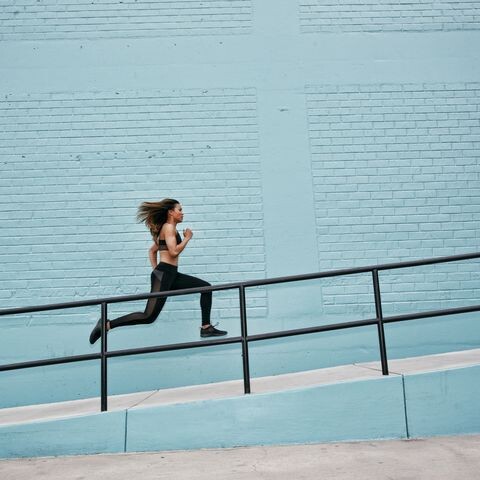
Stage two – Hills and intervals
After doing two to three weeks of stage one workouts, you can start to add intervals or short hill sprints in stage two. Interval work, such as two minutes on, one minute off, helps you operate outside of your comfort zone. Interval work should be done once or twice a week mixed in with a few easy runs.
Stage three – Add intensity
Once you have gradually built up and conquered a few weeks of stage one and stage two workouts, you can start to incorporate higher-intensity intervals, for example, 10 reps of 400m with short jog recovery. Limiting these exercises to once or twice a week maintains the appropriate intensity without risking injury or causing too much training fatigue.
(02/08/2022) ⚡AMPby Marley Dickinson
Why can´t I lose those last few pound?
“I can’t lose weight like I used to. I must be eating too many carbs”
“Do you think a keto diet is a good way to drop a few pounds?”
Judging by the phone calls I get from potential clients, an increasing number of runners of all ages are complaining, “Why can’t I do something as simple as shed a few pounds???” They are frustrated and at a loss about what to do to lose undesired body fat.

Speaking at the annual meeting of the American College of Sports Medicine (June 2021; www.acsm.org), Kevin Hall PhD explained that fat loss is far from simple. Dr. Hall works at the National Institutes of Health. His laboratory investigates how metabolism and the brain respond to a variety of changes in diet and exercise. His research has helped identify the complex mechanisms that regulate weight.
Weight loss is not simple

You’ve likely heard, “A pound of fat equates to 3,500 stored calories. To lose one pound of body fat a week, you can simply knock off 500 calories a day—or burn off 500 calories more than usual, or some combination of the two.” Hall explained the “simple” approach to weight loss just doesn’t hold true. Runners who are chronic dieters would have shriveled up and disappeared by now. Not the case.
Weight loss is not simple because our bodies adapt to “famines” by conserving energy. When food is scarce, be it a famine or a diet, the body conserves energy (metabolism slows, spontaneous movement lessens) and simultaneously appetite increases. Hence, eating less (dieting) takes persistent effort. The greater the energy deficit and the greater the weight loss, the greater the increase in appetite. Losing weight becomes more and more challenging. Hence, most runners end up unwilling or unable to sustain for a long time a diet with a calorie reduction of 25%. For a typical female runner who maintains weight at about 2,400 calories, that’s an 1,800-calorie reducing diet. Based on my experience, runners inevitably self-imposed a 1,200 – 1,500 calorie reducing plan. No wonder their diets fail! The stricter the diet, the hungrier the dieter, the bigger the backlash. The runner ends up devouring way too much ice cream, too many cookies, chips…
The bottom line: Runners who diet commonly end up heavier. You want to learn how to eat competently by working with a registered dietitian (RD) who specializes in sports nutrition (CSSD).
Is keto the answer?
So often I hear frustrated runners ask, “What if I just do keto (or Paleo or another trendy diet) for a bit and then go back to eating “normally?” Ha! When runners have managed to successfully lose weight, they can’t go back to eating like they used to eat. These dieters need fewer calories to support their lighter body. For each kilogram (2.2 lb) of weight lost, a dieter requires about 25 fewer calories/kg per day. Hence, runners who lose 10 kg. (22 lbs.) need about 250 fewer calories per day to maintain their new reduced weight. Unfortunately, appetite-regulating hormones nudge them to want to eat more than that. This gets to be a tiring fight, and most folks lose the battle of the bulge.
The bottom line: Preventing weight gain in the first place might be simpler than trying to reclaim a former physique!
Are carbs the problem?
What if you could lose weight by cutting carbohydrates but not calories? Diet gurus have promised this for years, as do today’s keto supporters. Anti-carbers claim high-carb diets lead to excess insulin secretion, hunger, excessive eating, and fat gain. Low-carb/keto diets are touted to reduce insulin, hunger—and promote easy fat loss.
Not so simple. Despite popular belief, simply knocking off starches (bread, pasta, grains) and sugary foods does not guarantee fat loss—unless it creates an energy deficit. That is, eliminating a serving of rice from dinner can knock off 200 calories. But does the hungry dieter then indulge in a pint of sugar-free ice cream or a keto-bomb? The carb-free = calorie-free attitude can easily wipe out the deficit created by cutting out carbs.
Hall’s research does not support the carb-insulin theory that carbs are fattening. He closely monitored subjects in a metabolic ward who ate as much as they desired of high (75%) carb/high-glycemic diet designed to spike blood glucose and trigger high levels of insulin. The subjects did not gain body fat. In fact, every single subject eating the high carb/high insulin/low fat diet ate, on average, about 700 fewer calories/day less than when they ate the high fat/low carb/low insulin keto diet.
The bottom line: Carbs are NOT inherently fattening. (If carbs were fattening, then people in Asian countries who eat bowlfuls of rice would be obese. Not the case.)
If carbs aren’t fattening, what is?
The increase in obesity in the US correlates well with the increased intake of ultra-processed foods. Hall is pointing his finger at foods such as Oreos, soda, instant ramen noodles, chicken nuggets, etc. He has researched the impact of two weeks of an ultra-processed convenience food diet vs. two weeks of a homemade, natural foods diet. The menus were very carefully designed to be equally tasty. The subjects reported no differences in pleasantness between the two diets. They ate as much as desired.
With the ultra-processed diet, the subjects consumed about 500 more calories a day compared to the unprocessed diet. They gained weight during those two weeks—and lost weight (without trying to do so) with the unprocessed diet. Because both diets offered the same amount of sugar, carbs, and fat, those nutrients did not drive the weight change.
What’s going on? Hall is currently looking at why ultra-processed foods easily lead to weight gain.
The bottom line: Until we know more, your best bet is to limit ultra-processed foods. Fret less about sugar/carbs, and more about the processing. Somehow, find time to prepare meals. As a parent, please teach your kids to cook. Hopefully you’ll all enjoy the eat-well, stay lean diet!
(02/08/2022) ⚡AMPby Colorado Runner
Olympic Champion Elaine Thompson-Herah, excited as she prepares to race over 60m in Birmingham
Multiple Olympic champion Elaine Thompson-Herah will race over 60m at the Müller Indoor Grand Prix – a World Athletics Indoor Tour Gold meeting – at the Utilita Arena in Birmingham on Saturday, February 19.
Thompson-Herah, gold medalist in the 100m, 200m and 4x100m relay at the Tokyo Olympics, is the Jamaican national record-holder and second-fastest woman of all time over 100m (10.54) and 200m (21.53). Her incredible CV includes five Olympic titles and one silver across two Games, in addition to a World Championships relay title and 200m silver in 2015. A World Indoor Championships bronze medalist over 60m, she has a personal best of 6.98.

“I’m so excited to race in Birmingham to start my 2022 campaign,” the 29-year-old told the British Athletics website. “I have enjoyed competing in the UK over the years and there is always a special atmosphere at this venue.
“I ran my PB at this arena in 2017 (6.98), so competing here means a lot to me. This year is a huge one. I have big goals for the World Athletics Championships later this summer, but first I’d like to give fans something to cheer about in Birmingham.”
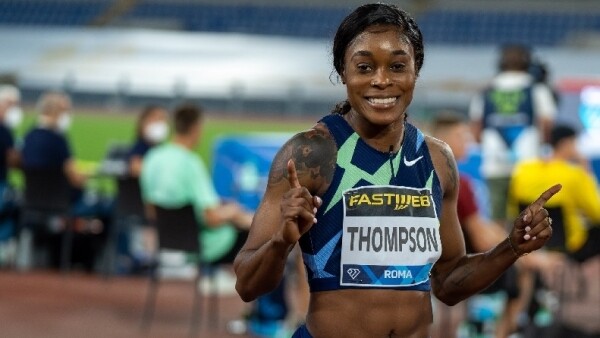
The Müller Indoor Grand Prix is the fifth meeting of the 2022 World Athletics Indoor Tour (Gold). There are seven ‘Gold’ level meetings across the series, which started with Karlsruhe on January 28 and culminating in Madrid on March 2.
Throughout the series, each athlete’s best three results will count towards their overall point score. The athlete with the most points in each scoring discipline at the end of the tour will be declared the winner and will be awarded a USD$10,000 bonus along with a wild card entry for the World Athletics Indoor Championships Belgrade (March 2022).
(02/08/2022) ⚡AMPMuller Indoor Grand Prix Birmingham
The Müller Indoor Grand Prix Birmingham is one of the leading indoor meetings in the world with world-class athletics as part of the World Indoor Tour Gold series. The event will be staged at its traditional home at Utilita Arena Birmingham setting the tone for what is set to be an incredible year of track & field. ...
more...The Surf City USA Marathon in Huntington Beach returned its traditional first Sunday in February date for the first time since 2020
The Surf City USA Marathon in Huntington Beach had a field of approximately 2,000 people competing in the race’s 26th edition.
The 2021 race was delayed to Sept. 11 because of the coronavirus pandemic. It usually draws a capacity field of 2,500. The smaller field is likely due to the pandemic and the fact that this was the second running of the race in less than five months, race publicist Dan Cruz told City News Service.

The marathon began at 6:30 a.m., 14 minutes before sunrise, on Pacific Coast Highway between the ocean and the Hilton Waterfront Beach Hotel.
The 26-mile, 385-yard course then quickly passed the Huntington Beach Pier. Miles two through nine went through Huntington Beach’s Central Park and miles 9 through 15 through the Bolsa Chica Ecological Reserve.
Miles 16 through 25 are on a beachfront running path paved over the sand. The final mile took runners along Pacific Coast Highway to the finish line, also near the Hilton Waterfront Beach Resort.
The marathon field was limited to 2,500 because the beachfront running path is not part of the race’s closed course and runners could encounter walkers, bicyclists and others not participating in the race. The path is only 8 feet wide for a few stretches, Cruz said.
Johanna Torgesen of Coronado won the women’s race with a time of 3:06:12.44.
Robert Mohr of New York won the men’s race with a time of 2:32:52.90.
The field also included Heather LeFriec, a physical education teacher from Spokane, Washington, who ran in the Surf City USA Marathon to fulfill her goal of completing 50 marathons by her 50th birthday in March.
LeFriec became a competitive runner as a senior at Oak Harbor High School about 65 miles north of Seattle after tennis was moved from fall to the spring. She wanted to stay active, compete in another sport, something that might help her lose weight. She wasn’t skilled at soccer and volleyball, so they were out.
Because she always liked running, she chose cross-country and finished 12th in the Washington state cross-country championships. After running one year at an Idaho community college, she was offered a scholarship at Gonzaga where she set a school record in the 10,000 meters that stood for more than a decade.
(02/07/2022) ⚡AMP
Surf City USA
The Surf City USA Marathon and Half-Marathon attracts more than 20,000 runners from around the world. The exclusive oceanfront course runs along the Pacific Coast Highway (which is more like a street than a highway in this area), past the Huntington Beach Pier and the famous Southern California surfing beaches. Weekend highlights include many Super Bowl parties, the three-day Active...
more...Fitness Trackers: We Love the Data, But Are They Messing With Our Mental Health?
Some experts suggest they could heighten anxiety and lower motivation. But it all depends on how you use them.
Although I don’t remember when I put my fitness tracker into long-term storage, I certainly recall the reason: It made me doubt myself.
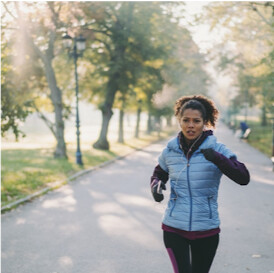
Like many people, I’d started wearing a tracker—in my case, a Fitbit Alta HR—as a way to track my daily steps as well as heart rate, sleep, and calorie burn.
For about 18 months, I loved digging into this data and looking at trends, but then I noticed a shift: I didn’t see the numbers as a way to work toward my health goals—they’d become a replacement for my own self-awareness.
For example, I’d wake up feeling alert and well rested, but my data suggested I’d had a terrible night of sleep. Suddenly, I wasn’t so bushy tailed and ready for the day anymore. I’d finish a run thinking I’d crushed it, but my heart rate and calorie burn data said otherwise, so that accomplishment would turn to disappointment.
Pretty soon, I started checking my numbers to determine how to feel, rather than the other way around. That’s not the fault of Fitbit, or any brand of tracker, but it was enough to make me ditch the device altogether. And it turns out I’m not alone.
The Trouble With Trackers
One survey of over 1,800 people on fitness tracker usage, habits, and stress found plenty of benefits from usage, including increased activity, but nearly half of the people feel anxiety or pressure as a result of tracker data. That led 45 percent of that group to wear the trackers less often—even though many of them felt guilty for not wearing the devices.
“Fitness trackers can measure inactivity, and some of the men and women I evaluate say that trackers exacerbate their feelings of anxiety and depression related to their body, which further demotivates them,” Leela Magavi, M.D., a psychiatrist and regional medical director for Mindpath Health, tells Runner’s World. “Some of these individuals hide their trackers as they begin to perceive them as reminders of their perceived failure.”
Those who already have anxiety disorders may feel this even more deeply, she adds, and that becomes problematic when this level of concern spikes their heart rates—which the trackers record. For those with obsessive compulsive disorders, trackers can also heighten compulsions, such as overtraining or engaging in disordered eating, says Magavi.
Even if you don’t have emotional health challenges, trackers could shift your perception in a negative direction, similar to what I’d experienced. That’s why it’s helpful to take a step back and build more awareness around their usage.
Signs It Might Be Time to Break Up With Your Tracker
Although I chose to stop using my tracker, it’s possible to take a less drastic step. You just have to acknowledge how you’re using the tracker and, especially, how it’s making you feel when you do.
“One red flag is focusing too much attention on the numbers,” Rocky Snyder, C.S.C.S., California-based trainer and author of strength training guide Return to Center, tells Runner’s World.
Of course it’s beneficial to have goals, he says, and trackers make it easy to create those and gauge progress toward them.
“The trouble starts when people many not take into consideration how their body is feeling,” he says. “For example, you’re focusing on heart rate but not keeping in mind that you might be under more stress or have muscle tension or a pain response, which can all affect that reading. You need to look at the bigger picture and not become so myopic on the numbers and stats.”
Another sign that your tracker is a mental-health hindrance is that you’re not enjoying your activity, Snyder adds. Despite the expression of nearly every runner in a photo taken at a race, this sport is actually supposed to be fun, remember?
“Don’t let your daily goal distract you from the true, underlying purpose of every program, which is to live a happier and healthier life,” he says. “If you find that you are mentally consumed by your fitness tracker, try leaving it behind and practice being in the moment of whatever adventure you’re guiding your body through.”
How to Make the Shift Toward Self-Compassion
Using trackers in a different way can not only help you make peace with their limitations, but actually benefit you in ways that support your emotional wellbeing, says Magavi.
“Trackers can help individuals create routines and transform healthy behaviors into positive habits,” she adds. “Every healthy behavior can be perceived as a win. For those who struggle with self-motivation, as we all do from time to time, accountability is key, and trackers can help you see how much you’ve achieved and practice self-compassion.”
In general, using them as part of a much larger strategy and staying aware of their effects could keep you from veering into the “obsessing over data” trap. That way, Magavi says, they’ll feel like supportive technology that keeps you motivated instead of defeated.
With this in mind, it’s likely I’ll rescue my tracker from the depths of the junk drawer—and I’ll use it in a much different way when I do.
(02/06/2022) ⚡AMPby Runner’s World
After the Beijing Olympics, This Biathlete Is Retiring and Returning to Her Running Roots
She’ll hang up her rifle and skis to be the new running director of the Craftsbury Outdoor Center in Vermont.
The 2022 Winter Games will be the last time three-time Olympian Susan Dunklee competes for Team USA; the 35-year-old professional biathlete has announced that she will retire after Beijing. But the end of her career, highlighted by two world championship medals and several World Cup podium finishes, marks the beginning of a new chapter that’s familiar territory for the Craftsbury, Vermont native.
This spring, Dunklee will hang up her rifle and skis to assume a full-time role as the running director for the Craftsbury Outdoor Center. She’ll be leading a program that’s supporting future generations of elite runners, while promoting sustainability in the same community that helped her develop into a dynamic athlete.
In an interview with Runner’s World, Dunklee shared how running continues to fuel her love for exploration and why she’s looking forward to supporting fellow athletes in their Olympic pursuits.

“I’ve been so immersed in biathlon for a long time, but running is really the place that I started out when I was younger and meant a lot to me for a very formative part of my life,” Dunklee said. “And I’m really excited to get back into it.”
Finding the Crossover Between Skiing and Running
While growing up in Barton, Vermont, Dunklee picked up skiing shortly after she learned how to walk, thanks to her family. Her dad, Stan Dunklee, competed in cross-country skiing at the 1976 and 1980 Olympic Games and now coaches cross-country skiing and track and field at the high school level.
At 5 years old, Dunklee started competing in cross-country ski races in Barton, which is known for producing top winter athletics talent, including Olympic cross-country skier Ida Sargent and Olympic biathlete Hannah Dreissigacker. Dunklee also thrived in that high level athletic environment.
“Sometimes you get these pockets of talent where kids are just doing something because it’s fun and it’s social, but you have enough of a group in one place that you have this threshold of momentum, and it just builds, you know?” Dunklee said. “You push each other, you train with each other, you have fun with it, you feel motivated, and it can take you places.”
When she was in first grade, Dunklee started tagging along on trail runs with her dad’s high school track team and loved the experience of exploring terrain on foot. “I remember the older high-school kids teaching me how to run down a mountain and just trying to learn how to bounce off the rocks and roll with gravity,” Dunklee recalled.
In high school, Dunklee shifted her primary athletic focus from skiing to running, because she enjoyed the traditions and atmosphere of running cross-country at the state level in Vermont. She appreciated how her St. Johnsbury Academy high-school coach worked to instill a level of commitment and consistency in the team’s training, and she felt that many of the cross-country courses where she races, which were “gnarly” and filled with hills, provided a unique “crossover between skiing and running.”
“Vermont cross-country really helped make me tough and resilient, so that was pretty cool,” she said.
In 2004, Dunklee was recruited to run for the cross country and track team at Dartmouth College. She embraced the opportunity because she wanted to compete in running and skiing at the NCAA level—and Dartmouth offers both athletic programs.
In the fall, she trained with the cross-country team in season, and would also jump into the ski team’s workouts once a week, which provided a unique cross-training dynamic. For example, she’d join the ski team on roller skis for an “over-distance” workout of 3-4 hours in the nearby Adirondacks or the White Mountains, a training session that remains her favorite form of exercise. In the winter, she trained full-time with the ski team in its NCAA season.
“It’s so empowering to feel like you could just keep going forever and to be up in these beautiful places, just really peaceful and nice,” she said.
Learning a New Sport
During her senior year, Dunklee received an email from U.S. Biathlon—the governing body for the sport that combines cross-country skiing and rifle shooting—in an attempt to recruit her. Her college ski teammate made the transition to biathlon after she graduated, so Dunklee was somewhat familiar with the sport, but she hadn’t participated in it before. The invitation also came at an ideal moment for the senior, who, like millions of other college students at the time, was facing the challenge of graduating during the Great Recession.
“It was hard to find jobs, and I still loved skiing and wasn’t quite ready to be done with it,” she said.
Growing up as the daughter of an Olympic cross-country skier, Dunklee also liked the idea of choosing her own journey in a new sport she could call her own. “There was something appealing about learning how to shoot and learning a new element that he had never done and had no experience with because I wasn’t just following in his footsteps,” she said. “I was going one step further and finding my own path.”
In the summer of 2008, she moved to Lake Placid, New York and jumped into U.S. Biathlon’s development program. However, learning a new sport that requires high levels of mental and physical focus wasn’t an easy task. Shooting was completely new to Dunklee and created a “fascinating challenge” that forced her to hone different strengths. She explained that athletes need to be disciplined with their pacing in order to have enough energy and focus to shoot accurately.
“I’ve always been one of those athletes who could just dig incredibly deep, push myself into the pain cave, and just fight through a race and gut it out. I’m scrappy, I’m tough, but with biathlon, to be able to shoot well, it’s a very different skillset,” she said. “I had to learn a little bit more discipline with that, but also the element of shooting itself requires this amazing ability to control your emotions.”
Dunklee has since become the most successful U.S. female biathlete in history, according to NBC Sports. She is the only American female biathlete with an individual world championships medal (silver in 2017 and 2020). So far at the Olympics, her best individual finish is 11th in the mass start at the 2014 Sochi Winter Games.
Returning to Running
Throughout her biathlon career, Dunklee kept running. During the height of the pandemic lockdowns in 2020, she ran every road in Craftsbury, where she’s been living and training since 2010, as a personal challenge. She still runs for an hour or two at a time three or four times a week, a routine that’s kept her balanced, she said.
“I see so many young athletes burning out, getting too specialized at too young of an age and investing too much of that identity just on one aspect of who they are,” Dunklee said. “And I'm just really glad that I didn't burn myself out as a young skier. And part of that was because I had this passion for running.”
In August 2021, after spending a decade as a member of Craftsbury’s Green Racing Project biathlon team, Dunklee was named running director of the Craftsbury Outdoor Center, an outdoor nonprofit organization and sportscenter for the local community with running, sculling, skiing, biathlon, and cycling programs.
Now she’s leading the running program, which includes annual camps, community running events, races, weekly track workouts, and fundraisers for local nonprofits, among other offerings. Recently, the organization formed a new team of elite runners for the Green Racing Project. In the remote-based club program, post-collegiate runners who compete in events ranging from the 800 meters to ultra races are provided with individualized coaching, gear, on-site training camps, and travel support, among other services, with Craftsbury as the primary sponsor.
“Now I get to stay at the outdoor center in a different role and also help really shape this new program we have … which is still very Craftsbury,” Dunklee said. “It has that same spirit of Craftsbury of being an athlete, reaching a high level, but also contributing to your community and promoting sustainability in lifelong sport.”
Looking ahead to Beijing as her final Olympics—the biathlon competition kicks off on February 5—Dunklee is at peace with closing this final chapter of her biathlon career in favor of starting the next phase of her life. After catching the flu upon arrival at the 2018 Pyeongchang Games and experiencing disappointment in her performances as a result, Dunklee said she realized that you can spend a lifetime preparing for a big moment, but there will always be factors outside of your control and it’s important to accept it in order to move forward.
“This time I just want to be able to go and try to stay focused on my process and take it all in, be flexible and see what happens,” she said. “I mean, I think I still have the capacity if I hit the peak fitness right, and I get a little bit lucky with how the wind is on the range when I come in and how other people do, I can still have a top result. But I don’t need to have that top result to validate my career.”
MORE FROM RUNNER'S WORLD ON APPLE NEWS
(02/06/2022) ⚡AMPby Runner’s World
Salomon announces return of North American Golden Trail National Series
After the success of its inaugural year, the North American Golden Trail National Series (GTNS) will be returning in 2022, sponsor Salomon has announced. Runners are invited to race any of the five U.S. and Canada-based races for a chance to compete in the GTNS Grand Final at Madeira Ocean Trails in Madeira, Portugal in October.
The series
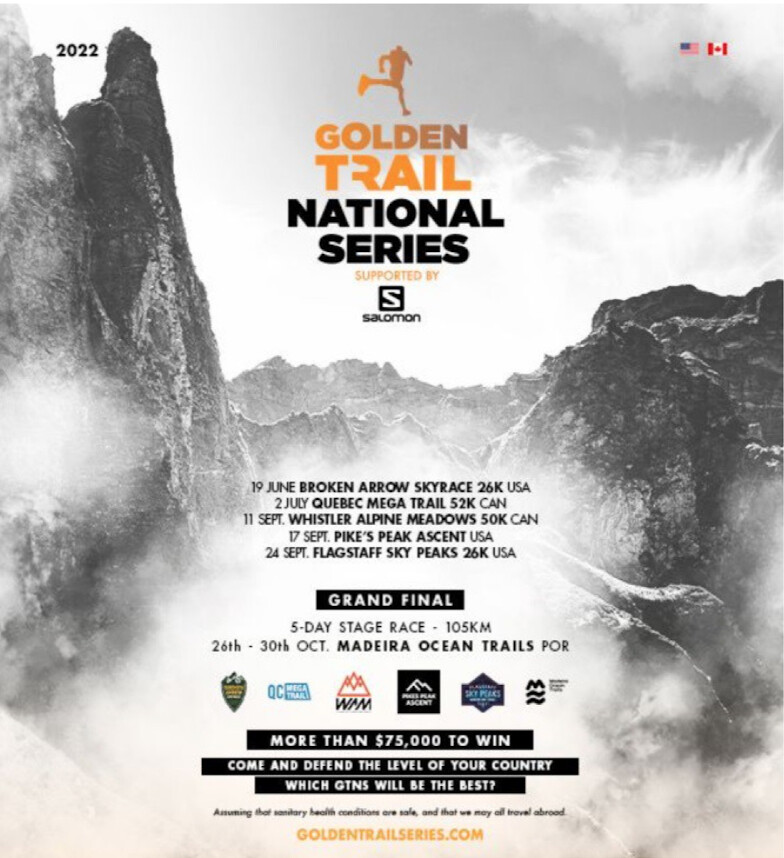
The 2022 series is comprised of four qualifying races and a final, all of which will take place in either Canada or the U.S. The top two men and women from each GTNS race will be invited to race the final at Flagstaff Sky Peaks, and from there, the top three men and top three women will receive an invitation to race the Grand Final at Madeira Ocean Trails, which will feature the top athletes from each of the seven GTNS around the world.
The Broken Arrow 26K showcases some of Palisades Tahoe’s most famous terrain. From the valley floor at 6,200 feet, runners will ascend nearly 5,000 feet as they navigate the rugged terrain of one of North America’s most challenging ski resorts. The course is characterized by plenty of vertical gain over a technical and physically-demanding landscape that’s mostly above the tree line.
Quebec Mega Trail 50k — Quebec
The Broken Arrow 26K showcases some of Palisades Tahoe’s most famous terrain. From the valley floor at 6,200 feet, runners will ascend nearly 5,000 feet as they navigate the rugged terrain of one of North America’s most challenging ski resorts. The course is characterized by plenty of vertical gain over a technical and physically-demanding landscape that’s mostly above the tree line.
Quebec Mega Trail 50k — Quebec
Starting with one massive climb, the Whistler Alpine Meadows 50K is a full point-to-point race route that features 9,200 feet of elevation gain. Beginning at Whistler’s Cheakamus Canyon area, the course heads over the very top of Whistler Mountain to bring runners along Singing Pass and finishes up on the challenging windy single track of the Comfortably Numb trail system.
Pikes Peak Ascent — Manitou Springs, Colorado
The Pikes Peak Ascent is a half marathon distance to the summit of Pikes Peak with an elevation gain (start to summit) of 7,815 feet (2,382m).The course runs mostly on Barr Trail, which has an average grade of 11 per cent, is often narrow, winding, or steep along with sharp turns and abrupt changes in elevation or direction.
The Flagstaff Sky Peaks 26K will feature some of the top trail runners in the world going head-to-head on the volcanic edge of the San Francisco Peaks. Runners will climb for the first 6 miles from the base of Agassiz Peak to the slopes of Arizona Snowbowl Ski Resort. From there, runners will ascend nearly 2,000 feet (610m) in the next mile, topping out at just over 11,500 feet, before heading back down through winding single track onto the iconic Arizona Trail, which spans 800+ miles from Mexico to Utah.
Flagstaff Sky Peaks 26k GTNS Final — Flagstaff, Arizona
We are thrilled to bring the Golden Trail National Series back to North America this year after seeing so much involvement and support from the trail running community in 2021,” says Stephanie Gardner, sports marketing manager for Salomon USA. “By continuing this race series, we can help further invest in the North American trail running community and provide them opportunities to compete at a global level.”
(02/06/2022) ⚡AMPby Running Magazine
New study finds more nature exposure on a run improves the route
We know that the right running route can make or break your run, but new research published in The Journal of Urban Forestry suggests that greater nature exposure leads to greater perceived satisfaction and that runs with traffic lights are less satisfying.
Although it is no surprise to anyone that routes with too many traffic lights can ruin a run, previous research indicates that running in a natural environment can ignite feelings of revitalization, engagement and can decrease depression. The connections to nature are several reasons why the sport of trail running has gained popularity in the past 20 years.

The study
The data was collected from 249 runners in Helsinki, Finland, then was assessed in terms of the correlations between running satisfaction and nature exposure. The analysis revealed that runners prefer and are often more satisfied when exposed to or surrounded by nature. Runs with less nature and more traffic lights were found to break momentum and were inversely related to running satisfaction. The analysis also reported the participants experienced higher satisfaction running outdoors compared to indoors.
The positive impacts of nature exposure on running satisfaction further verify the connections between the environment and well-being.
(02/06/2022) ⚡AMPby Running Magazine
Are you a shuffler or a bouncer, and does that matter?
Do you tend to drive your knees up high and get a lot of air when you run, or do you prefer to keep your feet closer to the ground? We tend to focus a lot on the elements of good running form and which stride patterns are better than others, but in this case, there may not be one right answer. According to new research, whether you’re a bouncer or a shuffler doesn’t appear to have any effect on your overall running economy.
The study
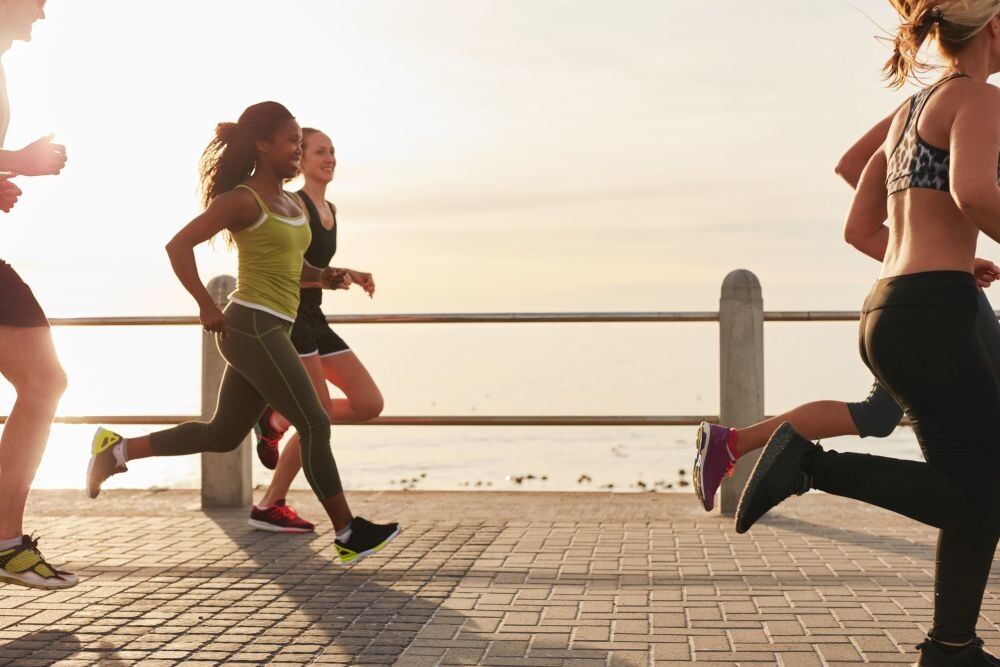
According to the authors of the paper, published in the International Journal of Sports Physiology and Performance, runners employ different strategies to lower their energy costs. Runners who keep their feet closer to the ground rely more heavily on strategies that propel them forward, while runners who get more air time focus on rebound strategies to get them to the finish line. We tend to think of runners who get more air time as stronger, more efficient runners, but is that truly the case?

The researchers recruited 52 trained runners (31 males and 21 females) to answer this question. Each participant completed a series of short treadmill runs at increasing speeds with two minutes of recovery between each. While they were running, the researchers measured their rate of oxygen consumption as a way to assess their overall running economy. A higher rate of oxygen consumption indicated a lower running economy. Markers were then placed on the participants so the researchers could assess their running kinematics in a separate series of tests to collect three-dimensional kinematic data for each participant.
Shuffling vs. bouncing
After analyzing their data, the researchers found that the amount of air time the participants had while running did not appear to affect their overall running economy. In other words, it didn’t matter whether they were shufflers or bouncers, or somewhere in-between. “Therefore, there is no advantage of choosing, favouring, or prescribing one specific global running pattern based on [these] metrics,” the researchers concluded.
The authors of the study continue to say their findings are consistent with work done by earlier researchers, which suggested that runners subconsciously adopt the ideal running biomechanics (stride length, stride frequency, contact time and leg stiffness) for them, a concept known as self-optimization.
These results lead the researchers to one final conclusion: “There is no advantage of choosing, favouring, or prescribing one specific global running pattern along a continuum based on [these] metrics. Therefore, coaches should not try to modify the spontaneous running pattern of runners at endurance running speed to improve RE (running economy).”
Should you ever try to change your stride?
This is not a straightforward question. As more research is done, it’s becoming increasingly evident that there is no one optimal way to run. Yes, there are certain characteristics of running form that are undesirable (like overstriding, pelvic drop or severe hunching of the shoulders), but generally, these issues cannot (and should not) be fixed by actively trying to change your running form. Instead, doing regular drills, stretches and a targeted strength training routine will help your body find its optimal running form on its own.
If you’re concerned about your running form, speak with a physiotherapist who specializes in running, or a coach who is trained in running biomechanics, to help you devise a stretching and strength-training routine to help you improve your running economy.
(02/05/2022) ⚡AMPby Brittany Hambleton
Muller Indoor Grand Prix Birmingham
The Müller Indoor Grand Prix Birmingham is one of the leading indoor meetings in the world with world-class athletics as part of the World Indoor Tour Gold series. The event will be staged at its traditional home at Utilita Arena Birmingham setting the tone for what is set to be an incredible year of track & field. ...
more...100m Olympic champion Marcell Lamont Jacobs wins his first race back since Olympics
The world’s fastest man, Marcell Lamont Jacobs, returned to the track in Germany on Friday to compete for the first time since his gold-medal-winning 100m performance in Tokyo. Jacobs ran an impressive 6.51 seconds over 60m to take the win at the ISTAF Indoor Meet in Berlin.
Jacobs had an ideal first race back, as he got out of the blocks well, using his power in his first few strides to separate himself from the field. His time of 6.51 seconds is only .04 seconds off the Italian national record he set in March of 2021. Arthur Cissé of the Ivory Coast was second in 6.60 and France’s Jimmy Vicaut was third in 6.61.
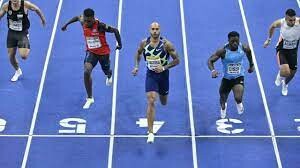
The reigning Olympic champion will have his eyes on the 60m title at the World Indoor Championships in Belgrade, Serbia, next month. Jacobs time is the fifth-fastest this year behind Christian Coleman and Treyvon Bromell of the U.S.
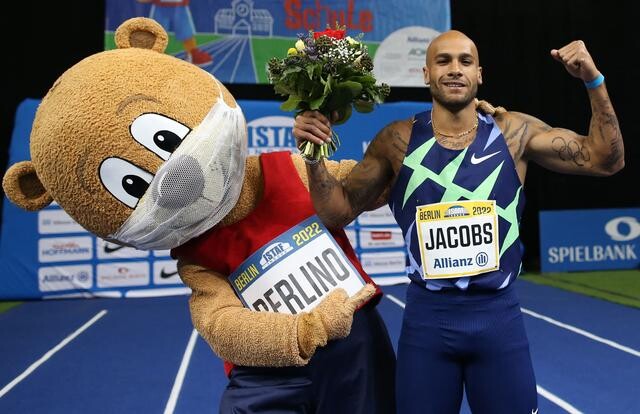
Coleman is the current 100m world champion, who just returned to competition last weekend at the NYC Millrose Games, after being suspended for a year due to missing a drug test in 2019.
Coleman ended up having to miss the Tokyo Olympics because of the suspension. All eyes will be on the 60m battle between Jacobs and Coleman at the World Indoor Championships.
(02/05/2022) ⚡AMPby Marley Dickinson
What's Better: Training By Time Or By Distance?
Many runners have a keen sense of distance. We know exactly how long our favorite loop trail is and might run laps to and from the driveway to finish out our mileage at an even number. Tracking your training in distance is one way to measure training load. Another way to measure volume is in time. What are the benefits and drawbacks to training in minutes versus training in miles?
TIME
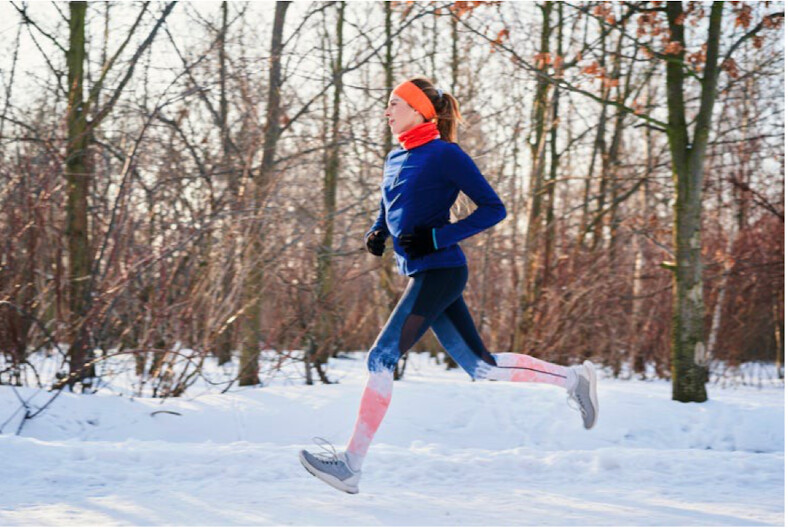

To mitigate environmental factors in your run.
At altitude, it takes longer to run a mile than at lower elevations. Mentally, it's tough to muscle through a run that should feel faster. Jason Fitzgerald, a coach and host of The Strength Running Podcast, suggests focusing on effort rather than pace for 45 minutes (or however long your 5-mile run might usually last) when the terrain is more challenging or you're training at altitude.
Switching from tracking distance to time places the focus on effort, rather than how far you go. That's consistent with our understanding that the body doesn't know miles, it knows stress. Capping time on feet for technical terrain or winter conditions is a good way to maintain a training load that's productive without over-stressing since uneven surfaces slow you down and add to effort. For altitude or challenging terrain, training by time can more effectively manage load, mentally and physically.
It's ideal for recovery runs.
Tracking recovery runs by time can help you slow down and home in on a relaxed effort. Some people will rush through a recovery run just to get the miles in, instead of focusing on exertion. Turning around when you've hit a certain time instead of a mile marker allows you to run at a pace that's well below aerobic threshold, rather than hitting a certain speed goal. Running for time can feel easier, like running out the clock rather than trying to score a basket at the buzzer, making it an ideal metric for recovery days. It allows you to focus on maintaining a true recovery effort , rather than how far you've gone. For recovery runs, you're aiming for 50-75 percent of your maximum heart rate, regardless of distance.
It can be less daunting.
For those that are new to running or getting back into it, running a specific distance can feel daunting. If you haven't established a predictable training pace (though this too will vary when you're training by effort), it's difficult to anticipate how long your run will take. Plus, a slower pace means your time on feet will be longer than someone with a faster pace, which adds up to greater training load.
For that reason, measuring how long you are putting in aerobic intensity matters more than how far you went. Corrine Malcolm, a running coach whose background is in nordic skiing, says, "Time is a natural metric to make training even across modalities." So if you're new to running, but also spend time doing other sports, like biking or skiing, you'll have a better idea of how your effort compares. Newer runners especially might be less tempted to compare miles if time is prioritized over distance.
DISTANCE
Build confidence for your race.
While upping how long you run can help you increase your feet-on-ground endurance, it doesn't necessarily help improve endurance associated with a hard effort. Having mileage runs on long days can be good for building confidence because on race day, you are going to be running for distance. If you're training for a long race, experimenting with further runs that approach race-distance can help boost your confidence in running a certain distance.
You're less likely to slow down.
If you are given a timed run, it's easy to slow down, way down. Malcolm says some athletes might think, "Why rush it?" That mentality could make athletes subconsciously decrease their effort, leading them to run less far, and falling short of their ideal training load. Having a specific distance goal is an objective way of ensuring you're getting in enough mileage to reach a certain goal. In order to improve, runners should run mostly easy, with a few runs at higher intensities. If timed runs lead you to only run slowly, it might not be your best approach. This applies specifically to runs with constant effort, not timed intervals, which conversely might help you run faster in short bursts.
Practicing the art of the kick.
When you have the finish line in sight, you'll likely pick up the pace to finish your run. If you're running for time, you might just jog it out. If a certain distance is your goal, once you're done, you're done. Having a set mileage can give you the freedom to practice your kick at the end of a run without losing nice, round numbers. If you want a good ending kick on race day, you'll need to practice it in training. Plus, psychologically, it's fun to push it when the end is nigh.
THE TAKEAWAY
All the information your watch gives you-pace, ground contact time, vertical oscillation-can be helpful, but only if you know how to use the information. Sometimes you may just want to stop looking at your watch and just run.
"I think a lot of people have lost the ability to run by feel," Fitzgerald says. If you become obsessive about the numbers and allow that to affect your mindset, you'll suffer. Running is about having fun while challenging yourself, and when it comes down to it, whatever training load is most sustainable for you is the one you should use.
"The most important thing," Malcolm says, "is to put in quality consistent training over hitting mega numbers or hitting huge volumes." So no matter how you track your run, as long as you set regular goals, you'll be building a solid running base.
(02/05/2022) ⚡AMPby Trail Runner Magazine
Brooklyn resident runs shirtless in a blizzard
It turns out Canadians aren’t the only ones who know a thing or two about braving the cold. When a big winter storm hit New York City this weekend, one Brooklyn runner laced up his shoes and stepped out for a 10-mile (16km) run, but he left his shirt at home. The runner, Tim Zhou, was interviewed by a local news station, where he revealed this has become an annual tradition.
Zhou told the reporter that he’s been doing this for a couple of years, saying that he prepares himself by doing ice baths and cold showers. “You get used to the cold,” he said. “So you go out on days like these and you don’t really feel it.”
This tradition puts Zhou among the ranks of barefoot winter runners and these guys, who ran shirtless after a blizzard in Whiterock, B.C., and while he’s certainly a brave runner, it’s possible he’s part of the 20 per cent of the population who’s genetically resilient to the cold.
(02/05/2022) ⚡AMP
by Running Magazine
Sha'Carri Richardson documentary airs at Sundance Film Festival
One of the most polarizing figures in track and field throughout the past two years, Sha’Carri Richardson, has been featured in a documentary about her journey. The 24-minute film, entitled Sub Eleven Seconds, follows Richardson in the lead-up to the 2020 U.S. Olympic trials.
The documentary is produced by the late American fashion “OFF-WHITE” icon Virgil Abloh, who died in late 2021 from cancer. The film premiered online at Sundance 2022, which ran from Jan. 20-30.
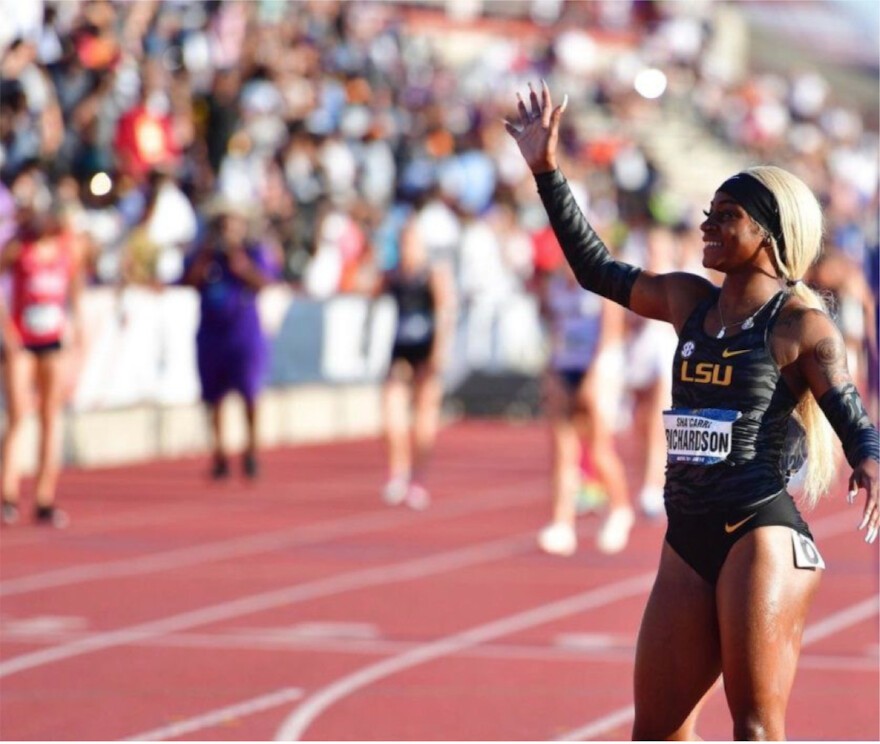
Richardson made headlines last summer after qualifying for the Olympic Games at U.S. trials, but was later disqualified when it was discovered she had used marijuana; the athlete said it wasn’t a regular habit, but that she had used it to cope with the recent passing of her mother. Her disqualification sparked plenty of debate and outrage among media outlets, athletes and celebrities.
The sprinter returned to Eugene to compete at the Diamond League after missing the Olympics due to her one-month ban. In a race that brought the second-fastest women’s 100m time ever by Jamaica’s Elaine Thompson-Herah, Richardson finished last.
Heading into a year with two major U.S. international competitions (the World Indoor Championships in March and the world championships in Eugene in July), Richardson has not announced when she will return in 2022.
(02/05/2022) ⚡AMP
by Running Magazine
The craziest active streaks in running
On Jan. 29, New Zealand’s Nick Willis ran another sub-4 minute mile at the NYC Millrose Games for the 20th consecutive year. This achievement is something only a few runners have come close to, which has sparked us to find the craziest active running streaks.
Nick Willis – 20 years of sub-4 minute miles

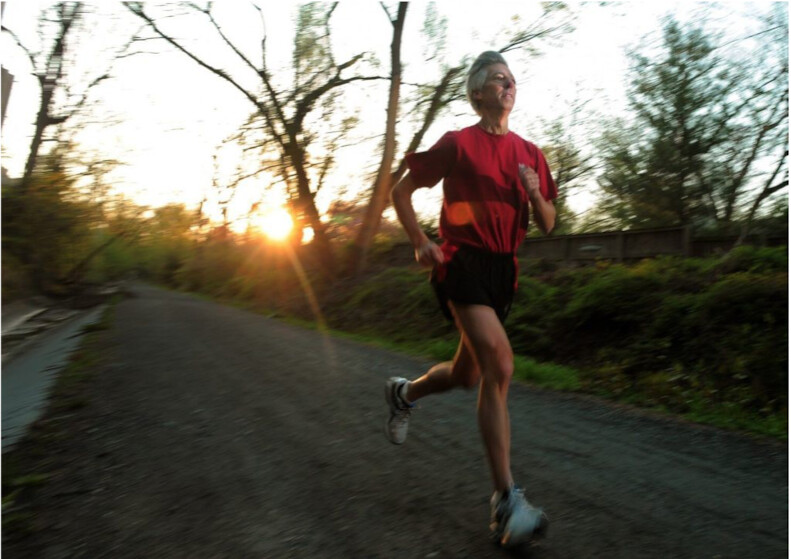
Willis first ran sub-4 during his undergrad at the University of Michigan in 2003 (3:58.15). At last weekend’s Millrose Games, Willis broke four minutes for the 63rd time in his career (3:59.71), which marked the 20th consecutive year he has run sub-4 miles. Willis is New Zealand’s only two-time Olympic medallist in the 1,500 metres, winning a silver medal in Beijing and bronze in Rio. In 2020, Willis passed his countryman, Sir John Walker, who previously held the consecutive sub-4 mile record of 18 years.
Simon Laporte – 46 years of running every day
At 46 years, the Notre-Dame des Prairies, Que. runner holds the longest active run streak in Canada. Laporte began his streak on Nov. 27, 1975, and hasn’t missed a day since. The 70-year-old run streaker has no plans to stop anytime soon, and he is planning for his streak to reach 50 in 2025. The longest active streak in the world is held by Jon Sutherland of Utah. Sutherland’s run streak of 52.7 years recently passed the legendary record set by Ron Hill (52.1) last year.
Streak Runners International (SRI) says for runs to qualify as a streak, they must cover at least one mile (1.61 kilometres) each day. The run may occur on the road, track, trails, or treadmill, but a minimum of one mile must be completed.
Lois Bastien – 41.8 years of running every day
Bastien holds the longest-standing women’s run streak record, at 42 years. She is now 79 and still runs every day in her home state of Florida.
Ben Beach – 54 consecutive Boston Marathons
Although Beach does not have the record for most Boston Marathon finishes (58), the 72-year-old marathoner does have the record for most consecutive Boston Marathons (54). Beach ran his first Boston in 1967 when he was 18. This year, Beach completed his 54th consecutive Boston Marathon, finishing in 5:47:27.
Allyson Felix – Five straight Olympic Games with a medal in track and field
U.S. sprinter Allyson Felix is one of the greatest female Olympians ever. She has not only represented her country at five straight Olympic Games, but she has also medalled at all of them (seven gold, three silver and one bronze) – a feat that no other female athlete has accomplished in track and field. Although Felix intended that Tokyo would be her last Olympics, her streak will remain active until Paris 2024, where Jamaican sprinter Shelly-Ann Fraser-Pryce will get the chance to equal her at five consecutive Olympics with a medal.
Karl Meltzer – a 20-year streak of winning a 100-mile race
Meltzer, 54, has been on the elite ultramarathon scene for more than 20 years. With his most recent win this year at the Beast of the East 100-miler, he has won a 100-miler for 20 consecutive years, bringing his career total to 45 wins over 100 miles. This is an unprecedented number, and the only person who can top it (for now, at least) is Meltzer himself.
(02/05/2022) ⚡AMPby Running Magazine
Kenyan Daisy Cherotich will be targeting personal best at RAK Half Marathon
Reigning Discovery Kenya cross country champion Daisy Cherotich hopes to lower her personal best when she lines up at the Ras Al Khaimah (RAK) Half Marathon to be held on February 19.
Cherotich has personal best of 66:15 clocked at the Lisbon Half Marathon while finishing second behind champion Tsehay Gemechu of Ethiopia.
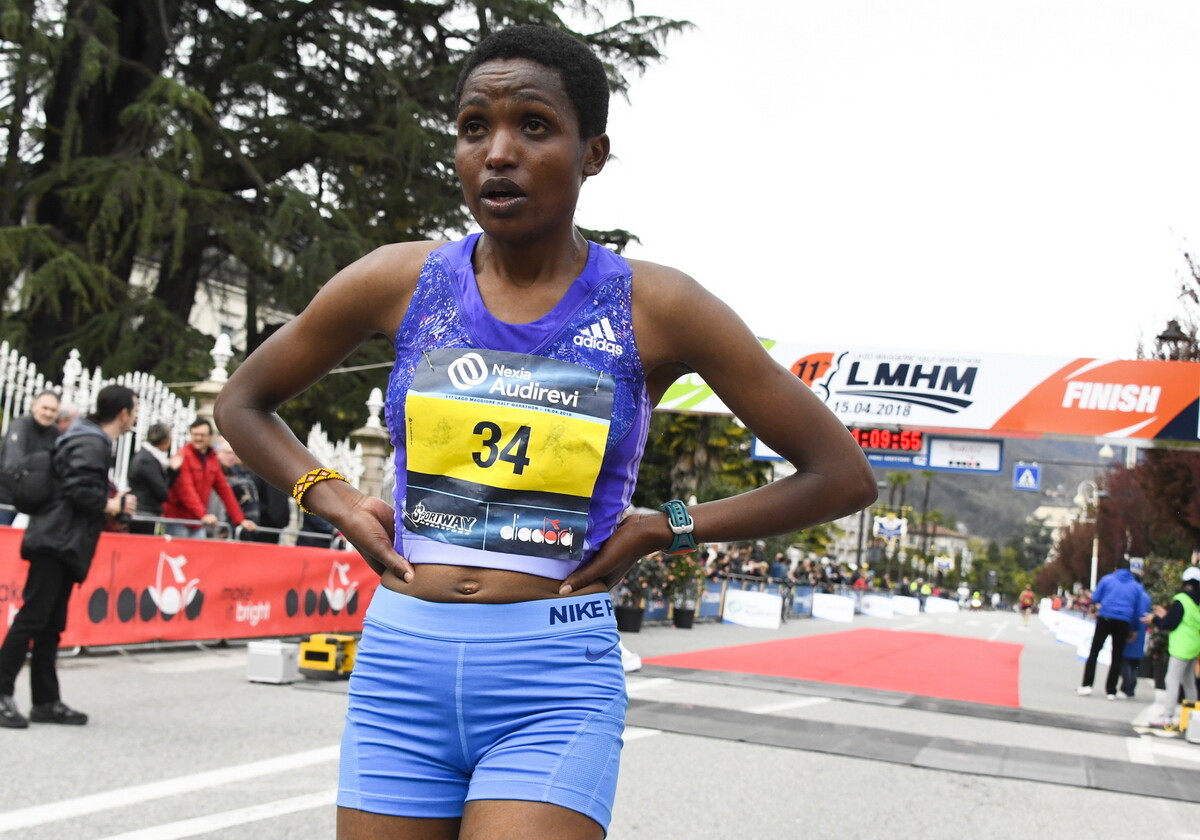
She said it will be a great achievement to win the RAK race with personal best.
“This has been in the pipeline for a long time and heading for the RAK Half Marathon, I want to make a difference in my career. I have not competed in many road races like my competitors but I believe I can pull a surprise,” said Cherotich.
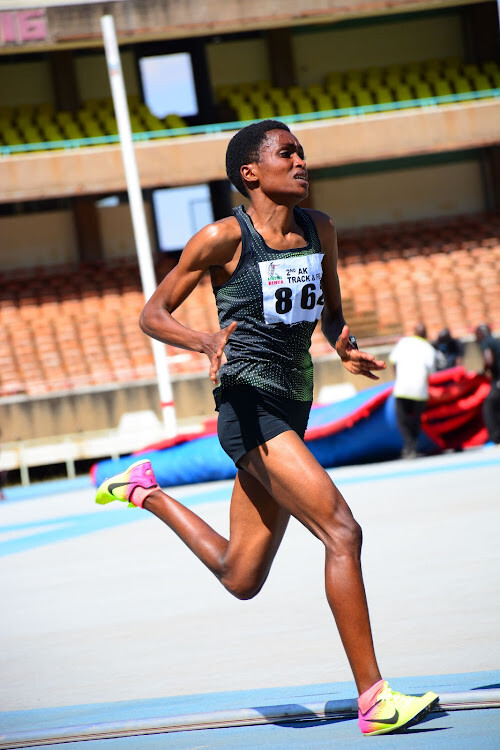
The Nandi-based runner, who trains alongside Eva Cherono, was a little-known athlete until she stunned top cream athletes to win the 2021 Discovery Kenya Cross Country championships held at the Eldoret Sports Club.
She made her half marathon debut at the Nexia Aidirevi Lake Maggiore Half Marathon timing 66:44 for the win after leading compatriot Leonida Mosop in a 1-2 podium finish.
“With my top-notch preparations, I am hoping to run a good race. As I expect good results and more so an improvement on my time because everybody,” she added.
RAK will be her fourth 21km and will be facing off with world marathon record holder Brigid Kosgei, Ethiopian Ababel Yeshane among others.
(02/04/2022) ⚡AMPby Emmanuel Sabuni
Three workout tips to make your execises more effective
Ever felt like you wanted to level up your workouts? No, not necessarily by logging more miles or doing more squats—we’re talking about incorporating smart, effective workout tips to get the most out of the moves or routines you’re already doing. In fact, these don’t have to be big changes: Small tweaks to your workout regimen can make a really substantial difference in helping you make the most out of every sweat session. Whether your aim is to build more muscle, improve your cardio fitness, increase your endurance, or just move about day-to-day life more easily and comfortably, incorporating these workout tips can help you hit the gym ready to crush your goals and get the most out of your time there.
SELF asked five top trainers for advice on how to get a super-effective workout every time. From easy mindset hacks, like hyping yourself with positive self-talk, to physical actions, like tapping your muscles for better activation, these workout tips can help you seriously up your fitness game.
1. Take a moment to just breathe.
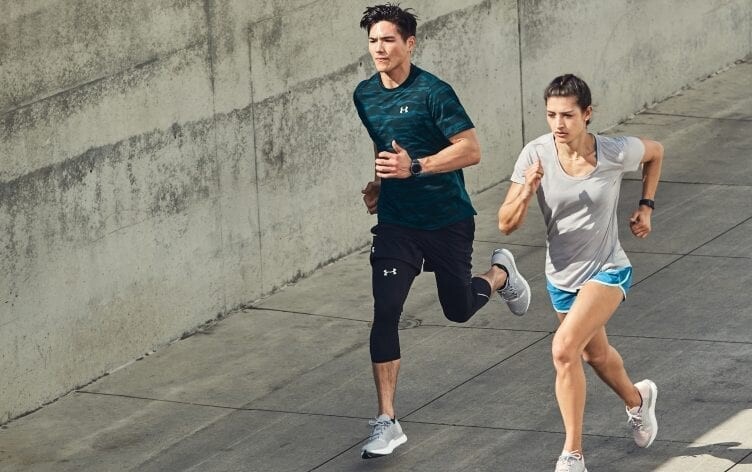
The first step to an awesome workout is getting in the right mindset. Really! If you’re thinking about your to-do list or the drama on last night’s Bachelor, you might not be focusing on putting in 100%. “Before a workout, I focus on my breathing to reduce any stress from work or my commute that may be sitting with me, giving me negative feelings before hitting the gym,” Equinox trainer and martial artist Phoenix Carnevale tells SELF. You can even do a quick breathing video exercise on your phone—anything to bring you into the present moment.
2. Hype yourself up.
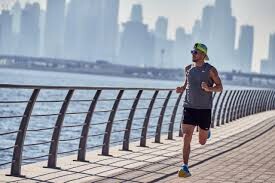
Once you’re feeling focused, remind yourself that you’ve got this. “I start with positive self-talk to prevent myself from giving up or being overly critical,” says Carnevale. “I tell myself, ‘It’s my time now.’” You can also take a few minutes before your workout to think or journal about something you love about your body and what it can accomplish, Angela Mader, trainer and founder of Fitlosophy, tells SELF. Maybe it’s that your strong legs are capable of excellent squatting form, or that your core has progressed to being able to do a push-up with your knees off the ground. Whether you jot it down by hand, type something in the Notes app on your phone, or just repeat it to yourself a few times as a motto, this kind of thinking will start your workout on a grateful, positive note. And thinking positive thoughts may actually help you do better in your workout: Some research has indicated that positive self-talk leads to improved athletic performance.
3. Put on pump-up music.
Positive self-talk isn’t the only way to get in the right mindset. “It always comes down to music for me,” Amelia DiDomenico, CPT, owner of Amrose Fitness, tells SELF. One of her top workout tips is to repeat her favorite tracks a few times during her training session. Making a soundtrack of your most-loved jams won’t just put you in a good mood; it may also improve your workout performance. Various small research efforts have found positive associations here, such as a 2020 Perceptual and Motor Skills study, which concluded that people who listened to “preferred music” (music they liked) during their warm-up had improved exercise performance compared with listening to no music—but listening to nonpreferred music (music they didn’t like) did not boost performance.
(02/04/2022) ⚡AMPby Colorado Runner
2022 Miami Marathon will celebrate 20 years this weekend
One of the largest running events in the world is celebrating decades in South Florida.
“We had our sights on being a big race,” said co-founder Frankie Ruiz. Twenty years later, the Miami Marathon is one of the biggest in the running world.
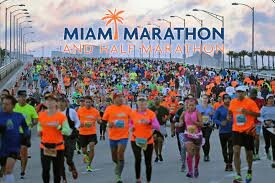
From its inaugural with only 3,400 runners to now having an average of 25,000, its become an international renowned running event.
“Ninety-nine point nine percent of the people that run this race aren’t doing it for a living or a profession,” said Ruiz. “The rest are just like me who are just having a good time sharing community, sharing a common goal that day.”
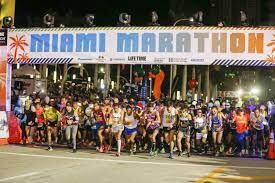
There have been some big names running some record times here in the magic city. The best time so far was just over two hours.
Like many other events, the Miami Marathon is returning for its 20th year after going virtual last year due to COVID-19.
They are seeing the demand from their participants as the race sold out back in November.
“Now, what I think we have is all this pent up demand,” Ruiz said. “We deferred a lot of those entries of people that were registered, because a whole lot of people registered for 2021. We pushed those over to 2022, and I think there’s definitely a greater sense of health and well-being and wellness and so forth and that’s why we’re seeing the demand in the sport right now.”
Twenty-six miles of roads across South Florida will transform into one the best courses in the country.
(02/04/2022) ⚡AMPby Alex Browning
The Miami Marathon
Over the past 16 years of the existence of the current Miami Marathon, there was only just over 90 athletes who had run every single event. Before the inception of the Miami Marathon as we know it now (est. 2003), the race was originally known as the Orange Bowl Marathon which began in the late 1970s. One of our very...
more...This is why you should master distance before speed
If you are a new runner, it’s tempting to focus on building your speed from the get-go, but you may want to focus on improving your distance first. The best way to increase your aerobic capacity is to start building an endurance base. As you build up your endurance, your speed will naturally improve.
Once you have established some stamina over your goal distance, you can begin incorporating speed. Many runners will mix up their training routine by combining distance runs with shorter, faster workouts. The shorter workouts will help maintain your strong endurance base and ensure that you are getting the most out of your training.
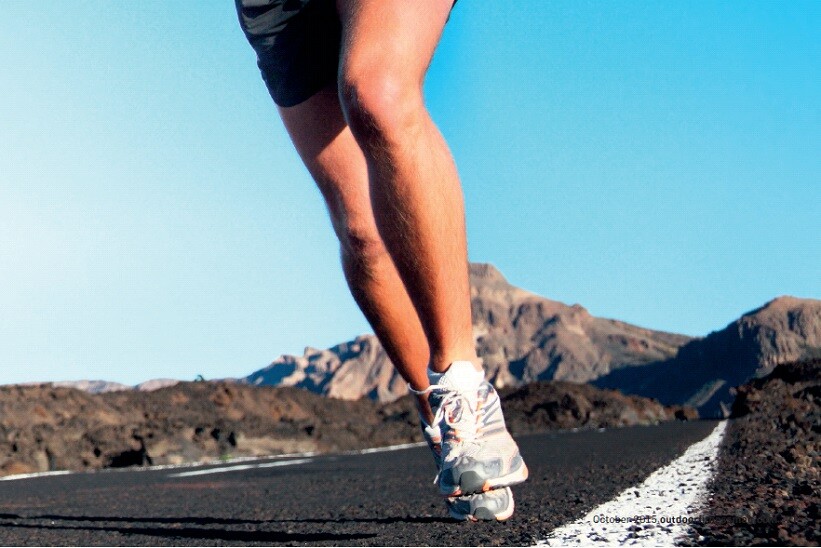
The risk that comes with starting speed before endurance is the potential for injury. If you are pushing your body to the maximum effort without any prior training, the chance of injury is relatively high.
When you are ready to begin speed training, start with a few high-intensity intervals. For example, five reps of one minute fast and one minute slow jogging. This workout will get your heart rate up and allow you to test out top-end speed over a short duration.
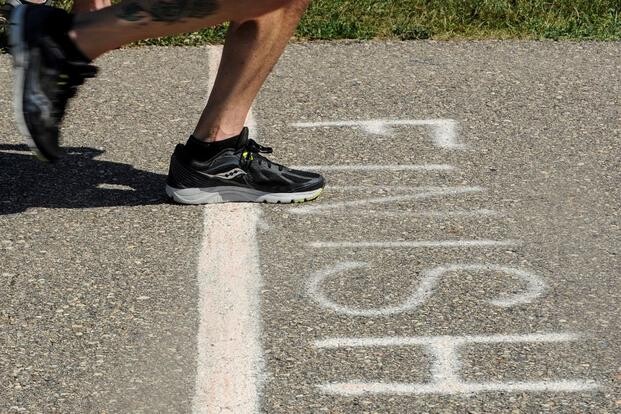
Another thing beginners can incorporate early is strides. Strides are short accelerations or sprints that last for a total of 15 to 20 seconds or 50 to 100m. The idea is to run strides at about 90 per cent of your maximum effort while focusing on keeping the body upright and relaxed.
The key to doing strides is to slightly push yourself outside of your comfort zone without tensing up. Most runners will start to incorporate strides on their easy runs after a few weeks of building endurance.
(02/04/2022) ⚡AMPby Marley Dickinson
New study finds more nature exposure on a run improves the route
We know that the right running route can make or break your run, but new research published in The Journal of Urban Forestry suggests that greater nature exposure leads to greater perceived satisfaction and that runs with traffic lights are less satisfying.
Although it is no surprise to anyone that routes with too many traffic lights can ruin a run, previous research indicates that running in a natural environment can ignite feelings of revitalization, engagement and can decrease depression.
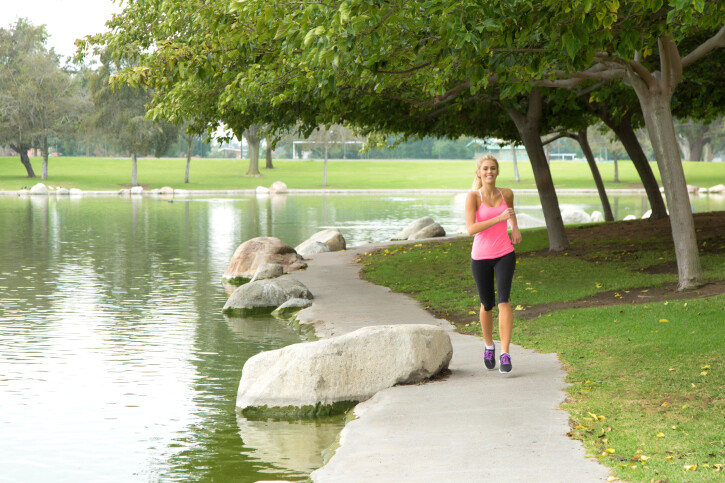
The connections to nature are several reasons why the sport of trail running has gained popularity in the past 20 years.
The study
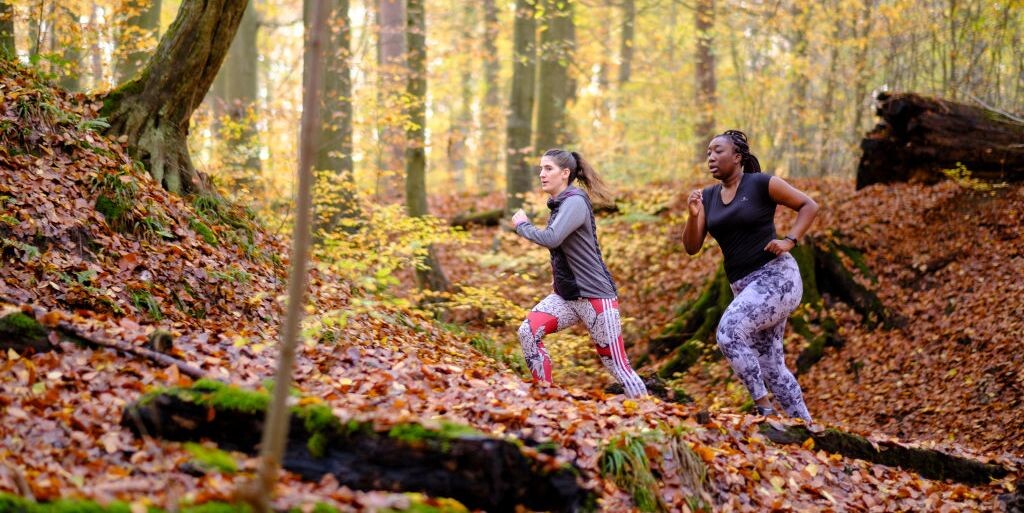
The data was collected from 249 runners in Helsinki, Finland, then was assessed in terms of the correlations between running satisfaction and nature exposure. The analysis revealed that runners prefer and are often more satisfied when exposed to or surrounded by nature.
Runs with less nature and more traffic lights were found to break momentum and were inversely related to running satisfaction. The analysis also reported the participants experienced higher satisfaction running outdoors compared to indoors.
The positive impacts of nature exposure on running satisfaction further verify the connections between the environment and well-being.
(02/03/2022) ⚡AMPby Marley Dickinson
Team Ingebrigtsen head coach Gjert Ingebrigtsen steps down for health reasons
World-famous distance coach and father of 1,500m Olympic champion Jakob Ingebrigtsen, Gjert Ingebrigtsen is stepping down as his sons’ coach for health reasons, Norway’s Stavanger Aftenbladet reports. The Ingebrigtsens will continue coaching themselves as they prepare for the World Indoor Championships in March and World Championships later this year.
Over the years, Gjert has coached all seven of his kids through athletics, most notably, Jakob, who rose to become the Olympic 1,500m champion at age 20.
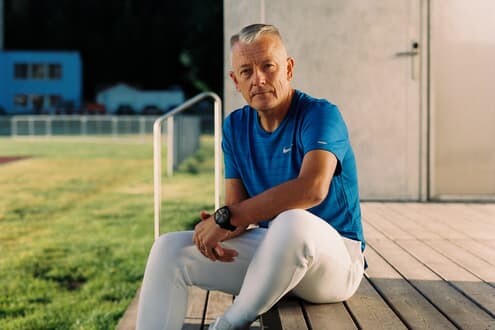
Gjert has famously coached three of his sons to three European 1,500m titles: Henrik Ingebrigtsen (2012 European gold), Filip Ingebrigtsen (2016 European gold), and Jakob (2018 European gold). The three boys all have personal bests for 1,500m under 3:32, with Jakob holding the Olympic record of 3:28.32, which he set in his gold-medal-winning performance at Tokyo 2020.
Gjert also helped lead Norway to European Cross Country gold at the 2021 European championships.

The Aftenbladet also reported that the brothers’ younger sister, Ingrid Ingebrigtsen, 15, who ran 4:42.04 over 1,500m, is taking a leave from athletics.
Jakob and Filip have both confirmed that they will be racing in the 1,500m at World Athletics Indoor Tour Gold meet in Lievin, France, on Feb. 17. Jakob will most likely have his eyes on the world indoor record of 3:31.04.
No further information on Gjert’s health has been released.
(02/03/2022) ⚡AMPby Marley Dickinson
Study says running can help ward off joint and muscle pain in later life
Want another reason to love running? A new study has shown that doing vigorous exercise such as running at least once a week helped to lower the risk of bone, muscle and joint pain in later life.
The University of Portsmouth study gathered data from 5,802 Brits aged 50 and above. It found that the key to staving off joint pain in ageing was vigorous activity as opposed to moderate exercise.
The study, ‘Associations Between Pain and Physical Activity Among Older Adults’, published in the Plos One journal, tracked participants over a 10-year period, and at the end of the research period around half said that they suffered with bone, joint or muscle pain.

Dr Nils Niederstrasser, who led the study, said that chronic pain is one of the most widespread and complex problems in the medical community. ‘It leads, for many who suffer with it, to a lower quality of life and poor wellbeing.
‘It’s well known that pain tends to be more common as we age, so it’s vital we look at what might help prevent and reduce it.’
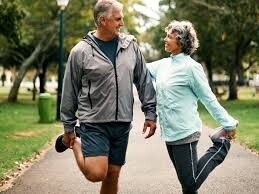
The results found that any type of activity helped lower the chances of suffering from pain when compared to remaining sedentary, but high levels of physical activity in particular were linked to lower cases of musculoskeletal pain. ‘Activity needs to not only be vigorous, it needs to be done at least once a week,’ added Dr Niederstrasaser.
‘Vigorous’ can be classed as running, swimming or playing tennis, whereas dancing or walking was categorized as a moderate exercise and did not have the same results in terms of reducing joint pain.
(02/03/2022) ⚡AMPby Howard Calvert
Asics has become new brand sponsor of TCS Toronto Waterfront Marathon
Canada Running Series announced on Feb. 2 that the Japanese footwear brand Asics will serve as the official partner for three Canada Running Series races: the TCS Toronto Waterfront Marathon, 21K de Montréal and Vancouver Half Marathon.
Asics will serve as the official merchandise brand and will support athletes with exclusive personalized training programs through the Asics Runkeeper app.
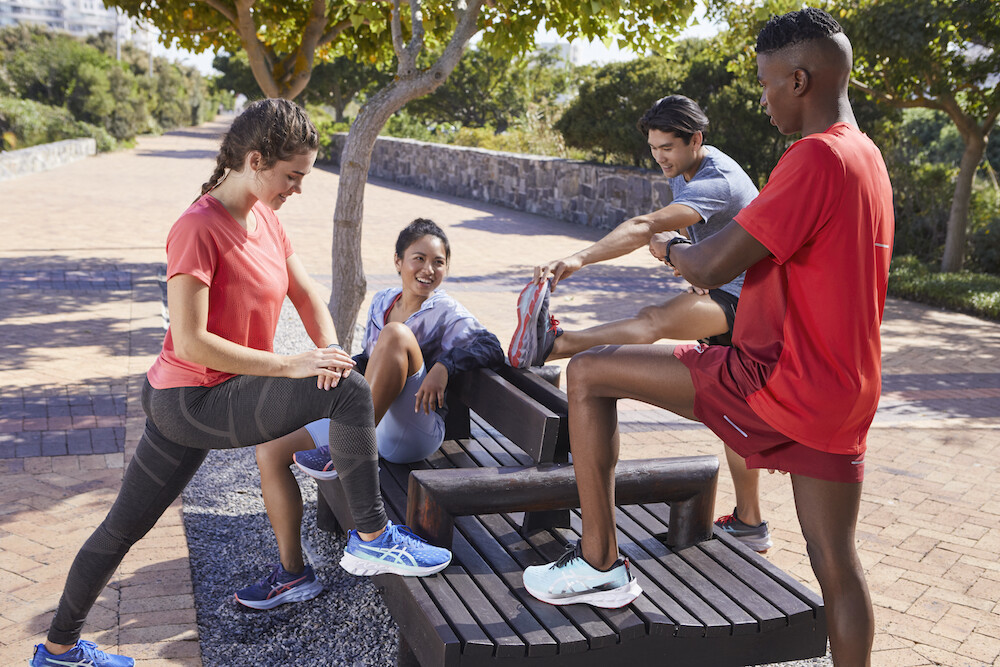
Canada Running Series will also continue using Race Roster, which is a world-leading race registration platform out of London, Ont. and a recent brand acquisition from Asics. Race Roster has been affiliated with hosting registration for CRS events since 2016 and was the title sponsor of Toronto’s High Park Spring Run-Off 8K between 2016 and 2019.
This five-year sponsorship deal will begin in 2022 and will see Asics expand the brand to various platforms and bring high-performance-running products to support each CRS race.

“We are immensely proud to partner once again with Asics and leverage their extensive knowledge of race technology to enhance race experience,” Charlotte Brookes, Canada Running Series’ national event director said in a press release. “The partnership between Asics and the Runkeeper app, plus Race Roster will allow us to continue driving positive change for both virtual and in-person racing.”
In-person and virtual registration is now open for all three Canada Running Series events. The 21K de Montréal will be held on April 23-24, 2022, while the Vancouver Half Marathon is set for June 26, 2022, and the TCS Toronto Waterfront Marathon will take place on October 16, 2022.
(02/03/2022) ⚡AMPby Marley Dickinson
TCS Toronto Waterfront Marathon
The Scotiabank Toronto Waterfront Marathon, Half-Marathon & 5k Run / Walk is organized by Canada Running Series Inc., organizers of the Canada Running Series, "A selection of Canada's best runs!" Canada Running Series annually organizes eight events in Montreal, Toronto and Vancouver that vary in distance from the 5k to the marathon. The Scotiabank Toronto Waterfront Marathon and Half-Marathon are...
more...Asbel Kiprop seeks track comeback as doping ban ends
Kenya's former Olympic and three-time world 1500m champion Asbel Kiprop has vowed to make a successful return to the track after his four-year doping ban elapsed on Wednesday.
Kiprop, 32, was suspended in April 2019 for taking the blood-boosting drug EPO but he has always protested his innocence.

"I was falsely accused of doping. But I have accepted my fate, served my time and now I am ready to return to the track," he told AFP.
He said his main target was the World Championships at Hayward Field, Oregon in June.
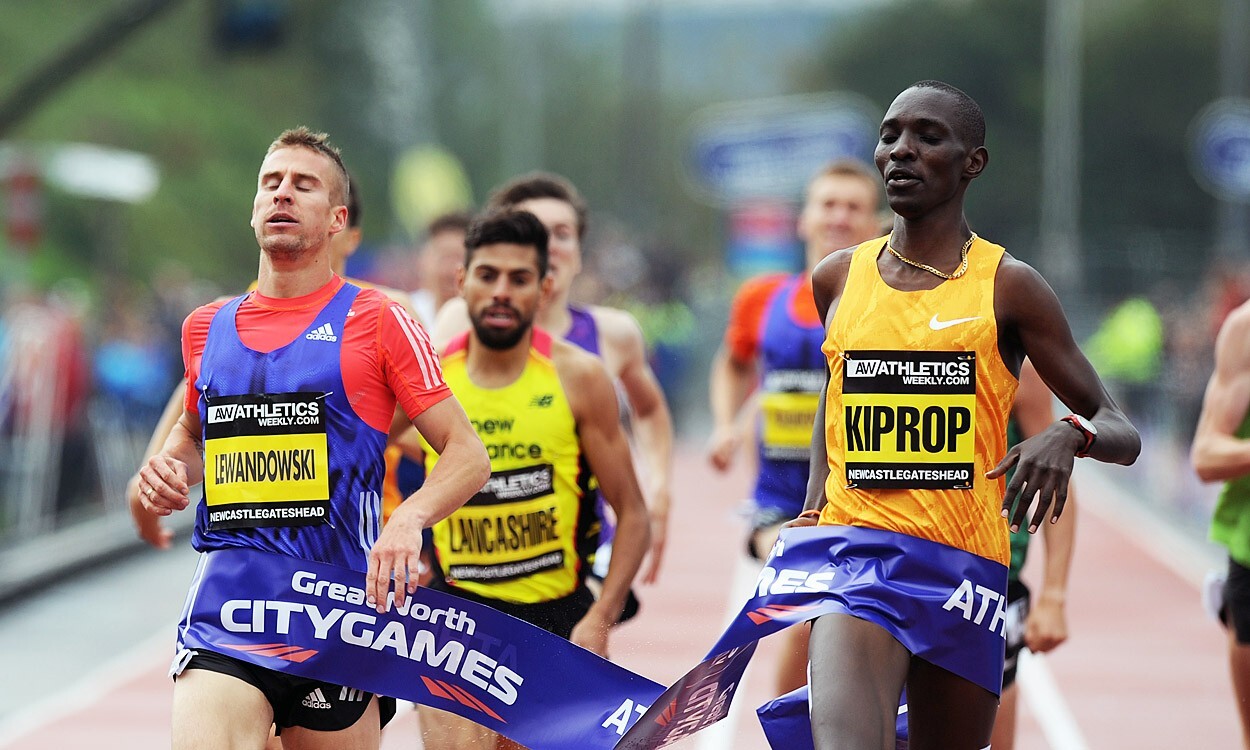
Kiprop became the first Kenyan to win the 1500m gold at the world championships in Daegu, South Korea in 2011.
He went to win two more world titles in 2013 and 2015 to add to the 2008 Olympic gold medal he was awarded after the original winner, Rashid Ramzi of Bahrain, tested positive for doping.
Kiprop, a police chief inspector, said he will make his domestic return at the Kenyan police track and field championships in Nairobi on April 6, where he will seek selection for the national championships and the world athletics trials.
But he will skip the 1500m and instead compete in the 800m, which was his initial event as a junior athlete.
"I want to start small and win for my employers, the Kenya police, who diligently stood by me all the four years," said Kiprop.
"I want to begin like an amateur," he quipped. "It is going to be a hard time since I have to shed my weight by five kilogrammes (11 pounds). I want to post good times and progressively go up the ladder and qualify to represent Kenya again."
"I don't anticipate any opposition from the Kenyan athletics federation, which have in the past refused to accept athletes who have served major doping suspensions from competing for the country due to the negative publicity that accompanies them."
Kiprop said he has undergone four out-of-competition tests since December, and was happy to be back in the approved list of Anti-Doping Association of Kenya (ADAK) accredited athletes.
(02/02/2022) ⚡AMPby
Jake Wightman will lead strong 1500m line-up at Müller Indoor Grand Prix
Birmingham event on February 19 features Wightman, Neil Gourley, Piers Copeland, Charlie Da’Vall Grice and more
Olympic finalist Jake Wightman leads a strong British contingent in the men’s 1500m at the Müller Indoor Grand Prix – a World Athletics Indoor Tour Gold meeting – at the Utilita Arena in Birmingham on Saturday February 19.
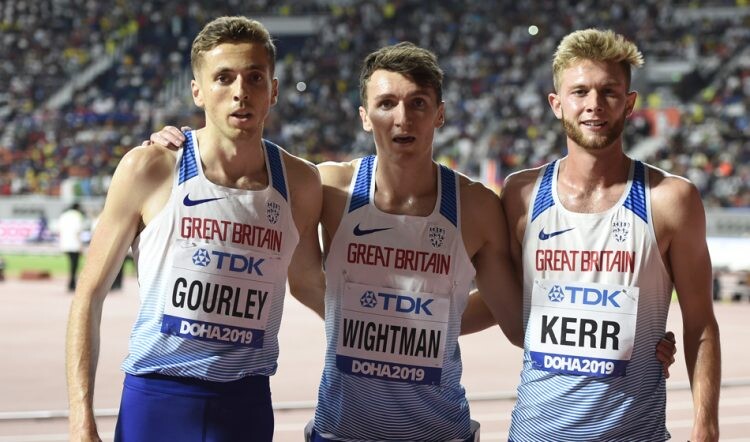
The European and Commonwealth bronze medalist was 10th in Tokyo and is the Scottish indoor 1500m record-holder (3:34.48). The British record, held by Peter Elliott since 1990, is 3:34.20.
In what promises to be an enthralling domestic showdown, Wightman, who opened his season with a 7:50.97 3000m PB at the BMC Grand Prix in Sheffield on January 9, is joined by Piers Copeland, Archie Davis, Neil Gourley, Charlie Da’Vall Grice, George Mills and James West.
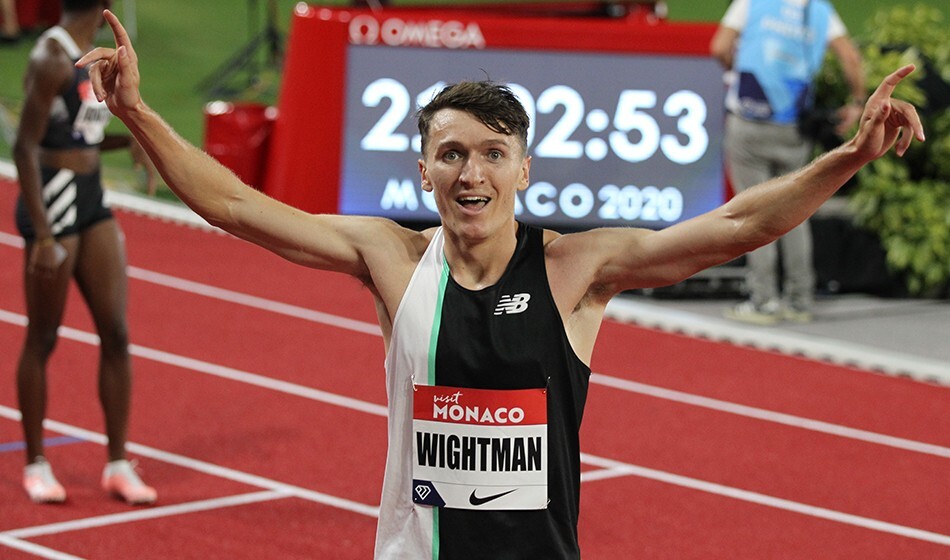
In-form Gourley, a World Championships finalist in Doha 2019, ran an outright 5000m PB (13:34.35) – the best indoor performance by a Scottish athlete over the distance – in Boston in December, and most recently clocked an impressive 7:48.94 3000m PB at the Razorback Invitational in Arizona on January 28. His 3:35.79 1500m best, which ranks him seventh on the Scottish all-time list, was achieved at the World Indoor Tour meeting in Toruń, Poland, 12 months ago.
Da’Vall Grice, Olympic 1500m finalist in Rio 2016, is the British indoor 1000m record-holder (2:17.20) with a 1500m PB indoors of 3:38.95, while Copeland is the Welsh indoor record-holder over 1500m (3:38.55). Both athletes are European Indoor Championships finalists, finishing fifth in 2015 and 2021 respectively.
West, who opened his season with a 7:59.96 3000m at the Millrose Games, has run 3:36.93; Mills is the reigning national indoor 1500m champion and has a best of 3:39.25; and Davis has an indoor 1500m best of 3:41.18.
“After running 3000m indoors, I’m looking forward to dropping back down to 1500m and hopefully challenging my Scottish record,” said 27-year-old Wightman.
“This is a special time for British endurance running and it’s a privilege to have the opportunity to compete against these guys in Birmingham. We’ve seen what’s possible by our athletes on the global stage and that provides us with inspiration every day to do even better. I hope we can deliver some fast times, possibly even a British record, and a great race for the home crowd.”
The Müller Indoor Grand Prix is the fifth meeting of the 2022 World Athletics Indoor Tour (Gold). There are seven ‘Gold’ level meetings across the series which started with Karlsruhe on 28 January and concludes in Madrid on 2 March.
Throughout the series, each athlete’s best three results will count towards their overall point score. The athlete with the most points in each scoring discipline at the end of the tour will be declared the winner and will be awarded a USD$10,000 bonus along with a wild card entry for the World Athletics Indoor Championships Belgrade (March 2022).
(02/02/2022) ⚡AMPby Athletics Weekly
Muller Indoor Grand Prix Birmingham
The Müller Indoor Grand Prix Birmingham is one of the leading indoor meetings in the world with world-class athletics as part of the World Indoor Tour Gold series. The event will be staged at its traditional home at Utilita Arena Birmingham setting the tone for what is set to be an incredible year of track & field. ...
more...Joel Ibler Lillesø breaks Ingebrigtsen’s European indoor U20 3000m record in Sollentuna
Reigning European U20 5000m champion Joel Ibler Lillesø from Denmark bettered one of Jakob Ingebrigtsen’s many European U20 records in Sollentuna, Sweden on Saturday (29) afternoon.
Only 18, Lillesø shaved three seconds off Ingebrigtsen’s European indoor U20 3000m record with a 7:48.34 clocking to erase the Norwegian’s previous record of 7:51.20 which was set in the heats at the 2019 European Athletics Indoor Championships in Glasgow.
Lillesø was ably paced in the early laps by world class 1500m runner Kalle Berglund before embarking on a tough last six laps single-handedly. His winning time was a qualifier for the World Indoor Championships in Belgrade and also puts the national senior record of 7:44.76 into view.
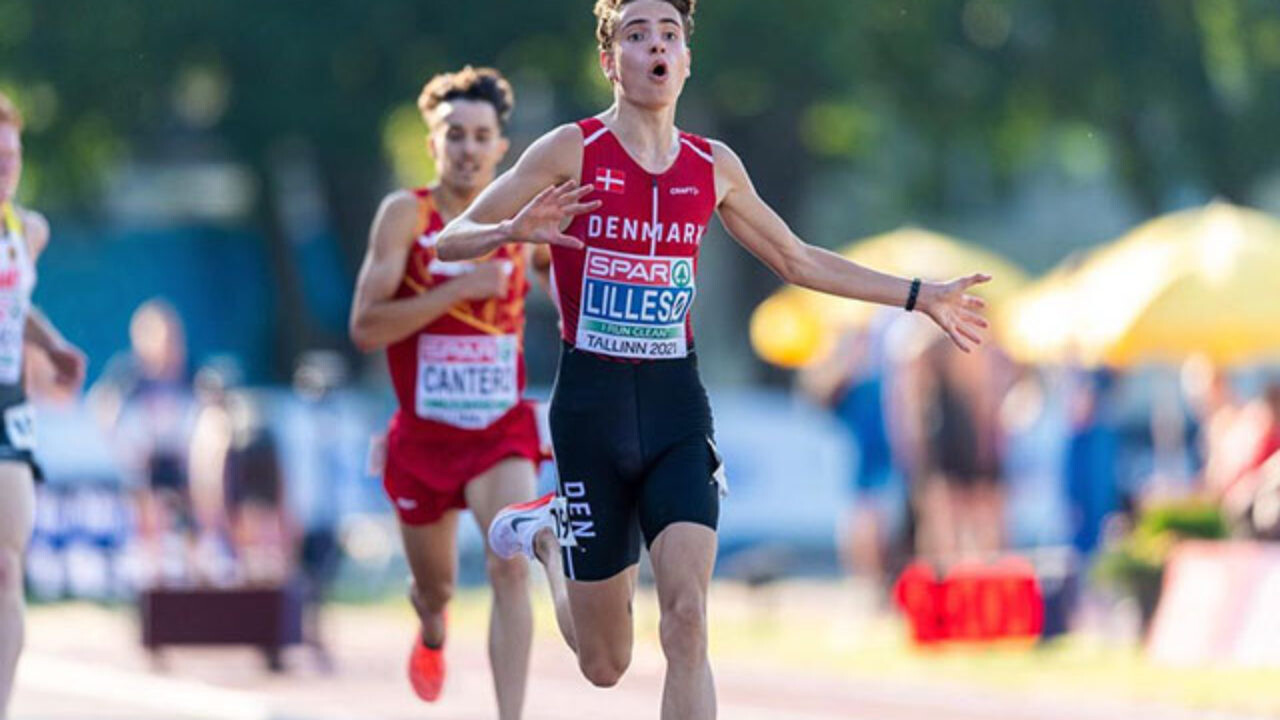
Lillesø is part of an emerging group of Scandinavian distance runners who are following Ingebrigtsen through the age-group ranks. After winning U20 5000m gold in Tallinn, Lillesø won individual bronze in the U20 race at the SPAR European Cross Country Championships behind Danish teammate Axel Vang Christensen and Norway’s Abdullahi Rabi to ensure a Scandinavian clean sweep.
Lillesø's next race will be on the roads in the Monaco 5km on 13 February.
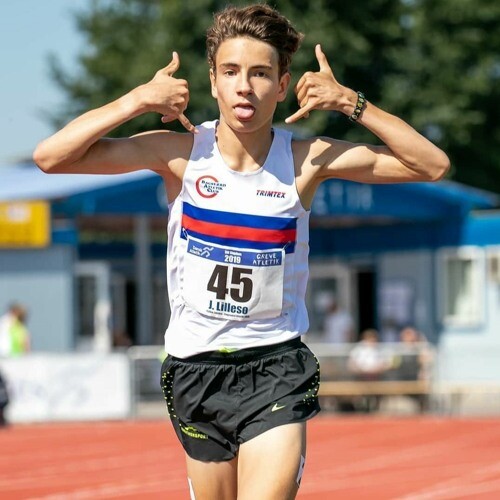
This was a particularly brilliant weekend for Danish athletics. As well as Lillesø’s European indoor U20 record, Benjamin Lobo Vedel set a Danish indoor 400m record of 45.95 in Baerum, Norway on Saturday and Ida Karstoft also clocked a Danish indoor 200m record of 23.36.
And two more Danish records were broken in Randers on Sunday (30). Kojo Musah shattered the Danish indoor 60m record on home soil with 6.56 to move to second on the 2022 European list and Mathilde Kramer also revised the Danish record in the women’s 60m with a 7.31 clocking.
Bekh-Romanchuk bounds out to 14.34m triple jump
Maryna Bekh-Romanchuk might be known first and foremost as a long jumper but the reigning European indoor champion made a hugely promising senior debut in the triple jump at the Ukrainian Indoor Team Championships in Sumy.
Contesting the event for the first time in nine years, Bekh-Romanchuk bounded out to a European leading mark of 14.34m off an abbreviated approach as well. Her winning effort was also accompanied by four more jumps in excess of the 14 meter-line.
At the Top Perche Plus pole vault meeting in Nevers on Saturday, Menno Vloon from the Netherlands cleared 5.86m before three attempts at 6.02m which would have equalled Mondo Duplantis' world lead from Karlsruhe on Friday evening. Belarus' Iryna Zhuk won the women's competition with a 4.60m clearance ahead of former world champion Yarisley Silva from Cuba with 4.52m.
Ahead of the DNA International match in Glasgow on Saturday, Molly Scott equalled her Irish 60m record with 7.27 before breaking it outright with 7.23 in Athlone on Saturday while European U23 cross country silver medallist Darragh McElhinney won the 1500m in 3:42.89.
In Apeldoorn on Saturday, Isayah Boers clocked a fast 46.36 in the 400m and Taymir Burnett won the 60m in 6.62.
(02/02/2022) ⚡AMPby European Athletics
Improve your balance, mobility and core with this Bosu ball workout, to put your body through strategic movements that complement your running and posture
In the January 2022 issue of Canadian Running, strength and conditioning coach Jon-Erik Kawamoto presents a challenging new workout focused on mobility and core for runners, using a BOSU Balance Trainer. This routine is designed to put your body through strategic movements that complement your running as well as the day-to-day sitting posture.
If you’ve ever been to a physiotherapy clinic, chances are you are familiar with the half-ball platform device commonly referred to as a Bosu, which is used to challenge your balance. The ball can provide good cushioning for core exercises and is useful as a prop for certain mobility exercises, such as split stance squats and single-leg balance exercises.
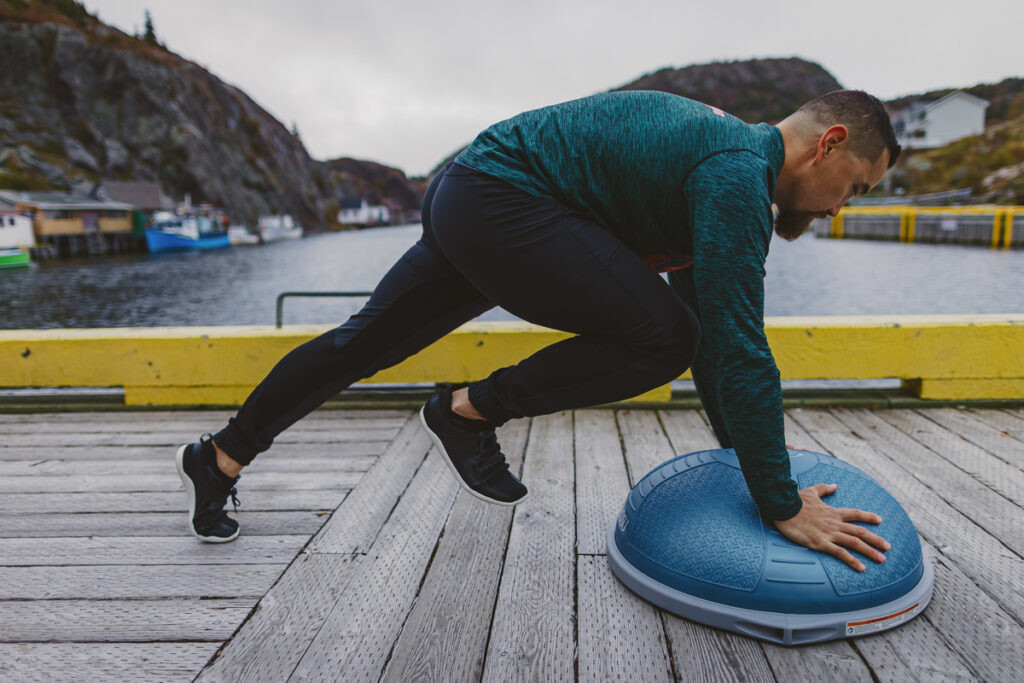
If you do not have a Bosu ball, you are likely to find one at your local gym, or you can find one at your local fitness shop or online.
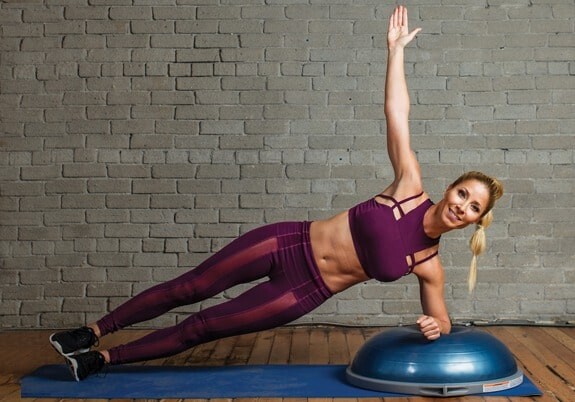
Training mobility, improving posture and performing movements outside the running pattern not only improve your body’s movement literacy (i.e., your athleticism) – they also create a more resilient body, allowing you to get through your running season with less risk of overuse injury.
Do this routine once or twice a week, completing two to four sets. Take minimal rest between exercises and a 90-second rest between sets.
(02/02/2022) ⚡AMPby Marley Dickinson


